The KCCU Blog
KCCU is thrilled to announce they have been honored as one of America's Best Credit Unions for 2024 by Newsweek, placing them in the top 250 credit unions in the nation!
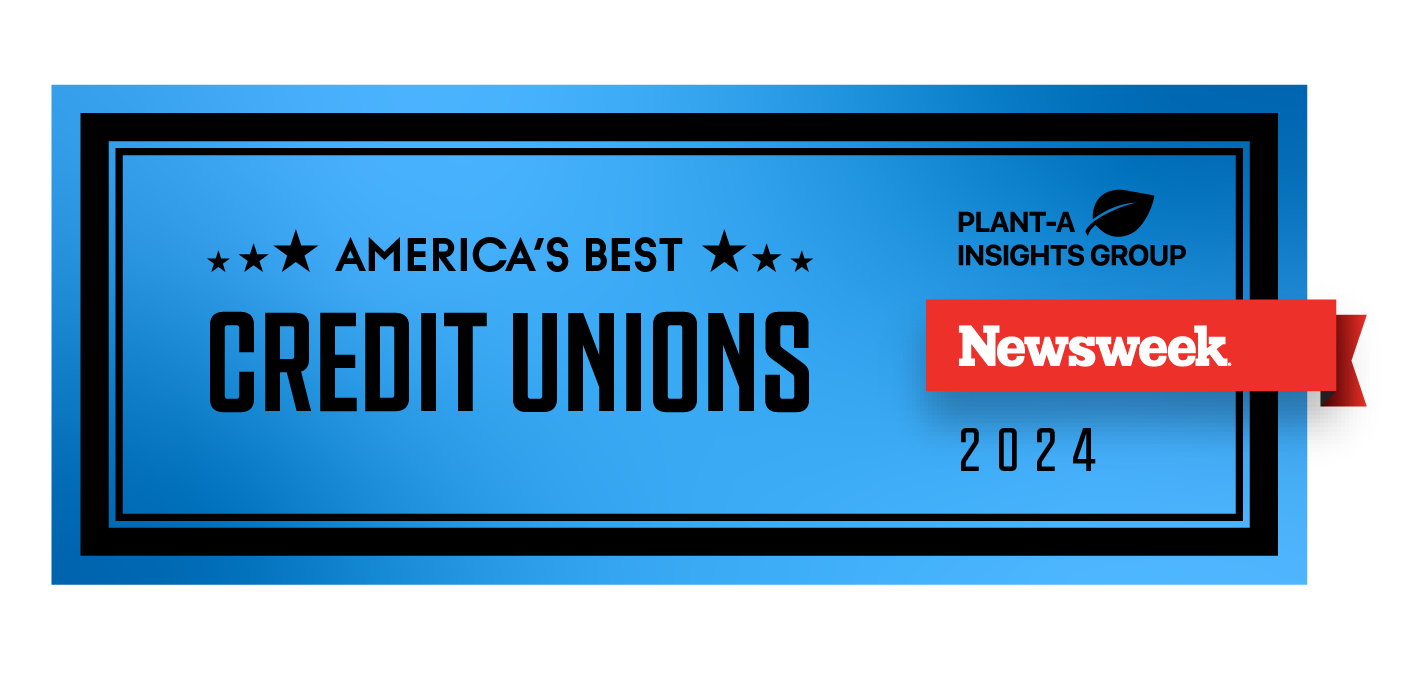
Newsweek, in partnership with the market research firm Plant-A Insights Group assessed over 9,440 financial institutions, obtained feedback from over 35,000 members, and evaluated 149 million online reviews. In their results, they spotlighted the top 250 credit unions in the United States on Newsweek.com, and KCCU is honored to be named to this list! Credit Unions were highlighted in their own category as being recognized that they are a financial cooperative owned by their members.
Plant-A Insights Group based their assessment on factors of the financial institutions profitability, lending activity, overall financial health and stability, operational performance, and reputation.
“This award is a true testament of how committed we are to providing our members with the best value and service possible to help them reach their financial dreams,” stated Tracy Miller, KCCU’s CEO. “I cannot express enough how grateful we are for the dedication of our team, and the loyalty of our members to the credit union.”
“Regional banks and credit unions play a pivotal role in meeting the needs of communities across the nation. Newsweek and market-data research firm Plant-A Insights are proud to announce, “America’s Best Regional Banks and Credit Unions 2024,” highlighting local lenders that are committed to the needs of their communities.” – Nancy Cooper – Global Editor in Chief – Newsweek
You can find more detailed information on Newsweek’s website, www.newsweek.com/rankings/americas-best-regional-banks-credit-unions-2024.
KCCU Toy Drive 2023
Donations accepted at all branches now through December 15th
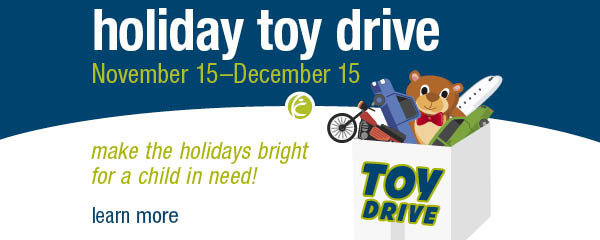
Kellogg Community Credit Union (KCCU) is excited to begin their annual toy drive for children who may not otherwise receive a gift during the holidays. This will mark the twenty-first consecutive year that KCCU will collect toys and gifts for children in need.
KCCU is partnering with the Salvation Army to have Angel Trees at all their Battle Creek, Kalamazoo, and Grand Rapids locations. The Three River’s branch will support the St. Joseph County United Way toy drive for local foster children, and the Marshall Branch is partnering with There’s Enough. These charitable organizations are looking for new toys, games, or gift cards for children ages infant to 17 years old. Donations can be dropped off at a KCCU branch now through December 15th and the gifts should be unwrapped. By making a toy or gift card donation to one of these programs, you can directly impact a child in West Michigan while sharing the joy of the holidays!
“At KCCU we believe the real magic of the holiday season lies in helping others. We are thrilled to host our annual toy drive to provide gifts to the children and teens in our community again this year.” says Tracy Miller, CEO of KCCU. “We welcome both KCCU Members and the community to come together to make a difference in a child’s life this holiday season by donating a toy or gift card. Together we can make a child’s holiday brighter.”
KCCU Winter Coat Drive 2023
Donations accepted at all branches October 1st-31st

Kellogg Community Credit Union (KCCU) is ready to kick-off its annual coat drive to help the members of the communities in which they serve stay warm this winter. The coat drive will run from October 1st – 31st, and items can be dropped off in the lobby at any KCCU branch location. Financial hardship can make it difficult for some families and individuals to ensure that they’ll be dressed properly this winter, making this annual coat drive arrive at the perfect time. KCCU knows their team, members, and the community will come together and show support for this worthy cause, as they have done for many years past.
KCCU is adamant about helping to provide cold weather gear to those who may need assistance, so they are collecting new and gently used coats, snow pants, hats, mittens, and scarves, that are clean and in good condition, in all sizes from adults to infants and everything in-between. Then the items that are collected will be distributed to local families in need by our community partners.
“KCCU is passionate about being able to support the communities that we serve in any way that we can. With the cold months quickly approaching we want to ensure that members of our community have the cold weather gear they need to stay warm,” stated KCCU’s CEO, Tracy Miller. “This is just one of the ways we can give back to the community and live out our people helping people philosophy. And working together, we know we can make a positive impact on the lives of the families and individuals who may need some assistance this year. It’s an honor to partner with our wonderful charitable organizations to support our local initiatives. A heartfelt thank you goes out to everyone who donates to our Coat Drive!”
KCCU’s vision statement includes “providing opportunity and lifelong value to our members and our community.” KCCU takes this statement seriously, and for the past nineteen years they’ve hosted a Coat Drive in partnership with community-based organizations, as part of their commitment to their vision.
2023 teacher grant recipients
August 25, 2023


Left: Gillian Wilk from KCCU presents check to Patti Kuenzel. Right: Gillian Wilk from KCCU presents check to Erin Andrews
Kellogg Community Credit Union (KCCU) is thrilled to announce that for the third year in a row, they offered their Teacher Grant Program and awarded teachers throughout West Michigan with grants for their classrooms.
KCCU understands that great educators are always seeking innovative ways to foster impactful learning experiences, and often use their own funds to purchase additional classroom supplies. They wanted to offer support to these deserving educators, and they did by providing funds to fifteen teachers, each of them receiving $400 to purchase classroom supplies. That is a total of $6,000 going back into local classrooms!
“At KCCU, we are committed to helping teachers who are educating our students and future leaders,” said Tracy Miller, KCCU’s CEO. “We know that teachers work hard and put in a lot of time, and often their own money, to help their students learn and thrive. Our hope is with these grants, educators can get the tools and resources needed for their students to succeed in the classroom.”
“I love teaching because I love to share in the joy with other people, especially my students,” said Patti Kuenzel, third grade teacher at St. Joseph Elementary and recipient of a KCCU Teacher Grant. “I am going to use my grant money to purchase things like chair cushions, bouncy bands for those kids who have to keep moving their feet all day, and water bottle holders for their desks; all kinds of things to bring joy to the classroom."
“One of the things I love most about being an educator is being able to offer a safe and inclusive space for all students to be able to grow and learn,” said Erin Andrews, teacher at North Penn Elementary and recipient of a KCCU Teacher Grant. “I am going to use the grant money to purchase STEM (Science Technology Engineering Mathematics) supplies to help my students with problem solving and critical thinking skills.”
Here is a complete list of the 2023 teacher grant recipients
- Amber - Parchment Highschool
- Erin - Lincoln International Studies
- Haylee - Gull Lake Community Schools
- Heather - Delton Kellogg Elementary
- Jessica - Comstock STEM Academy
- Makayla - Norton Elementary
- Laura - Union City Elementary
- Chelsea - Ann J. Kellogg
- Erin - North Penn Elementary
- Karen- Harper Creek Middle School
- Meghan - Marshall Academy
- Shannon - Westlake Elementary
- Shayna - Southeastern Elementary
- Susan - Mar Lee School
- Patti - St Joseph Elementary
The KCCU Teacher Grant Program is open to all educators, Pre-K through grade 12, who teach within the 15 counties that KCCU serves.
Track your spending for financial wellness
Tracking your spending is the first step toward greater financial awareness and, ultimately, toward financial health. However, mastering this skill is easier said than done. How can you track every dollar you spend when you make multiple purchases each day?
We’ve outlined how to track your spending in 3 easy steps.
1. Choose your tools
Tracing every dollar’s journey isn’t easy, but with the right tools, you can make it quick and simple. Choose from one of the following money-tracking techniques:
Budgeting apps
If your life happens on your phone, you can download a budgeting app like YNAB or Mint to help you track your spending. Both apps allow you to allocate a specific amount of money for each spending category monthly and will enable you to track your spending with just a few clicks. It’s important to note that YNAB is not a free app, but that it may be worth the price for users who want to take on a more active role in their money management.
Spreadsheet
If you like to see everything spelled out clearly, a spreadsheet might be a better choice for you. You’ll need to record every transaction, but if you prepare the sheet with all the spending categories you think you’ll need, this step shouldn’t take long at all.
The envelope system
If you’re a big cash spender, consider withdrawing the cash you think you’ll spend in a month (or in a week) and keeping it in an envelope designated for each category. When you need to make a purchase, just use money from the envelope.
Receipts
Hold onto every receipt from the purchases you make this month to help you track your spending.
Pencil and paper
Recording each purchase, the old-fashioned way can help you make more mindful money choices throughout the day. Be sure to keep a steady supply of both writing instruments handy at all times so you never miss a purchase.
2 . Review your statements carefully
Along with one of the tools listed above, you can track the purchases you make using plastic by reviewing your monthly checking account and credit card statements at the end of the month. You may receive your statements in the mail, or you can access them online by logging into your account and downloading your statements.
3. Review and categorize your purchases
At the end of the month, use your chosen tool to review all the purchases you’ve made throughout the month. If you’ve used an app or a spreadsheet, adding your purchases to find the total amount of money spent will be simple. The app or spreadsheet may have already helped you divide the money spent into separate categories as well. Similarly, if you’ve used the envelope system, you should know how much you spent on each kind of purchase this month. However, if you’ve chosen another method to track your spending, you’ll need to crunch some numbers to get an accurate picture of your spending habits.
When completing this step, don’t forget to include any automated payments you may rarely think about, such as subscription fees and insurance premiums.
Tracking your spending and identifying your money drains is the first step toward greater financial awareness and responsibility. Use the tips outlined here to successfully master the skill of tracking your spending.
Building A Financial Future Using the Building Blocks Approach
How do you choose what financial information to impart to kids, and what is important? Perhaps surprisingly, according to the Consumer Financial Protection Bureau (CFPB), the most important money lessons have nothing to do with money.
That’s the central theme of this report, Building Blocks to Help Youth Achieve Financial Capability. This report, available online from the CFPB, breaks down financial literacy into three skills: executive function, financial habits and norms, and financial knowledge and decision-making. This conclusion comes from a fusion of educational research and social psychology and is an important guide for parents.
Financial knowledge and decision-making are the most often included elements in financial literacy. It’s the stuff you know. Financial habits and norms are the behaviors and conditions children come to expect. Some of this can be taught, but it’s mostly a matter of observation and socialization. Kids pick up these habits and norms from watching their parents and other adults.
Most importantly, the skill of executive function can be developed even at ages when most financial knowledge cannot. Executive function is the ability to control impulses, make and stick to plans, direct attention, and other related tasks. New psychological research suggests that these are all skills where a form of training is needed; the more we practice paying attention to something, the better we’ll get at it. Best of all, this ability can be developed at any age.
Executive function, in addition to being the most teachable skill in the report, is also the most important. Kids with developed executive function skills will find it easier to learn new information and practice new skills while also positioning themselves for future success. Of all the factors summarized in the report, kids with strong executive function skills tended to have the highest levels of financial satisfaction.
Improving executive function
Interested in improving executive function? Here are a few of the report’s recommendations:
1. Practice delayed gratification
Offer young children the choice between a small treat now and a larger one after a short period of time. Slowly increase the time increment between choice and reward. This helps to develop the skills involved in deferring instant gratification in favor of larger rewards later.
2. Planning at playtime
Before a play session, ask your child what toys he or she wants to play with next time. Then, after your child is done playing, ask him or her to reflect on how well the plan worked. This helps develop long-term planning skills and creates intrinsic rewards for sticking to a plan.
3. Involve your children in family planning and decision making
Wherever possible, encourage your children to participate in making plans for the household. They might get to pick one night’s dinner or pick from a few family activities for a Saturday morning. The experience of making decisions, whether in a financial context or not, will help develop those executive function skills.
Why is Credit Score so Important?
Your credit score is made up of three numbers, serving as an indicator of your financial history, wellness, and responsibility. These three little numbers can spell the difference between approval and rejection for a mortgage, a job, a rental unit, and so much more.
We have outlined how your credit score is calculated, why it matters and steps you can take to improve your score.
How is my credit score calculated?
There are three major credit bureaus in the U.S.: Experian, TransUnion and Equifax. Each one collects and shares information about your credit usage with potential lenders and financial institutions. Most lenders use this information along with the FICO scoring model to calculate your credit worthiness. The scoring model looks at the following factors when calculating your score:
- The age of your credit. How long have you had your oldest credit card? When was your first loan? An older credit history generally boosts your score.
- The timeliness of your bill payments. Are you paying all your monthly bills on time? Chronic late payments, particularly loan and credit card payments, can drastically reduce your score.
- The ratio of your outstanding debt to available credit. The VantageScore formula views consumers with a lot of available credit as a liability, while the FICO formula considers this a point in your favor.
- The diversity of your credit. Lenders want to see that you have several kinds of open credit. For example, you may be paying down an auto loan, a student loan and using three credit cards.
- The trajectory of your debt. Are you accumulating new debt each month, or slowly working toward paying down every dollar you owe?
- Your credit card usage. Financial experts recommend having several open credit cards to help boost your credit score, but this only works if you actually use the cards and pay off your bills each month. It doesn’t help much to have the cards sitting in your wallet.
How does my credit score affect my life?
Your credit score serves as a gauge for your financial wellness to anybody who is looking to get a better idea of how responsible you are with your financial commitments.
Here are just some ways your credit score can affect your day-to-day life:
- Loan eligibility. This is easily the most common use for your credit score. Lenders check your score to determine whether you will be eligible for a loan.
- The larger the loan, the stricter the requirements. A poor credit score can hold you back from buying a house, a car, or getting a personal loan.
- Interest rates on loans. Here too, your credit score plays a large role in your financial reality. A higher credit score can get you a lower interest rate on your loan, and a poor score can mean paying thousands of extra dollars in interest over the life of a loan.
- Employment. A study by the Society for Human Resources Management found that 47 percent of employers look at the credit reports of potential employees as part of the hiring process.
- Renting. Many landlords run credit checks on new tenants before signing a lease agreement. A poor credit score can prevent you from landing that dream apartment or it can prompt your landlord to demand you make a higher deposit before moving in.
- Insurance coverage. Most insurers will check your credit before agreeing to provide you with coverage. Consumer Reports writes that a lower score can mean paying hundreds of dollars more for auto coverage each year.
How to improve your credit score
If you’re planning on taking out a large loan in the near future, applying for a new job, renting a new unit or you just want to improve your score, follow these steps:
- Pay your bills on time. If you have the income to cover it but find getting things paid on time to be a challenge, consider using automatic payments. Pay more than the minimum payment on your credit cards. Your credit score takes the trajectory of your debt into account. By paying more than just the minimum payment on your credit cards, you can show you’re working on paying down your debt and help improve your score.
- Pay your credit card bills before they’re due. If you can, it’s best to pay your credit card bills early. This way, more of your money will go toward paying down your outstanding balance instead of interest.
- Find out if you have any outstanding medical bills. You may have an unpaid medical bill you’ve forgotten about. These can significantly drag down your credit score, so be sure to settle any outstanding medical bills as quickly as possible.
- Consider debt consolidation. If you’re paying interest on multiple outstanding debts each month, you may benefit from paying off your debt through a new credit card that offers an introductory interest-free period, or from taking out a personal Signature loan at Kellogg Community Credit Union. This way, you’ll only have one low-interest or interest-free payment to make each month. (Note: If you’ll be applying for a large loan within the next few months, it’s better not to open any new cards.)
It’s crucial that you make the effort to improve and maintain your credit score. It’s more than just a number; it will impact your financial wellness for years to come.
7 reasons you don’t want to skip a home inspection
1. Find deal-breakers
A house can look fantastic, but have major structural or technical issues with its wiring, roof, HVAC system, plumbing and more. A quality home inspection will give you the inside scoop on a house before it becomes your home. If the inspection reveals any large problems that would require heavy maintenance or expensive repairs, you may want to back out of the deal. Having an inspection contingency in your contract gives you a way to opt out even after you are officially under contract.
If the inspection reveals major problems, but you like the home too much to back away, you can ask the seller to fix the problems before the closing date. Sellers will usually agree to cover any major repairs or to offer the buyer a credit toward overseeing the repairs themselves.
2. Safety concerns
An inspection can reveal the presence of harmful substances like radon, carbon monoxide and mold. Look for these hazards before the home is officially yours. You don’t want any unpleasant surprises after it’s too late.
3. Anticipate future costly repairs
A home’s systems and equipment may appear to be working perfectly when they’re actually on their last legs. A professional inspector will be able to determine the age and condition of the home’s systems and equipment, and then forecast when they may need to be repaired or replaced. This might not be a big enough deal for you to back out of the contract, but it will help you budget for a major repair several years down the line. Alternatively, you may be able to use it for price negotiation.
4. Reveal illegal additions
The awesome rec room you love in the basement of your potential new home might have been illegally built. An inspection will check for rooms, garages and basements that were added or finished without following legal codes or obtaining the proper permits. Having an illegal addition in your home means owning property that does not officially exist. This can get you into trouble with home insurance and property taxes, and can make it difficult to do more work on these areas in your home.
If a home inspection reveals any illegal additions, you can ask the seller to obtain the proper permits now, use this information as a bargaining chip or choose to back out of the deal.
5. Obtain insurance easily
Lots of home insurance companies will not insure a home if it has not undergone a certified inspection. Insurance companies don’t want to take a chance covering a home that’s going to need costly repairs in the near future.
6. Learn how to protect your investment
If possible, arrange to follow the inspector around the home as they complete the job. They will be an invaluable source of information for you, providing tips and knowledge on how best to maintain your home, its systems and equipment. Knowing how to properly care for your home can save you thousands of dollars over the years.
7. Negotiate
Most home inspections will reveal several problems. If these problems are minor enough to keep you interested in buying the house in its present condition, you can use them as bargaining chips to renegotiate the purchasing price of the home.
No matter how perfect your dream home looks, it’s never a good idea to skip a home inspection.
Are you in the market for a new home? Call, click or stop by Kellogg Community Credit Union today to ask about the home loan options we have for you!
your budget and inflation
With inflation at record highs, many Americans are finding it difficult to stick to a budget. After all, when groceries have leapt in price and household staples can be double, or even triple, what they cost just a year ago, how can the same amount of money get you through the month?
Sticking to a budget during times of high inflation is challenging – but not impossible. Here are five ways to budget while in times of inflation.
Plan your grocery purchases
Groceries can take a huge bite out of a monthly budget. Fortunately, there are ways to trim your grocery bill, even when prices are soaring.
First, shop your pantry and fridge before hitting the store. You may not remember exactly what you have at home and doing a quick scan of your food items can help you stick to purchasing only what you need.
Next, plan your week’s dinner menu before shopping so you can pick up exactly what you need for the week in just one go. The fewer trips you make to the grocery, the less you’ll spend on impulse buys. Also, when you have the ingredients you need and plans in place for dinner each night of the week, you’ll be less likely to make a last-minute decision to indulge in takeout or fast food.
Consider joining a club store. You’ll need to spring for a membership, but you’ll enjoy steep savings on groceries and other products. Just be careful to only buy what you need, no matter how cheap an item might be.
Finally, don’t forget to shop sales and to use your coupons. Use apps like Checkout 51, Flipp, and AnyList to stay in the know of what’s on sale in each store, to download coupons for even bigger savings and build your grocery list.
Consider an energy audit
With winter approaching and the cost of energy sources still climbing, this can be a good time to have an energy audit performed on your home. An audit will help identify energy drains around your home, such as air leaks near your windows and doors, so you can fix them to make your home more energy efficient. You can also take additional measures toward saving on energy costs, such as switching all lightbulbs to LED bulbs, unplugging electronics when not in use and setting your thermostat a little lower during winter, and a bit higher in the summer.
Choose your indulgence
Everyone needs to treat themselves to something special every now and then, but with costs rising on restaurant meals, movie tickets and clothing, something’s gotta give. Take a closer look at your just-for-me purchases of the last few months and try to narrow them down to just one or two treats. You can swap them with an enjoyable activity that doesn’t cost much, such as a hike or bike ride, or cut them out completely.
Alternatively, you can find ways to trim the cost of your indulgences. For example, if you love dining out but restaurant meals are destroying your budget, you can decide to eat out but skip the desserts and wines or opt for a midday meal so you can take advantage of lunchtime specials.
Switch your auto insurance plan
If you’ve had your auto insurance policy for a while and you’ve maintained a good driving record during that time, there’s a good chance you can save a bundle by switching to a new insurance plan and/or provider. Reach out to a representative at your current insurer to discuss your options. Ask about raising your deductible in exchange for a lower premium, reducing overall coverage or negotiating for a safe driving discount. After obtaining a quote, call several other providers to get competing quotes. You can choose to go with your lowest offer or call back your present provider and ask them to match it for your continued business.
Consider getting a no-obligation quote from KCCU Insurance Agency on all your insurance needs. We work with over 40 major insurance carriers to get our members customized coverage at competitve rates. On average, KCCU Insurance agency customers save $642 annually when switching and bundling with KCCU Insurance Agency carriers! Contact KCCU Insurance Agency or start a quote yourself online at KCCU Insurance Agency
Pad your income
As always, when income doesn’t meet expenses, you have the choice of trimming expenses or boosting your income – or you can do both! In addition to following the cost-cutting tips outlined here, you can also look for ways to increase your income.
You can look for ways to pad your monthly income. Find a side hustle, like driving for a ride-share company or consulting for hire, which you can do at your leisure on weekends. Open a small service business doing something you love and excel at. Every extra dollar earned counts!
Times are hard for the average American consumer, but with careful planning, you can ride out the record-high inflation rates and keep your budget intact. Use the tips shared here to get started.
Protect Yourself from Smishing Attacks
In a world where apps can almost run our lives for us, the humble SMS text message has outlived them all – and it’s still going strong. Unfortunately, though, texting has come under attack as one of the most vulnerable mediums for identity theft and more.
Here’s what you need to know about an SMS-based scam called “smishing.”
How it works
Smishing scams are similar to email phishing scams in which scammers target victims by sending an email that appears to be from their bank or credit union, internet service provider, or one of their favorite businesses. Smishing scams use text messages instead of emails, but their goal is the same as phishing scams’: to establish contact with the victim and access their personal information.
The scam begins with a supposedly urgent text appearing to be from the victim’s financial institution of choice. Sometimes, it’s from a bank or credit union with whom they have never done business!
The text claims the victim’s checking account is locked and that the victim must take immediate action to restore it. Alternatively, the text may alert the victim about a large, unauthorized purchase that was charged to their account. The scammer warns that, if the charge is not contested immediately, the victim will be responsible for the transaction. There are more variations, but they will always convey a sense of urgency to induce panic and trigger immediate and mindless obedience.
The victim is then instructed to call a specified number and, upon doing so, will be asked to share personal financial information. Once they’ve got their hands on this info, the scammer is free to steal the victim’s identity, empty their accounts or go on a shopping spree on the victim’s dime.
Who are the victims?
Smishing scams primarily target people who use mobile banking apps and sites. Victims who use their phones to manage their accounts don’t question when their financial institution appears to contact them by text message and, unfortunately, these smishing scams are often successful.
It isn’t just online banking users who need to be wary of smishing. Fraudsters have widened their net and have recently started sending messages to any cell phone number they can get their hands on.
If you own a checking account and a cell phone, you are vulnerable to a potential smishing scam.
Recognizing smishing scams
If you know what to look for, you’ll be able to spot a smishing scam at first glance.
First of all, KCCU will not use a text message to alert you of a lockdown on your account; we prefer to use more personable contact methods to help ensure your privacy and personal security.
Our Fraud department may send a text to verify recent purchases, but we NEVER include a link and the last four digits of the card used for the purchase in question will always be included. If you are unsure, if a fraud alert is legitimate or not, pick up the phone and call us directly, using the number on the back of your card.
You can also spot the smishing scam just by looking at the phone number. The text will often appear to come from a number that is obviously fake. Alternatively, it can appear to have come from one of your contacts who is kindly letting you know about the trouble with your account. In such cases, ask your friend (directly, not in response to the message) if they actually sent it. If they have no idea what you’re talking about, someone is using their number to lure you into a scam.
If you’ve been targeted
If you receive a suspicious-looking text that might be a smishing scam, do not engage the texter! Jot down the scammer’s number and delete the message. Let us know about the smishing attempt and tell all your friends. You can also alert the FTC at ftc.gov so they can help catch those crooks.
If you’ve fallen for such a scam and your accounts have been compromised, alert your credit card companies and be sure to let us know as well. We’ll help you mitigate the damage and regain control of your finances.
Protecting yourself
You can’t insulate your phone against these scams, but there are some proactive steps you can take to protect yourself, your device and your money.
Always use two-factor authentication
Most credit unions require a two-factor sign-in, but if you have the choice of opting out of this extra step, don’t take it! It’s not worth the added risk.
Strengthen your passwords
Never double your password use across different accounts, websites and apps. Make sure your passwords are strong and unique. Consider using a password manager like Dashlane or 1Password.
Don’t click that link
Never click links in a text message from an unknown sender or if you are unsure the person is who they say they are!
Don’t respond
Ignore text messages from unknown numbers, even if they’re not alerting you about a problem with your accounts. A text from an unknown source may be the scammer’s first attempt at establishing contact and determining if you’re a willing target for a future scam.
Make sure you are always on the alert for smishing scams. Don’t let those crooks get their hands on your money!

The Post-Holiday Budget Recovery Guide
The holidays are over, and if you’ve gone over budget with your spending, it’s time to deal with the aftermath. Instead of living in a financial deficit, take steps to repair your budget now.
Review your holiday spending
Before you take steps toward financial post-holiday recovery, take stock of your finances. How much credit card debt did you rack up this season? Did you dip into a savings account that now needs to be replenished? Spend some time crunching the numbers so you have a better idea of what kind of recovery steps you need to take now.
Choose your recovery process
Once you’ve got your numbers clear, you’ll need to decide on a path toward recovery.
If you’ve really blown it this season, and you’ve got multiple credit card balances to pay off, you may want to consolidate your debt. You can accomplish this by taking out a personal/unsecured loan and then using the funds to pay off your credit card debt. You’ll be left with a single, low interest payment to make each month.
Alternatively, you can pay off one credit card bill at a time, maximizing payments on the bill with the highest balance, or the one with the highest interest rate, until it’s completely paid off. Once you’ve crossed one balance off your list, move on to the next until you’re debt-free. Don’t get stuck paying just the minimum balance on each card each month, or you may be paying those credit card bills for years to come.
Trim your budget
Take a close look at your monthly spending to find places to cut back. Are you paying multiple subscriptions each month for apps you never, or rarely, use? Those small fees can add up quickly. Can you cut back on your grocery bill? Perhaps you’re overdoing it on takeout or dining out. Is there any way you can negotiate with a service provider, such as cable or internet, for a better monthly rate? Maybe it’s time to shop around for a less expensive auto insurance policy. Trim the extra wherever you can to free up more money for paying down debt.
Put your holiday resources to work
Along with a pile of debt, the holiday season may have left you with some extra cash through work bonuses, tax returns and gift money. Put these resources to work by using a portion of this money, or even all of it, toward paying down your holiday debt. It may sting to use “extra” money for something as utilitarian as a credit card bill, but getting rid of the debt faster so you can return to your normal spending patterns can motivate you to make this choice.
Go on a shopping detox
Before the holidays, you shopped until you dropped and then you may have shopped some more. Now, it’s time for a shopping detox. Take a break from the mall this month and close all those open tabs presenting your favorite clothing brands. Resolve to swipe the plastic only for essentials this month, or at least to keep discretionary purchases to a minimum until your budget recovers. Trimming expenses is never fun, but remind yourself that it’s only temporary until you’re financially fit again.
Make a plan for next year’s holiday season
It’s never too early to start thinking about next year’s winter holidays. Instead of using the months before Christmas stressing out over how much you’re spending, and the months after the holidays stressing about paying your bills, pay a little bit toward your holiday expenses each month of the year for a much less stressful holiday season. When you open a Christmas Club savings account at Kellogg Community Credit Union, you can set up an automatic monthly transfer from your checking account to feed your holiday savings.
If you blew your budget this holiday season, you’ll need to take steps to help your finances recover. Use the tips outlined here to get started.
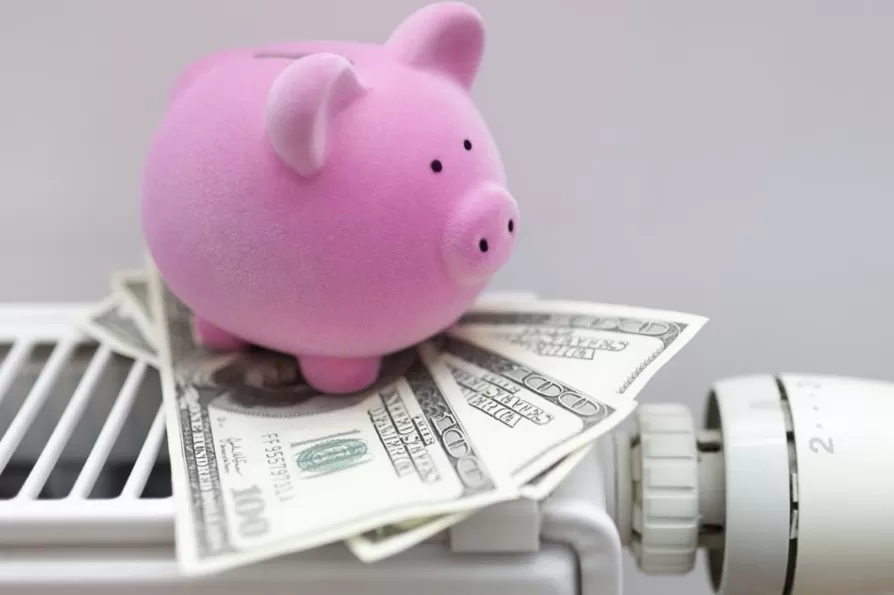
Tips for Saving on Heating Costs
As the outside temperature falls, we raise the temperature inside, and with it, heating costs go up, too. While peaceful white snowfall may be picturesque, the winter utility bills are not quite as pretty.
If you’ve been to a gas station or store recently, you’ve seen first-hand how inflation is affecting prices on just about everything nowadays. The smaller supply along with increased demand for fuel will really hit home as a result.
While we can’t change the weather or the economy, we can change our habits to be smarter for our budget and more environmentally friendly.
Practical Tips You Can Use
Here are some ways to keep more heat inside your home and more money inside your wallet.
Rugs
Add rugs to your floors, such as in the bathroom, to help keep rooms insulated. Dress in layers, warm sweaters, and socks. Use flannel sheets and more blankets at night to keep your body heat inside.
Air Filter Maintenance
Clean or change air filters for heating devices. Debris is unclean for breathing and will keep the warm air from circulating. Move furniture and curtains away from heaters to enable air flow and prevent fire hazards.
Manage Your Thermostat
Lower the thermostat by 7-10 degrees when everyone is out for the day. An electronic thermostat usually allows you to set the temperature to automatically increase or decrease as your schedule changes each day. If going away for a few days, do not reduce temps to less than 55 degrees to prevent pipes from freezing.
Time for an upgrade?
Call a professional to inspect your furnace and either clean it or upgrade it. The cost can be well worth the savings in heating. An old and dirty furnace system can work at 60 to 70% efficiency; switching to a newer, high-efficiency system can work at 90 to 98%.
Consult your utility company
Contact your utility company for a free home check-up. Costs for service or upgrades can be offset by federal tax credits, and utility rebates are available for many energy-efficient upgrades.
Check windows for leaks
Detect air leaks by lighting a candle and watching if it blows in a certain direction. Seal windows with caulking or spray-foam insulation or cover with plastic insulation sheets. Put draft stoppers under doorways.
Curtains
Open the shades during sunlight hours to let the sun naturally heat up your space. Close curtains at night to retain your heat and prevent cold night air from entering. Insulated curtains can help to better trap the heat than basic curtains would.
Space Heaters
Use plug-in space heaters to warm up isolated areas instead of turning on entire heating zones if all the space is not in use. Place them in open areas, away from flammable items and children or pets. Close vents in rooms that are not being used to avoid unnecessary output.
Switch to LED light bulbs
LEB bulbs use about 75 percent less energy and last about 25 times longer than incandescent bulbs. Though their initial cost is higher, it pays off in the form of reduced electric bills over time. Unplug devices that are not in use.
Lower Hot Water Heater
Reduce your water heater temperature to 120 degrees. Many houses or buildings have water heaters set to a burning temperature of 140 degrees. Reducing it to a comfortable 120 degrees is safer for skin and easier on heating costs.
Following a few of these easy-to-implement tips and tricks for saving on heat costs can make a big difference. Put them to good use so you can sit back and enjoy a cup of hot cocoa during this cold winter, content that you are staying warm and saving money.

what to buy and what to skip in January
What’s your January shopping style–all shopped out, or ready to hit the mall again as soon as the last guest leaves? Whatever it is, we’ve got you covered! January begins with a bang, but there are no major shopping holidays once the new year gets underway, but you can still pick up great bargains this month. Here’s what to buy and what to skip in January.
Buy: Winter clothing
Were you given a ton of gift cards to retailers over the holidays? If so, you’re in luck! Prices will start dropping on all winter apparel this month so retailers can make room for the new spring line. You can pick up warm-weather wear that’s discounted by as much as 85% and still have lots of time to enjoy it this season.
Skip: Spring clothing
The worst time to purchase an item is generally right before it’s in hot demand. With spring wear landing in inventory this month, prices will be high, so don’t plan on picking out a springtime wardrobe just yet. You’ll start seeing the first round of discounts on spring clothing in April. And of course, as the season deepens, so will the discounts.
Buy: Fitness gear
The new year is here and it’s time to make good on that resolution to shed some holiday pounds. Retailers know this well, so they’ll slash prices on yoga mats, fitness balls, resistance bands, weights and more. You can also find athletic wear on sale this month, and sometimes exercise machines as well. Shop multiple retailers to score the best deals.
Skip: Mattresses
Is your deep winter sleep getting disrupted every night by a lumpy mattress? Hold on just a bit longer before springing for a new one. Online and brick-and-mortar mattress retailers will be dropping prices on their merchandise by as much as 60 percent next month during Presidents Day sale events. As always, look up prices at several online and in-store retailers for the best deal.
Buy: Linens and soft goods
While you’ll want to skip the new mattress this month, you can still upgrade your night’s sleep without spending a bundle in January. The first month of the year is famous for its white sales, with soft home goods like blankets and pillows seeing discounts as deep as 70%.
Skip: Snow gear
While winter apparel will see slashed prices this month, snow gear, which includes skis, skates, snowshoes and the like, tend to retail at full price until the end of the season. Wait just a few more months for steep discounts on all things snow.
Buy: TVs
The football post-season is the perfect time to give your flatscreen an upgrade. Retailers will be competing for your business and offering up promotions on their TVs with discounts that rival those of Black Friday.
Buy: Holiday decor and gift baskets
The bargain-priced holiday leftovers you found on the shelves at the end of December will be selling at even lower prices this month. Get started on next year’s holiday prep by stocking up on wrapping paper, decor and even small gift baskets for those last-minute presents you frantically shop for each year. You can also pick up these small gifts to have on hand whenever you need one for any reason throughout the year.
It’s a new year, and a great time to pick up a fantastic bargain. This guide can help you learn what to buy and what to skip in January.
Your Complete Year-End Financial Checklist
As 2022 draws to a close and we prepare to usher in 2023, take a moment to go through this year-end financial checklist for ensuring your finances are in order before the start of the New Year.
Review your budget
Is your monthly budget still working well for you? Are you stretching some spending categories or finishing each month in the red? Take some time to review your budget and make any necessary changes.
Top off your retirement plan
If you have a 401(k), check to see that you are taking full advantage of your employer’s matching contributions. If you haven’t contributed as much as you can, you have until the end of the year (Dec. 31, 2022) to catch up; to a limit of $20,500. If you turned 50 this year, you are eligible for an additional catch-up contribution of $6,500. If you anticipate getting a holiday bonus, consider putting this money toward your debt.
Likewise, if you have an IRA, you have until April 15 to scrape together the maximum contribution of $6,500, with an additional $1,000 if you are age 50 years or older.
Check your progress on paying down debt
Give your debt an annual checkup by reviewing your outstanding debts from one year ago and holding up the amounts against what you now owe. Have you shed debt from one year ago, or is your debt growing? If you’ve made no progress, or your debt has grown, consider taking bigger steps toward paying it down in 2023, such as consolidating your debt with a Signature loan from Kellogg Community Credit Union.
Review Your Credit Report
It’s a good idea to review your statements each month to check for fraudulent charges, but you can also review your credit report to discover errors or issues with your credit. While you can request a free copy of your credit report from all three credit agencies once a year, you can access your credit score more frequently with SavvyMoney® Credit Score, a free service offered to KCCU members that gives you access to your full credit report, tips to improve your score, and credit monitoring alerts. KCCU members can access SavvyMoney from within ItsMe247 Online Banking.
Review your investments and asset allocation
Take some time at year’s end to rebalance your portfolio and to see if your asset allocation is still serving you well. You may need to make some changes to your mix of stocks, bonds, cash, and other investments to better reflect the current state of the market.
Review your beneficiaries
Has your family situation changed in the past year? If it has, be sure to switch the beneficiaries on your accounts and life insurance policies to accommodate these changes.
Complete open enrollment and select your employer benefits
The end of the year coincides with open enrollment for health insurance policies. This is your chance to select the employer benefits you want for the coming year. If you miss this window, you will be stuck with the benefits you chose last year or with no benefits at all.
Review your tax withholdings
It’s a good idea to review your W-4 annually and see if the amount of tax being withheld from each paycheck needs to be adjusted. If you’re not a numbers person, ask your accountant for help. Changing up the numbers just a bit can make a significant difference in your tax bill at the end of the year. Or, if you usually get a large refund, adjusting the amount withheld can mean enjoying a larger paycheck throughout the year instead of giving the government an interest-free loan to be paid back in one lump sum at year’s end.
The doors are closing on 2022 and it’s time to give your finances a full checkup. Use this checklist to make sure your money matters are in order before the start of 2023.

Host a Stress-free Holiday Meal on a Budget
Holiday hosting can be super-stressful – and expensive! This year, with prices soaring at the grocery and beyond, breaking your budget on hosting duties can seem like a sure thing. Lucky for you, here are six ways you can host a stress-free and awesome holiday meal without draining your wallet.
Simplify your meal plan
It’s tempting to go all-out while hosting holiday gatherings, but you and your guests will appreciate simplicity. When planning your menu, keep the prep time and cost of each dish in mind. You can limit the side dishes to four, or even fewer, and consider using store-bought shortcuts when the price and quality don’t make a significant difference, like pre-made pie dough and stuffing. Keeping it simple is one of the best ways to keep stress levels and expenses to a minimum.
Shop early and use coupons
Plan your menu and shopping as early as possible to take advantage of weekly sales. Check your local circulars and your favorite grocery apps in the weeks leading up to Christmas to see what’s on sale each week and to snag coupons for even bigger savings.
Think out of the box for steep savings
Don’t assume you need to purchase all the necessities for your holiday meal in the usual manner. Get creative in how you source what you need for lower costs. For example, you can purchase day-old bread from your local bakery to use for stuffing, trim greenery from your own yard to use as decor and consider using chicken for your entree instead of the more expensive (and traditional) turkey or ham.
Accept (and ask for) help
Hosting a holiday meal for a crowd is a big deal, but you don’t have to go it alone. Don’t turn down offers for help or be afraid to ask your guests to chip in with the preparations. You’ll cross a task off your to-do list with each offer and help your guests feel more at home by assisting with the cooking and/or shopping. Your budget and stress levels will thank you.
Set up a smart buffet
If you’ll be serving buffet-style, set it up with your budget in mind. Place the less-expensive items, like breads, crackers, and veggies, at the front line of the buffet to encourage guests to fill their plates with them first. Your sides, like cranberry sauce and mashed potatoes, can be set in the center, with the proteins in the back. Dividing the foods this way is economical and convenient for your guests as well.
Break down your schedule
To keep your days – and yourself – calm, break down your to-do list for the weeks leading to the big event into bite-size tasks. Divide the chores according to when they need to be done. For example, you can bake and freeze your breads and desserts weeks in advance, shop for paper goods and decor as soon as you know you’ll be hosting and start prepping some food items, like stuffing and salad dressings, several days before the meal.
You can take this one step further by setting up an exact schedule for the day of your event, including what goes into the oven and when, to avoid last-minute personal meltdowns after realizing the bird is undercooked and/or you’ll still be busy at the stovetop when your guests start arriving.
Don’t forget to take some me-time
The days are packed, and the to-do lists are endless, but don’t forget to carve out time for yourself in all the busyness. It can be a 10-minute time-out in your bedroom with a piece of chocolate and a cup of coffee (or glass of wine), a quick walk around the block or a half-hour soak in the tub. Go with whatever helps you feel calm and relaxed – you’ll be glad you did!
Don’t stress about while hosting on a budget this holiday season. Use the tips here to prepare a great holiday meal without spending a bundle or spiking your stress levels. Happy hosting!
How to spot and avoid fake lottery scams
Everyone dreams of winning the lottery, but scammers are out to turn that frequent dream into an absolute nightmare. A fake lottery scam involves a fraudster, or a ring of criminals, misrepresenting themselves as a legitimate lottery company to con victims out of their information and money. Here’s all you need to know about fake lottery scams.
How the scams play out
In a fake lottery scam, a scammer will reach out to a potential target via phone, email or through social media platforms to inform them that they’ve won a large amount of cash, or major prizes, like a new car or other expensive goods. Alternatively, they may offer to let the target play a “free round” of lotto, which will miraculously result in an instant win.
To convince the target of their authenticity, the scammer may claim to represent a major lotto company, like Mega Millions, or another recognizable name. In some cases, they’ll pretend to represent a government agency, like the Federal Trade Commission (FTC), or an invented, but real-sounding, program like the “National Sweepstakes Organization”.
The scam will conclude with the fraudster asking the target to share personal information, and/or to pay fees for covering “processing costs” and the like, which will supposedly allow the target to receive their prize. Of course, if information is shared, it will be used to empty the target’s accounts or commit identity theft, and if money is shared, it will never be seen again. Sadly, no sweepstakes or lottery has been won, either.
Red flags
Watch out for these red flags, which can alert you to the likelihood of a fake lottery scam:
- A letter, email, popup window or social media message claiming you’ve won a lottery you’ve never entered.
- You’re offered the opportunity to enter a lottery or sweepstakes at no cost.
- You’re informed you’ve won a foreign lottery or offered the opportunity to purchase tickets to one.
- You’re asked to share sensitive information over the phone or via email.
- You’re asked to pay a fee to receive your prize.
- The area code of the scammer’s phone number is foreign.
- The email claiming you’ve won a prize is written poorly and has typos.
You are instructed to keep your win confidential or risk losing your prize.
The “lottery rep” offers to wire your winnings directly into your checking account.
The caller offers to send you a check for more than you’ve allegedly won, and then asks you to send back the surplus via wire transfer or prepaid debit card.
You’re told you can “verify” the prize by calling a specific number.
Protect yourself
Arm yourself with these protective measures and information to keep safe from fake lottery scams:
- Never share sensitive information with an unverified contact.
- Be aware that it’s illegal for U.S. citizens to play a foreign lottery.
- Don’t open emails or click on links from unverified contacts.
- A legitimate lottery will never charge a fee or collect money for a “tax” for issuing a prize.
- Never wire money or pay via prepaid debit card to an unknown contact.
- Keep the security on all your devices set to their highest settings and enable popup blocker features on your web browser.
If you’ve been targeted
If you believe you’re being targeted by a fake lottery scam, don’t engage further with the scammer. End the call or delete the email, and then block the number or mark the email address as spam. Report the scam to the FTC, and, if relevant, to the legitimate lottery company the scammers are spoofing. You can also report the scam to your local law enforcement agency. Finally, let your friends know about the circulating scam so they know to be aware and be on guard.
Lottery scams take what could possibly be the most exciting phone call of a lifetime and turn it into the beginning of the worst nightmare ever. Don’t let them fool you! Stay alert and stay safe.
Protect Yourself from Scams
This week (November 13-19) is International Fraud Awareness Week, so what better time than now to discuss how to protect yourself from falling victim to fraudsters. Here at Kellogg Community Credit Union, our biggest priority is your financial wellness. To help keep you safe, we’ve created this guide to help you recognize and protect yourself from scams.
5 ways to spot a scammer
1.They ask for detailed information before agreeing to process an application.
2. They insist on a specific method of payment.
3. They send a check for an inflated amount to a seller or “employee,” and then ask the victim to mail them the extra money. Of course, the original check will not clear.
4. You can’t find any information about the company the caller allegedly represents.
5. You’re pressured to act now.
Who are the targets?
Here are some of the most common targets of scams:
- The unemployed. If you’re job-hunting, don’t respond to emails offering you a “dream position” you never applied to have.
- The aging. Older people often spend lots of time online. They can also be less aware of the dangers lurking there.
- Children. Children will more readily share information with strangers, which can then be used to steal their identity.
What do scams look like?
These are some of the most common scams:
- Cyberhacking. Hackers gain remote access to your computer-and personal information.
- Phishing scams. Scammers bait you into sharing personal information, which they use to hack your accounts or steal your identity.
- Mystery shopper. A bogus company will “hire” you to purchase an item in a store and then report back on the experience. Before you get started, though, you’ll have to pay a hefty fee, which you’ll never see again.
- Job offers. Scammers “hire” you for a position and then scam you by sending you an inflated check, as detailed above.
- Sweetheart scams. A scammer pretending to be an online lover will con you into sending them money and gifts or sharing personal information.
- Fraudulent investments. Scammers reach out to victims with information about lucrative investments that don’t exist.
10 ways to protect yourself from scams
- Never share personal information online
- Don’t open unsolicited emails. If you do, do not click on any links in them.
- Never send money by insecure methods to an unknown party.
- Protect your devices by using the most current operating systems, choosing two-factor authentication and using strong, unique passwords for every account.
- Choose the strongest privacy settings for your social media accounts.
- Keep yourself in the know about the latest scams
- Educate your kids about basic computer safety and privacy
- If you have elderly parents, talk to them about common scams and teach them to protect themselves.
- If a government agency or a company calls and asks you to share personal information, tell them you’ll contact them on your own.
- Never accept a job or pay for a purchase or service without researching the company involved.
Steps to take when your house skyrockets in value
The value of your house has shot up a lot in recent months, do you wonder what steps you should take?
The flaming real estate market means homes are rising in value at a meteoric rate. In fact, in some areas of the country, properties have doubled in value over the last two years. Because of this, many homeowners like you may be wondering what, if anything, they can do with this burst of equity. Here, we’ve outlined several financial moves you may want to consider at this time.
Sell
Naturally, the financial move that first comes to mind when homes experience an explosion in equity is to sell the home and pocket the profits. For some people, this can be a great idea, but for others, it can spell financial disaster.
Here’s what to consider before making this move.
First, it’s important to have a clear picture of your next step after selling your home. Do you plan to buy a new home in the same area as your existing home? If yes, you may want to think twice about selling. If you do choose to go ahead and sell your home, you’ll likely walk away with a tidy sum of money, but you’ll need that money (and maybe more) to purchase your next home, which will also be selling at an exorbitantly high price.
If, however, you’re looking to downsize and find a smaller and cheaper place to live, this can be a great time to sell your existing home. The market is hot, and you’ll likely get lots of generous offers along with a nice profit from the sale, which can take you far beyond the purchase of your new, smaller home. The same is true if you plan to move from a particularly popular area, such as the suburbs, to a quieter town that is not in such high demand.
Finally, be sure to get an estimate of the interest rate and payment you’d have on your new mortgage before putting your current home on the market. Rates are rising, and you may end up with a monthly payment that is higher than anticipated. Run the numbers before making a decision so you have a clear idea of what your new mortgage scenario will look like.
Have your home appraised to remove mortgage insurance
If you put down less than 20% of your home’s value at the time of purchase, you likely pay toward private mortgage insurance, or PMI, each month. These payments are generally set into place until the buyer owns 20% of their home. However, if the home’s value jumped, that time will come sooner than expected. Having your home professionally appraised will tell you if you own 20% of the home’s current value, in which case, you no longer need to pay the PMI. The appraisal will cost several hundred dollars, but this cost will easily be offset by the cancellation of the PMI.
Reassess your insurance coverage
If you don’t plan on selling your home, and it has significantly increased in value, you may want to review your insurance coverage. Your insurance policy was likely purchased when your home was worth less than it is now, which means it will not cover the current value of your home. Review your policy and consider increasing your coverage to avoid being left with insufficient coverage in case of catastrophe.
Take equity out
Thousands of homeowners are taking advantage of the increased equity in their homes through one of two means: a Home Equity Line of Credit (HELOC) or a Home Equity Loan (HEL). A HELOC is a line of credit that allows the homeowner to take out cash as needed over a “draw period,” after which the funds are returned over a predetermined time. A HEL is a lump sum of money a homeowner can borrow and then pay back over the loan’s term. Each of these products uses the home’s available equity as collateral.
Another way to tap into your home’s equity is through a cash-out refinance. This works by taking out a new mortgage, paying off the existing loan and keeping the difference in cash. This is typically recommended when homes are rising in value, like they are in the current market. If you do go this route, it’s important to crunch the numbers carefully before going ahead to be sure you can really afford the payback terms on your new mortgage. [If you’re interested in a refinance, look no further than Kellogg Community Credit Union! Our rates are always competitive, and our service is always outstanding. Call, click or stop by today to get started.]
Home values are skyrocketing, and you may want to cash in on the action. Read the tips listed here to learn about possible financial moves you can make, all thanks to your home’s increased equity.
What is the Dark Web?
Have you heard of the dark web, but never really understood what this term means? Here you’ll learn what is the dark web, how it’s accessed and how to protect your information.
What is the dark web?
The internet has been likened to an iceberg. There is very little of it that is truly visible above the surface, but it is enormous, dark, and deep underneath. The dark web is the deepest layer of the internet that isn’t visible to the average browser. Unfortunately, its name is a perfect description of its function, as the dark web is full of illegal activities and crimes. Let’s take a closer look at the dark web and how you can protect your information from being caught in its trap.
There are three basic components of the internet:
The surface web
The surface web involves all websites and landing pages that can easily be accessed through popular search engines and by inputting a URL/address directly into a web browser address bar.
The deep web
The deep web includes private, but not invisible accounts, such as social media pages, retail accounts, membership websites, confidential corporate webpages, medical records and more. All content on the deep web is safeguarded by a paywall or sign-in credentials. Experts have estimated that up to 99% of the internet is comprised of the deep web.
The dark web
The the final layer of the internet can only be accessed by downloading special browsing software called Tor. Tor masks IP addresses and instantly renders all visitors anonymous. This is where scammers can buy and sell personal information including credit card numbers, checking account details, Social Security numbers, health records and more.
Despite its name, not all activity that takes place on the dark web is illegal. The deepest part of the internet also provides a platform for communication and commerce among people living in countries that have heavy censorship over online activity. In addition, the dark web was originally used by the United States Department of Defense to communicate anonymously.
Unfortunately, though, the dark web remains a hotbed of criminal activity. Loads of illegal trade takes place through the dark web, including drugs, firearms, counterfeit money, subscription credentials and personal information of thousands of targets. The inherent anonymity of the dark web allows hackers and scammers to roam free without fear of being caught.
How does the dark web work?
The dark web, and by extension the Tor browser, uses a technology known as “onion routing.” This technology uses multiple layers of encryption and redirection to assure anonymity for every browser. When a browser tries to access a site on the dark web, its information will be routed through thousands of relay points, making it impossible to identify and trace.
How can I protect myself from the dark web?
It’s important to take preventative measures to protect your information from the dark web. Here’s how:
Two-step authentication
Enable two-step authentication on all online accounts. This includes accounts with access to sensitive information, as well as accounts that can be used to collect innocuous but potentially identifying information, like social media accounts.
Monitor
Consistently monitor your credit for fraudulent activity. Review your accounts at the end of each billing period and request an annual free credit report. Report any suspicious activity to your credit card company immediately. You can also ask the company to send you automatic alerts if there are any large purchases made or new accounts opened in your name.
Strong passwords
Use strong, unique passwords for all your accounts. Vary your capitalization use, numbers, words, and symbols. For optimal protection, switch up your passwords every few months.
Never share your personal information with an unverified source. This includes an email from a contact you’ve never engaged with before, phone calls from an unknown caller and a downloaded link from a banner ad.
Run a dark web scan
Run a dark web scan on your devices. This will tell you if your information is already on the dark web. If the scan is positive, reach out to your credit card issuers to discuss placing a fraud alert on your accounts and a credit freeze in your name.
The dark web is fraught with danger and impossible to trace but there are ways to protect your information. Use the tips outlined here to stay safe.
Fannie Mae warns of current scam
Fraudsters are always looking for new, clever ways to trick consumers into sharing personal information, leaving them vulnerable to fraud and identity theft.
Recently, Fannie Mae reported a new consumer fraud scam where criminals are posing as Fannie Mae employees and contacting homeowners in an attempt to lure them into a scam. They are offering to modify their mortgage, and requesting money or gift cards. Please be aware that Fannie Mae does not contact individual borrowers. All KCCU mortgages are locally serviced, and you would never receive a call from Fannie Mae on our behalf.
If you receive a call from someone claiming to be a representative of Fannie Mae, hang up, it is likely a scam! Block the scammer’s number from your mobile device.
General Tips to Spot a Scam
With fraudulent activity on the rise here are a few general rules for spotting scams.
A little bit of knowledge goes a long way in recognizing a scam:
- Government agencies would never initiate correspondence by phone call, text message, or email.
- No authentic business or government agency will insist on payment by gift card.
- A caller or message claiming a matter is urgent and demands immediate action, is nearly always a scam.
- KCCU will never contact you requesting your personal information, such as: username, password, online banking credentials, member number, credit/debit card number/pin/security code.
If you notice suspicious activity or experience security-related events, immediately contact KCCU at 269.968.9251 or 800.854.5421, or visit your local branch. We’re here to help!
8 Ways to Spot a Survey Scam
Survey scams are almost as old as the internet. They’re so prevalent, you can hardly spend an hour online without running into an ad for a “super quick” survey promising a reward for just a few minutes of your time.
What actually happens is that the scammer walks away with a free survey, or worse, your information and/or your money. The alert consumer can spot a survey scam easily, but fraudsters are unfortunately becoming more sophisticated at luring innocent victims into their schemes. Don’t get caught! Here are eight ways to spot a survey scam:
You’re asked to pay to participate in a survey
Authentic survey companies need you – you don’t need them. There’s absolutely no reason to pay to take a survey of any kind. If you’re targeted by an ad asking you to take a survey and to pay for the privilege of doing so, don’t respond.
You’re asked to share sensitive information before you can take the survey
They’d really appreciate it if you could take this quick survey for them. They just need some information from you first, like your Social Security number, date of birth and maybe even your checking account number. If a survey company asks for anything more than basic information from you, sign out as quickly as you can.
They advertise on Craigslist and similar sites asking for your email address
“Survey companies” that advertise on sites like Craigslist asking you to share your email address are usually fronts for scam rings. They use the bogus surveys as bait so you will share your email address. Once they have this information, they’ll use it to spam you with scam emails, phishing schemes, malware or worse. Alternatively, they’ll sell your email address to another scam ring to be used for similar purposes.
They offer too much money
If a survey is offering you $100 for a 20-question survey that shouldn’t take you more than five minutes to complete, you can be sure you’re looking at a scam. No legitimate survey company is that desperate. The pay for authentic survey-taking is generally on a much more modest scale.
You’re directed to download attachments
Any time an unknown contact asks you to download attachments to your device, be super-suspicious. More often than not, these are scams, and the attachments are loaded with malware. Don’t respond to the offer, and if it was made via email, be sure to report the email address as spam.
They advertise aggressively
If the same solicitation for survey participation keeps popping up across your screen, you may be looking at a scam. Scammers tend to flood their targets with ads in the hopes that one of them will actually work. Similarly, if the survey offer is full of unbelievable testimonials of past participants, you’re likely looking at a scam. Legitimate survey companies don’t need to try so desperately hard to get people to take their surveys.
They give you an hour to pre-qualify for the survey
Often, a survey company will want you to answer a few pre-qualifying questions to see if you fit their desired demographic. Scammers exploit the prequalification by having the target answer dozens of questions and then informing them they’ve run out of time and cannot participate in the actual survey. This is false, of course, and the questions the scammer just answered actually were the survey questions, only now they won’t be getting paid for it. Check to see if a survey has a time limit on the prequalification before you start answering questions.
They require an outrageous minimum before payment
Most legitimate survey companies require the survey taker to complete a minimum number of surveys before the first payment. However, scammers require their targets to take an unrealistic number of surveys before they receive their first paycheck. Often, the victim will just quit before they qualify for a payment and the scammers now have these completed surveys without paying anything for them.
Survey-taking can be a great way to earn some pocket money, but survey scams are rampant. Follow these tips to stay safe!

How to Ask for a Raise
Asking for the occasional raise should be part of any career path, but it can sometimes be difficult to know when and how to ask for an increase in salary. Follow these tips to make negotiating your next raise easy.
Do you deserve a raise?
Before bringing it up with your supervisor or the HR department, determine whether this is a good time for you to be asking for a raise.
To help you answer that question, you can hold your work performance up against this checklist:
- Do you meet and exceed the expectations of your job?
- Do you take on additional responsibility outside your actual job description?
- Are you a team player?
- Are you constantly increasing your knowledge and skill of your industry?
- Would at least one person at work describe you as indispensable to the company?
- Do you deliver consistent and excellent results?
If you can confidently answer “yes” to most of these questions, you likely deserve a raise.
Time it right
You may personally deserve a raise, but that doesn’t mean you should ask for one right at this moment.
First, determine whether this is a good time for your company to increase your salary. Has the business recently gone through a slump or its slowest season of the year? If yes, consider waiting a bit before making your request. It’s best to ask for a raise when the company is doing especially well, such as after a busy season or the successful rollout of a new product.
Next, ask for a raise when your own performance is in its best light. A great time to ask for a raise can be soon after you’ve completed a big project or snagged an important client for the firm.
Finally, choose the actual time to make your request very carefully. Don’t ask to meet with your supervisor right after the weekly board meeting if it always stresses them out, or during the last hour before a big vacation when their mind is elsewhere. Choose a time when they will be most relaxed and have the headspace to truly consider your request.
How to ask for a raise
Before asking for a raise, do your homework. Come prepared with specific examples of value you’ve brought to the company and show how you’ve surpassed expectations. Include as much specific data as you can, describing how the company or your department directly benefited from your work, detailing projects you’ve worked on, and sharing positive feedback you’ve received from your superiors or from clients over the last year.
The way you word your request is just as important as the actual request. Be assertive, but don’t resort to ultimatums, such as threatening to leave if your request isn’t granted.
Practice your raise request with a friend until you know your speech well.
Best of luck getting that raise!
fraud prevention tips
- If you receive a call from number, you do not know, let it go to voicemail.
- Only call a number that you can verify is valid. You can find numbers for KCCU on your statement, on the back of your debit / credit card, or via the KCCU website
- Do not open emails or click on from suspicious addresses.
KCCU will NEVER:
- Call, email, or otherwise contact you to ask for your user name, password, or other online banking credentials
- Contact you to ask for your credit card or debit card number, PIN, or 3-digit security code
- Contact you to ask for your member number
KCCU may:
- Verify your street address
- Verify the first or last four digits of your social security number
- Ask for your mother’s maiden name
- Ask for the last four digits of your card number
- Ask to verify the amount of your last transaction or payment
- Ask for your code word
When in doubt, reach out!
If you are ever uncomfortable with a call or message you receive, notice suspicious account activity, or experience security-related events, immediately contact KCCU at 269.968.9251 or 800.854.5421, or visit your local branch. We’re here to help.
What to Buy and What to Skip in July
Buy: Patriotic items
Pledge allegiance along with your favorite retailers by purchasing almost anything under the sun in red, white and blue. You can pick up bargain-priced clothing, home goods, toys, party goods and so much more in the days and weeks after Independence Day. Of course, you’ll also find discounted fireworks and July 4th-themed decor, which you can store for next year’s Independence Day festivities.
Skip: Sunglasses
If you need a new pair of shades, you’re best off waiting a bit before springing for a new pair. Sunglasses are still retailing at full price this month, and they won’t start seeing discounts until September. For even steeper savings, pick up a new pair of shades in October.
Buy: School and office supplies
The start of the school year may be close to two months off, but retailers are already deep into back-to-school season by the time the calendar hits July. Check out big-box stores, like Walmart, Target and Staples, for specials on supplies, like pens and pencils, paper, crayons, scissors and more. If you keep an eye out for sales through the rest of the summer, you can enjoy significant savings on all of your school and office supplies this year.
Skip: Grills and patio furniture
School might be on the retail calendar, but that doesn’t mean summer is already gone. Grills, patio furniture and other outdoor gear will still be retailing at full price through July. If you can wait a bit, until mid or late August, you’ll save a bundle on all you need to upgrade your outdoor living.
Buy: Summer apparel
Fashion is always one step ahead of the rest of the world, and summertime is no exception. July means fashion brands and apparel stores are already clearing out their summer goods to make way for the incoming autumn line. Look out for discounts on tank tops, white sneakers, shorts and other summer wear you can still enjoy this season or save for next year’s hot-weather season.
Skip: Lawn mowers
Your mower may be old and creaky, but this isn’t the best time to spring for a replacement. Lawn mowers are still in high demand in July, so they are still retailing at full price. As always, patience can be the key to significant savings: The longer you wait into the season, the better price you can find on a lawn mower and other gardening tools and supplies.
Skip: Sandals and flip-flops
Put warm-weather footwear on the skip list this month. Sandals and flip-flops won’t be discounted until August, when the end of the summer is in sight and retailers need to move merchandise to make room for the next season’s inventory.
Buy: A/C Units
A/C units will begin to drop toward the end of the month as the season passes its midpoint. If your A/C needs to be replaced, you can find a new unit at a discounted price in July.
July can bring great deals on all kinds of products for the savvy shopper. Use the tips here to know what to buy and what to skip this July.
5 Ways to Raise Secure, Unspoiled Kids
1. Use allowance as a teaching tool
Give your kids their allowances with no strings attached to help them acquire money management skills through saving and spending trial and error.
2. Boost their confidence
Don’t let your child’s spending habits sway with peer pressure. Instead, help them build a sense of worth that’s independent of material possessions.
3. Say no
Refuse your children’s requests on occasion so they can learn how to accept a no. When turning down a request, don’t mention money. Instead of saying: “We can’t afford that right now” try “You don’t really need that right now.”
4. Encourage work
Kids who hold down a job learn responsibility, develop a good work ethic, and will value their money more. Encourage your child to look for summer jobs and to accept the occasional babysitting job.
5. Model gratitude and giving
Teach your children to appreciate what they have and to give back to others by using every opportunity to model these behaviors yourself.
QR Code Scams
Scammers never take a break from dreaming up new ways to con people out of their money. Recently, they’ve even been hijacking QR codes to pull scams on innocent victims. Here’s all you need to know about QR code scams and how to avoid them.
What’s a QR code?
Before we can explore the details of these scams, let’s understand what a QR code is and how one works. A QR code, which is an acronym for “Quick Response code,” is a square barcode that can be scanned using a smartphone. It leads directly to a website or app. Businesses use QR codes for any number of reasons, from posting online menus, to scanning coupons, to processing payments, and more. In the no-touch era following the coronavirus lockdowns, QR codes are more ubiquitous than ever.
Ironically, QR codes should help prevent fraud, since they take the user directly to the desired site, leaving no room for misspellings or for scammers to lure victims to a bogus website that has a URL similar to the legitimate website. Unfortunately, scammers have found a way to weaponize QR codes. The technology necessary to create a QR code is not accessible for anyone making QR code scams easy to pull off and difficult to identify.
How the scam plays out
In a QR code scam, a scammer will replace a legitimate QR code with their own code. A person will then scan the code and make a payment for a transaction. Unfortunately, the person has sent their money directly to the scammer and has not made a payment for the transaction as they believe they have.
In a recent QR code scam, fraudsters replaced dozens of QR codes on public parking meters in San Antonio, Texas, with their own codes. Drivers seeking to pay the meter costs scanned these codes and sent their payments to scammers. To make matters worse, many victims also unknowingly shared access to their phones with the scammers, setting themselves up for future scams as the criminals use the information on the phone to pull off additional schemes.
How to avoid a QR code scam
QR code scams can be challenging to recognize. For this reason, the FBI has advised against downloading an app from a QR code and/or downloading a QR code scanner app. However, there are ways to keep yourself safe from these scams.
When scanning a QR code, it’s a good idea to treat the link like any other email or text message. Proceed with caution and practice online safety measures as you would with any other online transaction. Check the source of the QR code and the URL that the code directs you to for common signs of a secure site, including a lock icon, an “s” after the “http,” and whether the URL matches with the URL of the intended site destination.
If the webpage or app the QR code sends you to seems suspicious in any way, leave it. You can access the payment portal you need by visiting the app or website on your own.
When using a QR code, look for these red flags that can indicate a possible scam:
- The URL is different from the home site.
- The QR code is posted on a public sign or notice that seems to be tampered with.
- The site or app the code directs you to is full of typos.
Knowing how to recognize a QR code scam can help prevent you from falling victim to this emerging and quickly growing scheme.
If you were scammed
If you’ve used a QR code to pay for a transaction and subsequently received an email from the company claiming you’ve never completed the payment, or that the payment failed, you may be the victim of a QR code scam. Let the company know that its QR code has been tampered with and alert the FTC as well.
Stay alert when using a QR code and stay safe!
How does a Rising Interest Rate Environment Affect the Economy?
The Fed is raising interests rates, and you may be wondering how will this impact the economy and the current inflation rates.
The rising inflation rate, once determined to be a transitory and natural consequence of pandemic lockdowns, now appears to be here to stay. Headlines announced a 7% increase in the consumer price index (CPI) in the beginning of 2022. To help control prices, the Federal Reserve will increase interest rates, possibly up to four times in total this year.
Let’s take a deeper look at what the current economic circumstances mean for the average consumer as well as steps you can take to protect your investments and manage your money in the most optimal manner.
What is the Fed and what purpose does it serve?
The Federal Reserve, also known as the Fed, is the central bank of the United States. Its purpose is to keep the U.S. economy operating at optimal efficiency. The Fed primarily focuses on employment and inflation. To prevent the Fed from gaining too much power, it has a system of checks in place, including the following:
- A Board of Governors that is independent of the federal government
- Twelve semi-independent Federal Reserve Banks, each of which represent a particular geographic area of the U.S. and are the operating arms of the Fed
- The Federal Open Market Committee (FOMC)F, consisting of 12 people to help the country maintain maximum employment levels and stability in prices, the FOMC votes on whether their current target range for the monetary policy rate is appropriate for the contemporary economic climate. This target rate, also known as the Federal Funds rate, is the rate at which financial institutions, like banks and credit unions, lend money to each other. As a general rule, if inflation is rising, the Fed will raise its interest rates to contain it. On the flip side, if the economy is heading toward a recession, the Fed will lower the interest rate to help promote lending and economic activity.
What happens when the Fed raises interest rates?
When the Fed increases interest rates, financial institutions raise their rates as well. Consequently, the cost of borrowing money becomes higher, and consumers are more hesitant to take out large loans. This may discourage people from buying homes, cars, and launching new businesses. Conversely, it encourages more people to save as the savings rates offered by banks and credit unions will typically increase. These factors mean less money is circulating in the economy which will hopefully reduce the level of inflation.
How does a rising rates environment impact the stock market?
Unfortunately, there’s no way to predict how the stock market will react to an increase in interest rates. The market’s volatile nature means there’s no direct correlation between its performance and the Fed’s rate. In general, rising interest rates is not good news to stock investors since it means companies will be hesitant to borrow the capital they need to grow their businesses. This will likely result in lower revenues and smaller returns for investors. However, certain sectors, like financial institutions, may benefit from an increased interest rate.
How does a rising rates environment affect the value of bonds?
The price of bonds is inversely related to interest rates. This means an increase in interest rates will cause an equivalent drop in the price of bonds. The price drop is caused by newer bonds on the market, which offer higher coupon rates, or the ratio between the interest the bond pays and its price, to reflect the recently increased interest rates.
How do I manage my finances in a rising rates environment?
The average consumer has been hit hard by the increased prices of everything from gas to groceries over the past year. There’s good news ahead for the struggling consumer, as the anticipated increases in interest rates are expected to help tame inflation. However, here are some steps you may want to take to protect your investments and manage your money as rates increase:
Stay calm and ignore the news
Alarming headlines get the most clicks, but stock market news nearly always sounds more distressing than it actually is. It’s rarely a good idea to liquidate a stock based on headlines alone. In addition, long-term growth can usually make temporary losses obsolete.
Plan ahead
As always, it’s best to have savings set aside for any economic circumstance. If you don’t already have one, build an emergency fund of at least 3-6 months’ worth of living expenses to prepare for any economic reality. As a bonus, beefing up your savings when interest rates are rising means giving your money a better chance at growth.
When in doubt, seek professional advice
If market news takes an especially disturbing turn, you may want to seek the counsel of a financial advisor for the best steps to take with your investments. Rebalancing your portfolio with a new asset allocation can help your investments maintain peak performance levels even during a rising rates environment.
Interest rates will likely be going up throughout the year as the Fed tries to control inflation. Use the tips outlined here and consider the steps you may want to take with your finances.
10 Reason to Save with the MI 529 Advisor Plan
Saving for education expenses doesn’t need to be a burden. With the MI 529 Advisor Plan, there’s no big upfront investment and getting started may be worth your time. Here are 10 reasons why 529 plans are used as the vehicle of choice to help invest for loved ones’ future higher educational expenses.
1. Easy & convenient
With the help of your financial advisor, the MI 529 Advisor Plan can easily be opened and funded after completing a short application. Once established, you can easily manage it online or by phone. In addition, consider setting up a recurring contributions from your bank account, making regular contributions is now easier than ever.
2. Savings can grow more due to tax advantages
Your earnings, if any, are free from federal income tax when used for qualified expenses. In the meantime, your contributions are reinvested automatically so your account can grow more than a taxable account over the same period.
3. Use at schools anywhere
Funds can be used at any accredited university, college or vocational school nationwide — and many abroad. Basically any institution with a student aid program qualifies.
4. Use for more than just tuition
The MI 529 Advisor Plan can be used to pay for qualified higher education expenses like tuition, certain room and board costs, computers and related technology expenses as well as fees, books, supplies, and other equipment.
5. Lower impact on financial aid than other savings options
Many parents worry that a 529 Savings Plan can adversely affect eligibility for financial aid. So long as the parent is the account owner, funds are typically treated as belonging to the parent, not the child, minimizing the impact on financial aid.*
6. Affordable
Open an account with as little as $25 per investment portfolio. Since there are no application, or maintenance fees, it’s affordable even for those on a modest budget
7. Everyone can help with Ugift®
You don’t have to do it all on your own! Grandparents as well as other family and friends can make gifts to your account for maximum growth potential. Ugift® allows friends and family to contribute towards your child’s (or grandchild’s) education through electronic contributions directly into your 529 plan.
8. Unused funds can be used for other eligible members of your family
If it turns out your child or grandchild doesn’t need all the money or their education goals change, you can designate a new beneficiary penalty-free so long as they’re an eligible member of your family.
9. Investment flexibility
The MI 529 Advisor Plan provides a variety of professionally managed investment portfolios to choose from including the enrollment year portfolio that corresponds to the beneficiary’s expected year of enrollment. Alternatively your financial professional can tailor your portfolio investments with individual, multi-fund or target risk options to match your risk tolerance, timeline, and investment preference.
10. Estate tax planning benefits
When you or anyone else makes a contribution, it may qualify for an annual gift tax exclusion of $16,000 per year for single filers and $32,000 a year for couples. As a 529 Plan, the Michigan 529 Advisor Plan is the only investment that allows you to give up to 5 years’ worth of gifts at one time — for a maximum of $80,000 for a single filer and $160,000 for couples.
For more information, speak with your financial advisor to open an account or visit MI529advisor.com.*The treatment of investments in a 529 savings plan varies by school. Assets are typically treated as the account holder’s and not the student’s. (Student assets are generally assessed at 20% whereas parental assets are generally assessed at 5.6%.) Any investments, including those in 529 accounts, may affect the student’s eligibility to get financial aid based on need. You should check with the schools you are considering regarding this issue.For non-qualified withdrawals, earnings are subject to income taxes and may be subject to additional tax penalties. Please consult your tax professional.Each MI 529 Advisor Plan account is subject to a service fee, state administrative fee, program management fee, underlying fund fees and a sales charge.
Contributions are generally considered completed gifts for federal transfer tax purposes and are, therefore, potentially subject to federal gift tax. Generally, if a contributor’s contributions to Accounts for a Designated Beneficiary, together with all other gifts by the contributor to the Designated Beneficiary, do not exceed the “annual exclusion” amount of $15,000 per year (or $30,000 for a married couple), no federal gift tax will be imposed on the contributor for gifts to the Designated Beneficiary during that year The Michigan 529 Advisor Plan is offered by the State of Michigan. TIAA-CREF Tuition Financing, Inc. (TFI) is the Program Manager and Nuveen Securities, LLC is the Distributor.
There are various risks associated with an investment in the Advisor Plan; principal loss is possible. Each 529 Investment Portfolio is also subject to the risks of the underlying fund(s) in which it invests. To fully understand the investment policies and risks of the underlying fund(s), please refer to the current prospectuses for the Underlying Funds which can be obtained on the MI Advisor Plan website.
Ugift® is a registered service mark of Ascensus Broker Dealer Services, LLC.
How Long Does It Take To Become A Millionaire?

A million dollars. For many people, it’s the pinnacle of financial success. For others, it’s just the first stepping stone toward their outrageous dreams. But how long does it take to actually reach that goal? How much would you need to save monthly to net a cool million? And, most importantly, is achieving millionaire status even within the realm of possibility for most Americans?
If you’ve ever seriously considered these questions with the intention of implementing the answers in your own life, or you’re simply curious, we’ve got the inside scoop. We’ve crunched the numbers and worked out the math to help you find out exactly how long it takes to become a millionaire.
Who wants to be a millionaire?
Believe it or not, a million dollars is approximately four times the median net worth of retirement-aged people in the U.S. Even more incredible, a net worth of a million dollars is well within the reach of most Americans. You don’t need a six-digit salary to make it to the millionaires’ list; all you need is enough time and a sound investment strategy.
How long does it take?
There is no exact answer to this literal million-dollar question. The amount of time it will take you to become a millionaire depends on the following factors:
- The amount of money you invest
- The rate of return on your investment
The table provided here gives you an idea of how much you’d need to save, and how many years it would take you to reach $1 million, at various rates of return.
|
Monthly Savings |
Years to $1 million with 10% annual returns |
Years to $1 million with 8% annual returns |
Years to $1 million with 6% annual returns |
Years to $1 million with 4% annual returns |
|
$100 |
44.5 |
52.9 |
65.7 |
88.6 |
|
$500 |
28.8 |
33.4 |
40.1 |
51 |
|
$1,000 |
22.4 |
25.5 |
29.9 |
36.7 |
|
$1,583 |
18.4 |
20.7 |
23.8 |
28.4 |
|
$2,083 |
16.2 |
18 |
20.4 |
23.9 |
|
$3,166 |
13 |
14.2 |
15.8 |
18 |
|
$4,166 |
11 |
12 |
13.2 |
16.8 |
If you already have a tidy sum saved up, and/or you’d like to see how long it would take you to reach a million by socking away a monthly amount that is different than any amounts shown on this table, you can input your own formula into this calculator to get the answers you need.
Getting started
Now that you’ve determined how long it will take you to reach your first million, don’t waste any time getting started. If you’ve made this your goal, the sooner you begin investing, the less money you’ll have to put away each month, and the sooner you’ll reach $1 million.
The easiest and most basic starting point for your million-dollar prize is to maximize your contributions to your employer’s 401(k) and your own IRAs and HSAs. Next, look into investing with a low-cost index fund, mutual fund or lifecycle fund.
If you can’t spare the money you’d need for investing enough funds to achieve your goal, take some time to review your budget and to plug up any expensive holes. Look for pricey habits you’d be better off giving up, subscriptions you can do without and entertainment costs you can trim without feeling the pinch. It might not be easy to make all those changes, but with a million-dollar finish line in sight, you should have all the motivation you need to start living a financially responsible life today.
Two neglected factors
One crucial factor most people forget about when trying to invest their way toward a million dollars is the rule of inflation. Simply put, a million dollars today does not have the same value as a million dollars 30 years from now. When you adjust for inflation at 3 percent a year, $1 million in 2020 would need to grow to $2,427,262 to have the same purchasing power in 2050. For this reason, you may want to tweak the amount you invest as a way of accounting for inflation. This way, you can be sure you have a true $1 million at the end of your investment timeline.
Another point that is often overlooked is the fact that no one can accurately predict the future. There’s no way to know what life events you’ll experience over the next three decades. Some of those can significantly affect your finances in either direction, such as windfalls, expensive medical emergencies, market crashes, etc. It may end up taking you a lot less time than you’d anticipated to reach $1 million, or hurdles may impact you reaching that goal, but keep saving no matter what.
Are you ready to start investing your way toward one million dollars? Reach out to us today to get the ball rolling. You can be a millionaire!
How to Create a Strong Password
Your passwords are like the keys to your life. And when it seems like there’s another big security breach every week, you want to be absolutely sure your passwords are strong and safe. After all, with just a few keystrokes, a scammer can have full access to your personal information, financial accounts, social media pages and so much more.
But creating those perfect passwords — and remembering them — can be difficult.
6 Steps to creating strong passwords
Below, we’ve outlined 6 steps for creating and keeping super-strong passwords that will keep scammers guessing.
Step 1: Choose a password manager
With so much of our lives accessible online, it’s more important than ever to keep passwords secure. The best way to do this is to use a password manager. These services will generate strong passwords for all of your financial accounts, favorite websites and social media platforms and then keep them safely encrypted. You will only need to create and memorize one master password, which you will use when logging into all of your accounts.
There are lots of password managers on the market LastPass is a popular one that comes highly recommended.
Step 2: Create an unbreakable master password
Once you’ve chosen your password manager, create a strong master password. This code can open up every password of yours to potential scammers, so be extra careful about choosing one that is super-secure and virtually unbreakable.
Scammers are becoming increasingly more efficient at password-cracking. They use multiple dictionaries which include English words, names, foreign words, phonetic patterns and more. They look for dates, commonly used substitutions, like “$” for “s,” “@” for “a,” and they run their dictionaries with various capitalizations.
Follow the rules below and you’ll have a strong password.
- Make it long. Many sites require a password that is a minimum of 8 characters long, but a 12-character password is even stronger.
- Be creative. Avoid using names, places and recognizable words because these are easily cracked.
- Mix it up. The best way to keep your password unbreakable is to mix up your capitalization and the kinds of characters you use, switching back and forth from letters to numbers to symbols.
- Don’t use any of variation of these commonly used — and commonly hacked — passwords:
- 123456123456789
- Passwordadmin
- 12345678qwerty
- 1234567111111
- 1231231234567890000000
- Abc1231234
- Iloveyouaaaaaa
Bonus tip: Worried about creating and remembering a long, unbreakable password? Turn a sentence into a password by using mnemonics, misspelled words and symbols that only you will understand.
Here are a couple to get you started:
- D:’(OspldMlk.JdreenqOJ = Don’t cry over spilled milk. Just drink orange juice
- 1tubuupshrtsin2Mpnts = I tuck button-up shirts into my pants.
Once you’ve created a super-strong master password, work on memorizing it. Don’t store the password anywhere online or on your phone; write it down on an unmarked piece of paper. Rip up the paper as soon as you’ve committed the password to memory. This should happen fairly quickly since you will be using it quite often.
Step 3: Update all your passwords
Next, you’re going to sync all the websites and accounts you use with your password manager. Follow the guidelines on your password manager for this step, as they differ with each service.
When you’re through, you’ll only be able to log into these sites by using your master password.
Some sites you use might employ outdated systems that won’t work with a password manager. For these sites, you will need to use different passwords. You can slightly amend your master password for these sites or create new ones using the guidelines above. Never double passwords; use a different one for every site you use.
Step 4: Use two-factor authentication
Add another layer of protection by choosing two-factor authentication whenever you have that option.
Step 5: Be careful with security questions
Ironically, security questions are extremely insecure. Anyone can Google your dog’s name or your mother’s hometown. And, if all a scammer has to do to retrieve your password with the “I forgot my password” tab is answer a security question, the strongest passwords in the world won’t do you any good.
Protect yourself by treating security questions like passwords. Never answer them truthfully. Instead, make up mnemonics or nonsensical answers that are hard to crack but easy for you to remember.
Step 6: Don’t let your browser or phone “remember” your passwords
Don’t be lazy; keep your passwords in your head and not on your devices. Otherwise, you’ll be in deep trouble if your computer or phone is swiped. Keep your passwords strong and safe. You don’t want to be an easy target for scammers!
Guide to buying your first motorcycle
If you’re ready to purchase your first motorcycle, you’re likely thrilled — but also a little overwhelmed. There are so many factors to consider and dozens of choices you’ll need to make before you pull the clutch. It can all get confusing, fast! No worries: Kellogg Community Credit Union is here to help!
How to get started
We’ve compiled a step-by-step guide for buying a motorcycle, complete with useful tips to help you make a purchase you’ll enjoy for years to come.
Secure financing
A motorcycle can run you anywhere from $5,000 to $30,000+, and it’s always best to have the financial details of a large purchase squared away before entering the market so you’ll avoid disappointment later. You can save up for your bike or take out a loan from Kellogg Community Credit Union where you’ll enjoy affordable interest rates and payback terms to fit your budget.
Brush up on your motorcycle safety
Before you shop for a bike, it’s a good idea to complete a Motorcycle Safety Foundation (MSF) course. The course is similar to driver’s training and will help ensure you can ride your bike with increased safety. Depending on your state, you may need to obtain a special motorcycle license as well.
Procure insurance
Insurance will protect you from liability for property damage or personal injuries caused through your vehicle, help cover medical bills in case of an accident, and cover theft and damage to your bike as well. As is the case with auto insurance, you’ll have the freedom to choose how much coverage you’d like to purchase, with more robust coverage directly increasing the cost of your policy. For a free, no obligation quote, contact KCCU Insurance Agency
Choose between a new and used bike
You’ve got the important stuff taken care of and you’re itching to try out bikes, but before you do, decide if you’re going to purchase a new or used motorcycle. Let’s take a quick look at the pros and cons of each option.
A used motorcycle can cost thousands less than a new bike and won’t depreciate nearly as much but finding a used motorcycle in decent condition can be challenging. If you decide to go this route, stay away from bikes that show signs of excessive wear, have mileage exceeding 20,000 miles, and/or have difficulty starting up, running or stopping. It’s also a good idea to get a VIN (Vehicle Identification Number) to check on your potential new bike, have it professionally inspected, and take it for a spin before finalizing the deal.
A new bike will be free of mechanical breakdowns in the near future and will look nice and shiny. Of course, you’ll pay for these privileges, so be sure to run the numbers before setting your heart on a particular motorcycle. It’s also important to note that, while you might save on repairs and maintenance, insurance on a new bike will likely be a lot more expensive than coverage for a used one.
Choose a motorcycle type
You’re ready to choose your type of ride. Here are the most popular choices:
Sport bikes
Sport bikes are equipped with a leaning design that makes them ideal for riding at high speeds, these bikes also have higher foot pegs and handlebars that are more out of reach than most other bikes. A sport bike can be a good choice for thrill-seekers, but an uncomfortable option for riders planning to take long trips on their bikes. Insurance can also be expensive.
Standard bikes
This has an upright riding posture and lack of accessories make these a great all-purpose motorcycle. Perfect for beginners and the budget-conscious, but not the best choice for off-road and long-distance riders.
Cruisers
The Harley Davidson standard, cruisers offer a relaxed riding position, comfortable suspension, and a V-twin engine. They also tend to be heavy, making them difficult for new or small riders to handle, but an excellent choice for tall riders and those seeking a stylish ride.
Touring bikes
Built for long rides, these motorcycles are fully loaded with extra features, including fairings that block the wind, saddlebags to accommodate luggage and large fuel tanks for long trips. A touring bike can be ideal for riders who take lots of road trips, but they can be an expensive choice for city riders.
Dual sport bikes
Lightweight and built with high-travel suspension and aggressive tires, these bikes are a great choice for off-road riding. Their tall seat height makes them difficult for short riders to handle.
Once you’ve chosen your ride type, research models from popular brands, including Yamaha, Harley Davidson, Suzuki, Kawasaki, Honda, and Triumph. Be sure to check out ratings and reviews from current owners. Once you’ve narrowed down your choice, you’re ready to visit dealerships and private sellers.
Important features to consider
A motorcycle’s seat, handlebars and foot pegs are not adjustable, so it’s important to choose one that fits comfortably. Take a seat on any bike you are considering. See how it feels, and make sure you can easily reach the handlebars and pedals. If possible, go for a ride around town to get a real feel for it.
You’ll also want to consider the weight of your bike since a heavier bike can be difficult to maneuver.
Finally, if you’re a new rider, don’t go overboard on power. It’s best to start with a bike that has a 500cc engine and then trade- in for something more powerful later, if necessary.
Choose your bike and finalize your purchase
You’re ready to buy your bike! Be sure to choose carefully and do lots of research so you’ll enjoy your motorcycle for many happy miles.

tackle your financial to-do list this Spring
Spring is here, and it’s a great time to review your finances to identify areas that could be improved. Here are some ways to improve your finances and general money management for this time of year.
De-clutter your finances
As you sift through the “stuff” piled up around your home and throw out useless clutter until each closet would make Marie Kondo proud, it’s a good idea to do the same for your finances.
Review your monthly budget and cut out extra expenses that may be cluttering it up. Think about things like subscriptions you don’t use anymore or upgraded apps and services you don’t really need. Next, simplify your monthly bill-paying by moving all due dates to the same day and setting up an automatic payment so you’re never late.
Clean up your money management by using a personal finance app like YNAB or Mint to budget and keep track of your spending with minimal effort. Finally, simplify your savings by setting up an automatic monthly transfer between your Kellogg Community Credit Union (KCCU) Checking Account and your Savings Account. Or sign up for Debit Card Round Up so you can add to your savings with every purchase you make!
Review your W-4
Post-tax season is the perfect time to look over your W-4 to determine if you’re withholding too much money — or too little. Remember: A generous tax refund might seem like good news, but what it really means is that you’ve been giving the government an interest-free loan throughout the year. You don’t want to withhold too little money and end up with a big tax bill to pay at the end of the year, either. To find that perfect sweet spot, work out the numbers using the IRS’ withholding calculator; use tax software like Turbo Tax; or ask a professional accountant to help. Don’t forget to submit a new W-4 to your workplace with your new withholding amount in place.
Protect your personal information
Now that you’ve paid your taxes, it’s a good time to get rid of any documents that can compromise your safety. In today’s digital world, there are very few hard-copy documents you’ll need to hold onto. You can safely shred account statements, credit card bills, utility bills, insurance bills and more. Make sure to keep a copy of anything that requires your signature, such as the deed of your home and your car title and hold onto unpaid loan statements and your tax returns. Keep these papers, as well as your most important sensitive documents, like your Social Security card, birth certificate and marriage certificate, in a fireproof box or in a locked file cabinet.
It’s also a good idea to clean up your computer and phone, deleting any downloaded documents that can compromise your privacy and deactivating your accounts on websites you no longer frequent. You may want to let your devices “forget” your password and payment history on retail sites as well. The less of your life you have online, the lower the risk of your personal information being compromised if any of these sites are hacked.Throw away a debt
Shop for springtime deals
There might be a shortage of major shopping days in spring, but you can still snag a fantastic deal on select items that hit their lowest prices this season. Consumer Reports recommends shopping for vacuum cleaners, digital cameras, air purifiers, space heaters and roofing in early spring. You can also find marked-down premium chocolate, luggage, gift cards and frozen foods this time of year.Start saving for summer
If you haven’t already done so, now’s the time to start putting money away for your summer getaway. Every little bit adds up, and the earlier you start saving, the more money you’ll have to spend on that dream vacation. It’s springtime! As you celebrate the season of renewal, spruce up your finances to help stay on track for the rest of the year..jpg)
Credit Unions support youth financial literacy
All parents want their kids to grow up healthy.
But most of the time that discussion focuses on getting them to eat more vegetables and spend less time in front of screens. Too few think about their kids’ well-being in terms of their financial health.
In fact, one in four parents don’t even feel qualified to teach their kids about money because they themselves don’t feel like they’ve been good enough stewards of their own finances, according to a survey by the investment firm T. Rowe Price. And two-thirds of parents worry about setting a good financial example for their children.
A perilous future
Fewer and fewer workplaces offer guaranteed pensions, making saving for retirement the responsibility of the individual. Yet mobile technology and targeted online ads are making shopping instantaneous, increasing the likelihood of young people finding themselves in personal debt and ever-ballooning student debt. And almost no young person uses a checkbook, let alone learns to balance one.
On top of all that, only 17 states require a high-school course in personal finance. Perhaps that’s why 40% of young adults who live on their own still depend on their parents for money.
This is why credit unions are such a powerful resource for families. Credit unions recognize that kids learning to make smart money decisions is a quality-of-life issue, one that’s every bit as important as a healthy diet and regular exercise.
Credit union strong
That’s why every April credit unions across the country celebrate National Credit Union Youth Month. Unlike other institutions, credit unions are not-for-profit, and one of their seven foundational principles is education. They genuinely want to see their members succeed and gain financial strength.
So if you’re unsure how to teach your kids about money, start by talking to them. Look for teachable moments and bring the topic up naturally—without ever lecturing them.
Solicit their advice at the grocery store about what’s the best deal and introduce the concept of money early with an allowance. Allow them to spend some of the money they earn, but also talk to them about the importance of giving and saving. Open a youth savings account and explore the educational resources available.
This year’s theme for National Credit Union Youth Month is “Save Small. Dream Big. at your credit union.” It uses the image of a magical rainbow with a wish-fulfilling gold star at the end. We want to tell young members that their dreams are attainable, no matter how big they are.
KCCU has tools to help fulfill these dreams. With a youth saving account that earns compound interest, young members can deposit small amounts on a regular basis and watch their savings grow “like magic.” The earlier they start a savings account, the more it will grow, and the easier it will be to achieve their dreams. Learning this good financial habit at a young age will set them up on the path of successful financial well-being.
If you have been wondering how to empower your kids to save for their future, National Credit Union Youth Month is a great opportunity to start! Join us this April as credit unions across the country encourage youth to start saving regularly. This celebration is a great time to engage kids at Kellogg Community Credit Union and within your community to help them learn that saving, no matter how small the amount, can help them achieve their dreams
It could be one of the first steps you help your kids take toward a stronger, brighter future. Learn more about youth savings accounts at KCCU!
How Can I Save on Entertainment Costs?

With inflation driving up costs on everything imaginable, our monthly budgets have really taken a hit. For many, a logical spot to trim costs is on recreation and entertainment expenses. There are ways you can trim your recreation budget without feeling the pinch. Below, we’ve listed eight ways you can save on entertainment costs.
Attend amateur sporting events
Instead of spending big bucks on professional sporting events, get your fix at local high school or college games. You’ll get the same excitement and a game that features high talent without the high price tag.
Volunteer
Volunteering your time and services at local organizations won’t cost you a dime, but it will provide you with an outlet and the opportunity to meet new people. Reach out to local soup kitchens, animal shelters, food banks and hospitals to find out how you can help. You’ll make the world a better place while enjoying free social events hosted by the organization.
Turn a hobby into income
If you’re crafty, you can make money through your hobby by selling your creations. Set up a seller’s account on sites like eBay and Etsy to market your products. You can use some of the money you earn to purchase new supplies and improve your skills.
Get your workout at home
There’s no need to drop a ton of money on gym memberships or fitness equipment. Get your workout at home by designating a small corner of your home for exercise and checking out online workout videos on YouTube. Stock up on a few pieces of inexpensive fitness gear like jump ropes, a fitness ball, and weights to take your at-home workout up a notch. Shop secondhand sites like Craigslist for great deals on your workout equipment. You can also get your heart pumping by going for a run in your neighborhood and choosing to take the stairs when possible.
Spend less on dining out
You don’t need to stop eating out and buying takeout food, but there are ways to cut back on these costs. First, don’t walk into a restaurant without checking for coupon codes and discounted gift certificates on sites like Groupon and Restaurants.com. Next, when choosing what to order from the menu, look left. Most people automatically look right, and restaurant owners knowingly place the most expensive items on this side of the menu. Finally, take a break between courses before ordering more to give your body a chance to feel satiated from what you’ve already eaten.
Buy season passes
If you find yourself visiting the same museum, amusement park, zoo, or another entertainment center often, consider purchasing a season pass where available. These often run for as little as just two one-time entrance tickets. You’ll need to splurge at the start of the season, but once you’ve paid it off, you’ll have your fun outing for the rest of the season without it affecting your monthly budget.
Attend local art shows
There’s no need to pay big-ticket prices to enjoy a beautiful work of art. Check out local galleries for free events and shows for a night of fine art. Some towns also host monthly art walks featuring several galleries on display at no cost to the viewer.
Catch a performance at a local college
If you live near a college town, be sure to find out about performances and concerts they may be hosting. Many artists and performers include colleges as part of their tours. Score an inexpensive ticket to a big-name concert by attending these venues.
Inflation doesn’t have to fully deflate the fun in your life. Use the tips outlined above to save on your recreation costs.
Identity Theft: What to Know and How to Protect Yourself
Data breaches within major companies have exposed hundreds of millions of consumers to hackers. In 2020 alone, the Federal Trade Commission (FTC) monitored almost 1.4 million complaints of identity theft, with over $3.3 billion stolen by identity thieves. Many scammers claimed to be officials from government departments and accessed victims’ pandemic unemployment benefits.
Cyber thieves who access one’s personally identifiable information (PII), such as birthdate, Social Security number, home address, driver’s license number, passport number and credit card, or financial account information can use it to open new accounts, buy expensive items or pay their bills — and unsuspecting victims often won’t find out until weeks (or months) later. Often, it is only when (and IF) they closely read their account statements. The impact is not only the actual dollars stolen, but also hits to credit scores and time spent restoring security to one’s life and online footprint.
Identity thieves always evolve their tricks to disguise their efforts and access desirable information. They do “spoofing,” using phone numbers, or “phishing,” using email addresses, that look legitimate or seem connected to official agencies — such as the government, police, or major companies from which you have likely made purchases. Variations may include sending voice or text messages or directing web surfers to websites for bogus products or services.
Credit cards are a bit safer than debit cards when it comes to fraud, as the Federal Fair Credit Billing Act protects consumers from liability in cases of credit card fraud over $50. However, as currency itself diversifies through the advent of cryptocurrency, some fraudsters are now demanding access to victims’ crypto accounts because it’s difficult to trace and helps them in evading law enforcement.
The age group most vulnerable to scammers is the elderly, as they are less likely to create strong online passwords and are less likely to be wary of prank callers posing as tax collectors or relatives claiming to be in dire financial straits. They also often provide extensive personal information to many doctors or caregivers, with access by many staff members at facilities.
But even those who consider themselves tech-savvy and invincible can fall prey to skilled scammers. Even a child’s information can be stolen, and parents may be unaware of that until many years later when trying to open or access accounts for them.
How to Avoid Identity Theft:
- Require a PIN or strong password to unlock devices and accounts, plus 2-step verification. Also, do not use the same password for multiple accounts.
- Always use updated security software (such as Norton) on your devices.
- Regularly sign into online accounts to monitor transaction accuracy.
- Switch to paperless statements so there is less sensitive information in your mail.
- Put alerts on your financial accounts so you get reports for each transaction, or transactions exceeding a set dollar amount.
- Put a freeze on your credit report so others can’t open accounts in your name.
- Shred old documents, such as bank or credit union statements, tax forms and medical bills.
- File your tax returns early.
- Do not open emails, click on links, or answer calls from suspicious addresses or numbers.
- Do not carry your Social Security card or documents including your SSN on them.
- Do not tell anyone your SSN by phone unless you are 100% sure who they are and why they’re asking for it.
- Do not use public Wi-Fi when making any financial transactions, such as online banking or shopping, or to check your email or browse social media.
- Do not leave personal information in your car, even if it is locked.
- Invest in an identity theft protection service to monitor, detect, and alert you about attacks on your identity or finances and reimburse you for losses.
- Use KCCU’s free member service, SavvyMoney Credit Score to regularly monitor your credit score and accounts.
If you are a victim of Identity Theft:
- Contact at least 1 of the 3 main credit bureaus: TransUnion, Experian, or Equifax.
- Report it to the FTC at www.identitytheft.gov or call 877 438 4338.
- Online theft can be reported to the FBI at www.ic3.gov.
- Tax ID theft can be reported to the IRS at www.irs.gov.
- For credit card fraud, call the card issuer to dispute charges and block it from further use.
- Visit www.usa.gov/replace-vital-documents to replace personal documents.

how to boost productivity
Everyone wants to do their best at work, but you can sometimes find yourself staring at the same to-do list day after day after day. Here’s how to keep your productivity levels up at work.
Start your day with the MITs
Make sure to get your most crucial tasks done by separating the MITs (most important tasks) from the other tasks on your daily to-do list. Place your MITs at the top of the list and tackle them as soon as you start your workday. This way, you’ll know you got the most important stuff out of the way and you can move through the rest of your tasks without stressing about your MITs. It’s also a good idea to tackle the tasks that require more focus early in the day, and then concentrate on the easier tasks later on when your concentration and energy levels may be waning.
Eliminate distractions
It can be impossible to get any work done when there’s a bleep from your phone every 15 seconds. To get more done in less time, it’s best to turn off all notifications on your phone. If you use your email throughout the workday for communications related to your job, check your inbox on your computer, not your phone. You can also use an app, like Cold Turkey, to block all social media notifications or any other distractions from your phone while you work.
Take frequent breaks
Studies show that breaks will help you keep your focus and boost your mood. Take stretching breaks every hour or so, go for a jog around the block when you hit the four o’clock energy slump and catch up with your co-workers when you stop for lunch instead of wolfing down your meal at your desk. While these breaks may seem like the opposite of a great work ethic, they’ll actually help you accomplish more in less time when you’re back from a break.
Streamline your tasks
A smooth workday is one that follows a linear process that goes directly from to-do list to tasks accomplished. Racing back and forth between tasks will impede your progress and make you lose focus quickly. To avoid this, chart your to-do list according to tasks that work well together. For example, you can carve out time mid-morning and again mid-afternoon to respond to emails instead of taking breaks from whatever you’re working on to shoot off responses as soon as emails come in. Similarly, if your job entails visits to the office supply room every now and then, try to bulk these tasks together.
Follow the tips outlined above to keep your productivity levels up at work at all times.
Watch out for tax scams
It’s tax season, and while that may mean you’re drowning in forms and paperwork, for scammers it means millions of taxpayers they can potentially dupe out of refunds or scare into making irrational moves. Here’s what you need to know about tax return scams and how to avoid them.
How the scams play out
In a tax return scam, a fraudster steals a taxpayer’s personal information and files a fake tax return on their behalf. The scammer will direct the refund to be deposited into the taxpayer’s checking account. After the refund is deposited, the scammer will call the victim, impersonating the IRS and claiming the refund was mistakenly inflated. They’ll instruct the victim to return the alleged extra funds via gift card or wire transfer. Of course, this money will go directly into the scammer’s pockets.
In another variation of a tax return scam, a fraudster steals a taxpayer’s personal information and files a fake tax return on their behalf, as described in the first scenario. However, instead of directing the refund to be deposited into the victim’s account, the scammer has the funds deposited into their own account. When the taxpayer tries to file a legitimate return, the IRS will inform them they’ve already filed one – and collected the refund.
Unfortunately, tax return scams are relatively easy to pull off. Scammers need only to get their hands onto a victim’s name, Social Security number and date of birth. All other information, including income and employment details, can be fabricated. Often, scammers get the information they need for the scam from employees who work at the same company as the target and are willing to sell information about their co-workers to fraudsters.
Protect yourself
Fortunately, there are steps you can take to limit your vulnerability to tax return scams. Here’s how to keep your money and your information safe this tax season:
- File early. This gives scammers less time to use stolen information.
- E-file with care. Only use a secure computer to file an electronic tax return. Do not use public Wi-Fi to e-file your taxes.
- Keep your tax returns in a secure location. Remove your returns from your computer after you’ve filed, and store hard copies of all tax forms in a safe place.
- Never download links or attachments from unverified sources. These may contain malware, which can infect your computer and deliver your information right into the scammer’s hands.
- Never share personal information with an unknown contact over the phone or online. Personal information should always be kept personal.
It’s also important to be aware of the following information to help you identify possible scams:
- Refund checks will never be deposited into a taxpayer’s account if they have not filed taxes. If a refund lands in your checking account and you know you haven’t yet filed taxes, you are likely the victim of a tax return scam.
- The IRS never demands payment by a specific method. If you’re asked to wire money to the “IRS” or pay by gift card, you’re talking to a scammer.
If you’ve been targeted
If you receive a phone call or letter from someone claiming to represent the IRS and informing you that you owe tax money, you can verify the claim by calling 1-800-829-1040. Emails allegedly sent by the IRS are scams, as the IRS does not reach out to taxpayers via email.
If you haven’t received your tax refund within one month of filing, you can check your refund’s status on the IRS webpage. If the site shows that your refund was issued but you haven’t received it, you may be the victim of a tax return scam and identity theft. Alert the IRS at 1-800-908-4490.
Stay alert this tax season and stay safe!

Helpful Environmentally Friendly Tips for Saving on Heating Costs
As the outside temperature falls, we raise the temperature inside, and with it, heating costs go up, too. While peaceful white snowfall may be picturesque, the winter utility bills are not quite as pretty.
If you’ve been to a gas station or store recently, you’ve seen first-hand how the 6.8% inflation rate is affecting prices on just about everything nowadays. The smaller supply along with increased demand for fuel will really hit home as a result. Almost half of U.S. households use natural gas heat as their primary fuel source, which costs over 25% more than last year, and consumers are projected to spend 30% more than last winter, on average.
The 41% of U.S. households that heat with electricity, which is up 6.5%, are slated to spend 6% more, according to the Winter Fuels Outlook 2021 report from the U.S. Energy Information Administration.
The 4% of households that heat mostly with heating oil, or the 5% who use propane, could see even bigger cost hikes, between 43-54%.
While we can’t change the weather or the economy, we can change our habits to be smarter for our budget and more environmentally friendly.
Cost Savings Tips
Here are some practical ways to keep more heat inside your home and more money inside your wallet.
Layer up
Add rugs on your floors, such as in the bathroom, to help keep rooms insulated. Dress in layers, warm sweaters, and socks. Use flannel sheets and more blankets at night to keep your body heat inside.
Air filter maintenance
Clean or change air filters for heating devices. Debris is unclean for breathing and will keep the warm air from circulating. Move furniture and curtains away from heaters to enable air flow and prevent fire hazards.
Adjust thermostat
Lower the thermostat by 7-10 degrees when everyone is out for the day. An electronic thermostat usually allows you to set the temperature to automatically increase or decrease as your schedule changes each day. If going away for a few days, do not reduce temps to less than 55 degrees to prevent pipes from freezing.
Consider an upgrade
Call a professional to inspect your furnace and either clean it or upgrade it. The cost can be well worth the savings in heating. An old and dirty furnace system can work at 60 to 70% efficiency; switching to a newer, high-efficiency system can work at 90 to 98%.
Contact utility company
Contact your utility company for a free home check-up. Costs for service or upgrades can be offset by federal tax credits, and utility rebates are available for many energy-efficient upgrades.
Check for leaks
Check windows for leaks. Detect air leaks by lighting a candle and watching if it blows in a certain direction. Seal windows with caulking or spray-foam insulation, or cover with plastic insulation sheets. Put draft stoppers under doorways.
Adjust shades
Open the shades during sunlight hours to let the sun naturally heat up your space. Close curtains at night to retain your heat and prevent cold night air from entering. Insulated curtains can help to better trap the heat than basic curtains would.
Heat select areas
Use plug-in space heaters to warm up isolated areas instead of turning on entire heating zones if all the space is not in use. Place them in open areas, away from flammable items and children or pets. Close vents in rooms that are not being used to avoid unnecessary output.
upgrade to LED
Switch to LED light bulbs. They use about 75 percent less energy and last about 25 times longer than incandescent bulbs. Though their initial cost is higher, it pays off in the form of reduced electric bills over time. Unplug devices that are not in use.
Adjust water heater
Reduce your water heater temperature to 120 degrees. Many houses or buildings have water heaters set to a burning temperature of 140 degrees. Reducing it to a comfortable 120 degrees is safer for skin and easier on heating costs.
Following a few of these easy-to-implement tips and tricks for saving on heat costs can make a big difference. Put them to good use so you can sit back and enjoy a cup of hot cocoa during this cold winter, content that you are staying warm and also saving money.

How to Protect Your Private Information with MFA
Millions of people are unaware of and uninformed about how their personal information is being used, collected, or shared in our digital society. National Data Privacy Day, recognized every January 28, aims to empower individuals to safeguard their personal data online.
Keeping information stored in all your online accounts is definitely convenient, it makes it easier to quickly order from your favorite retailer, schedule a dentist appointment, Door Dash dinner, and even stay on top of your finances through apps and mobile sites. Unfortunately, though, passwords can be relatively easy for scammers to hack, opening the door for identity theft, credit card fraud and more.
Here’s where multi factor authentication (MFA) comes into play. As a means of securing your information, MFA provides an extra layer of protection for your accounts and sensitive data.
Below you will find everything you need to know about MFA, how it works and why it’s an important step in protecting your information.
How multi factor authentication works
Multi factor authentication utilizes two or more factors to allow the user to sign into an account. Generally, these will consist of something the user knows, like a password or PIN, along with one or both of the following:
- Something the user has. This can include a phone, key fob or smartcard.
- Something the user is. This can include an eye or fingerprint scan, or voice or facial recognition.
Accounts that use MFA will not allow the user to sign into their account unless both factors are verified.
Why multi factor authentication is crucial for protecting sensitive information
While passwords can provide some protection against hackers, they’ve often proven to be a weak barrier or just a speed bump against criminals trying to access your information. A recent study by Digital Shadows, a digital risk protection company, found evidence of approximately 15 billion passwords and logins floating around the dark web as a result of 100,000 data breaches. These passwords are up for sale to other cybercriminals, potentially providing them with access to the victims’ financial accounts, credit card information, Social Security data and more.
In addition to opening up the door to sensitive information, a single password can give the hacker entry into a victim’s private life. For example, by hacking into a victim’s Google password, the cybercriminal now has access to their email history, which can include important correspondence and other information; calendar, which can provide a complete picture of the victim’s upcoming events and meetings; YouTube account, which unlocks the victim’s viewing history and uploads, and any other apps that allow users to sign in with a Google account, such as Asana and Mint.
Unfortunately, passwords can be cracked by amateur hackers, even without a data breach. Many consumers make it even easier for hackers to break into their accounts by using weak, ineffective passwords that are simple to guess, and by using the same password across multiple accounts. For these reasons, using MFA when available — especially for accounts that store highly sensitive information — is crucial for ongoing security and protection. This way, in the event of a data breach or hack providing a criminal with your password or login credentials, your information will still be protected. Without access to your account’s second factor for authentication, the hacker has no way to gain entry into your account.
Where you may encounter MFA
In general, the more sensitive the data an account stores, the stronger security measures the company hosting or providing the account will use. Consequently, you’re most likely to encounter MFA on banking apps and accounts, money management apps, investment apps and the like. Depending on your line of work, you may also need to use MFA to sign into your personal workplace account. Finally, some retailers may offer clients the option of using MFA to sign into their accounts.
Under each of these and similar circumstances, using MFA means a login time that’s a bit longer and more complicated than just inputting a password or PIN. However, measuring this inconvenience against the time, stress, and money it will take to recover from a potential data breach makes it more than worth the extra few minutes.
Stay safe!
Robocalls Can Cost You Money

Robocalls have got to be one the most annoying inventions of the 21st century. Unfortunately, those phone calls can do a lot more than disrupt your dinner to send you running to the phone just to hear about an offer for an extended warranty on your car. Using sophisticated spoofing methods and dogged persistence, they can swindle unsuspecting targets out of hundreds, or even thousands of dollars, using nothing but a phone. In fact, according to data from Trucaller, Americans lost close to $30 billion to phone scams in 2020.
Technology has made it far too easy and cheap for scammers to place a huge number of robocalls in seconds. New robocall platforms can make up to 5,000 simultaneous calls a second for as little as a dollar. Even if only 10 of these phone calls have their desired effect on the targets, the scammers have pulled in a solid profit.
Here’s what you need to know about phone scams and how to avoid them.
Traffic pumping
According to federal law, rural carriers are allowed to charge wireless and long-distance carriers higher fees for calls to local subscribers. To earn a quick buck – or a few hundred – rural carriers partner up with chat lines, adult entertainment numbers and “free” conference call service providers, as well as other numbers that are based overseas. Their goal is to artificially inflate the call volume in the home area codes of the rural carriers so they, in turn, can bill the wireless and long-distance companies an exorbitant amount of money and give the chat lines a kickback, too. This is known as “traffic pumping.”
The bad news for private consumers is that their wireless or landline provider will pass the higher cost structure onto them. Sometimes, the caller will be warned of a higher charge, but other times, the consumer will believe these calls are completely free – until the bill arrives.
Area code alert: The 712 area code and the 218 area code are infamous for traffic pumping.
The one-ring scam
In this ruse, scammers use robocalling technology to call wireless numbers and hang up after only one ring. The scammers are hoping the target will be curious and careless enough to return the call. If they do, they will likely be calling a number in the Caribbean, which can cost them up to $30 a minute. A prevalent one-ring scam that originates in Japan brings that cost up to $50 a minute!
Whenever you receive a call from an unfamiliar number, it’s best to let it go to voicemail instead of picking up. Curious enough to return a one-ring call? First Google the number to see who the caller is. If it’s a scammer, you’ll likely find some warnings posted online when you look up the number.
Area code alert
The FTC warns consumers about returning one-ring calls from these area codes:
268–Antigua and Barbuda
284–British Virgin Islands
473–Grenada, Carriacou and Petite Martinique
664–Montserrat
649–Turks and Caicos Islands
767–Commonwealth of Dominica
809, 829, 849–Dominican Republic
876–Jamaica
When an unfamiliar number comes up on your phone screen, you’re better off waiting for a voicemail to determine if you have a legitimate caller before calling it back. You can also Google the phone number itself. If the number is a scam, chances are good that others will have posted warnings about it online.
Protect your phone
If the robocalls are driving you crazy, there are steps you can take to limit the amount that reach your phone. First, place your number on the Do Not Call list. You can also reach out to your phone service provider to ask about robocall blocking functionality they may offer, though you may need to pay for this extra service. Finally, consider using a robocall-blocking app, like Hiya, YouMail or RoboKiller.
Think twice before picking up the phone on an unknown caller or returning a call from an unfamiliar number. Stay safe!
How to Boost Your Credit Score

An excellent credit score is the ultimate goal of the financially responsible consumer. Those three magic digits tell a story of accountability, good financial sense, and the ability to spend mindfully. A great credit score also unlocks doors for large, affordable loans, employment opportunities, and more.
Its significance notwithstanding, achieving and maintaining an excellent credit score is easier said than done. There is no quick and easy way to dramatically boost your score over a short amount of time, but you can take steps to increase your credit score gradually. Below, we’ve listed six ways you can start amping up your credit score today.
6 ways to boost your score
1. Pay your bills on time
Your payment history is the single most important factor in determining your score. A missed credit card payment can significantly impact your score and it can take months to recover the loss. Set a reminder a few days before your bill is due to ensure you never miss a payment.
2. Reduce your credit utilization ratio
Another crucial factor in your score, your credit utilization ratio refers to the amount of available credit you use. It’s best to keep your utilization under 30%, or even 10% if you can swing it. This means, if you have $50,000 of available credit, try to keep your usage below $15,000 at most and, ideally, below $5,000.
It can also be a good idea to accept offers of increased credit or to request an increase on your own, which can instantly bring down your credit utilization ratio. However, only go this route if you know you are not at risk of overspending as soon as you have more credit at your disposal.
3. Use your cards
Taking a pair of scissors to credit cards can seem like the perfect way to increase your credit score, but you need to use your cards to keep your score high. A great way to make sure you use your cards on occasion but don’t overspend is to charge fixed expenses, like monthly subscriptions, to your card. Just be sure to pay the balance in full before the credit card bill is due.
4. Work to pay down outstanding debt
If any of your cards are carrying a balance from month to month, showing that you are working to get rid of this debt can do wonders for your credit score. Maximize your monthly payment by trimming an expense category in your budget and channeling that extra money toward your credit card bill. Don’t be afraid to reach out to your credit card company to ask for a lower interest rate as you work to pay off debt. Finally, consider consolidating credit card debt with a personal loan or home equity loan from Kellogg Community Credit Union, which will help you get rid of your credit card debts and leave you with one low-interest payment to make each month.
5. Look for errors on your bill and credit history
A fraudulent charge on your credit card can bring down your score without your knowledge. That’s why it’s important to check your statements each month and to look for charges you don’t remember making. If you see anything suspicious, contact the credit card issuer immediately to dispute the charge. It’s also a good idea to get your free credit report once a year from annualcreditreport.com for a more comprehensive look at your credit usage and signs of possible fraud.
6. Become an authorized user on another cardholder’s account
If you’re new to the world of credit, and you’re looking to thicken your credit file to build your score, becoming an authorized user on another cardholder’s account can be a great way to get results quickly. Team up with someone who has excellent credit and never misses a payment. Your partner’s responsibility will reflect well on you and help build your credit history and boost your score.
how to stick to new, healthy money habits

If you’re like most people, you likely start each year with a list of resolutions to help you improve various aspects of your life. The list may include resolutions to help you become more physically fit, further your career growth and improve your personal relationships. Another category of resolutions is to improve your finances.
If the latter is true, there’s probably a good chance that your list of resolutions for the new year looks the same, year after year … after year. Yes, it’s easy to come up with ways you can improve at year’s end but seeing those resolutions through and making them happen is entirely another story.
Spend less, save more, pay down debt — how can you make 2022 the year you stick to these and other financial resolutions?
Tips for success
Below, we’ve compiled a list of tips that can help you keep your financial resolutions throughout the new year.
Set measurable goals
Don’t just resolve to be better with money this year. Set realistic, measurable goals to help you stay on track and to ensure you’re making progress. For example, you can resolve to increase your spending by a certain amount by the time you hit the mid-year point, decide to trim your spending in a specific category by a set percentage or promise to pay all your bills on time for the entire year.
Bonus tip: To make it easier, keep those goals SMART:
- Specific
- Measurable
- Achievable
- Relevant
- Time-based
Spend mindfully
Creating a budget can take some time and lots of number crunching, but it’s not the real challenge of financial wellness. The hard part comes when you’ve got to stick to that budget and make it part of your life. One reason many people don’t end up keeping their budget is because they spend money without consciously thinking.
Resolve to be more mindful about your spending this year, which means thinking about what you’re doing when you swipe that card or hand over that cash to the cashier. You can accomplish this by taking a moment to think about what you’re purchasing and how much you’re paying for it. You can also set yourself up for better success by staying off your phone while you complete your in-store transactions.
Bonus tip: To make this easier, use this calculator to determine how much you actually earn in an hour, and to see how much of your work time you’re “spending” when you make a large purchase. Is it really worth the price?
Partner up with a friend
According to MyFitnessPal.com, dieters who share their food diaries with a buddy lose twice as much weight. It’s basic psychology: When we know we must answer to someone else, we’re more likely to stick to our resolutions — and this works for financial resolutions as well.
Choose a friend who is in a similar financial bracket as you are and has a comparable relationship with money. Also, it helps if they have similar resolve to set and stick to those financial resolutions together. Set up a weekly time to review progress (or regression) you each have made, and make sure you both come prepared with details and proof to show how you’ve handled your money.
Bonus tip: To make it even easier, you can use a money management app, like Mint, to help you track your spending, find your weak areas, and stay accountable for your friend.
Write it down
In an era where some people can go without touching a pen and paper for days, writing down New Year’s resolutions can seem obsolete, but that doesn’t mean it shouldn’t happen. The act of putting your financial resolutions into writing will help to imprint them on your memory. Plus, you’ll have a list of your resolutions to reference throughout the year to help keep you on track.
Bonus tip: Writing doesn’t need to be physical to count. You can use a resolution-tracking app, like Strides, where you can record, track and reference your New Year’s resolutions at any time with just a few quick clicks.
Sticking to your financial resolutions isn’t easy. Follow the tips outlined here to make 2022 the year you truly get your finances into shape.
Avoid Credit Card Fraud
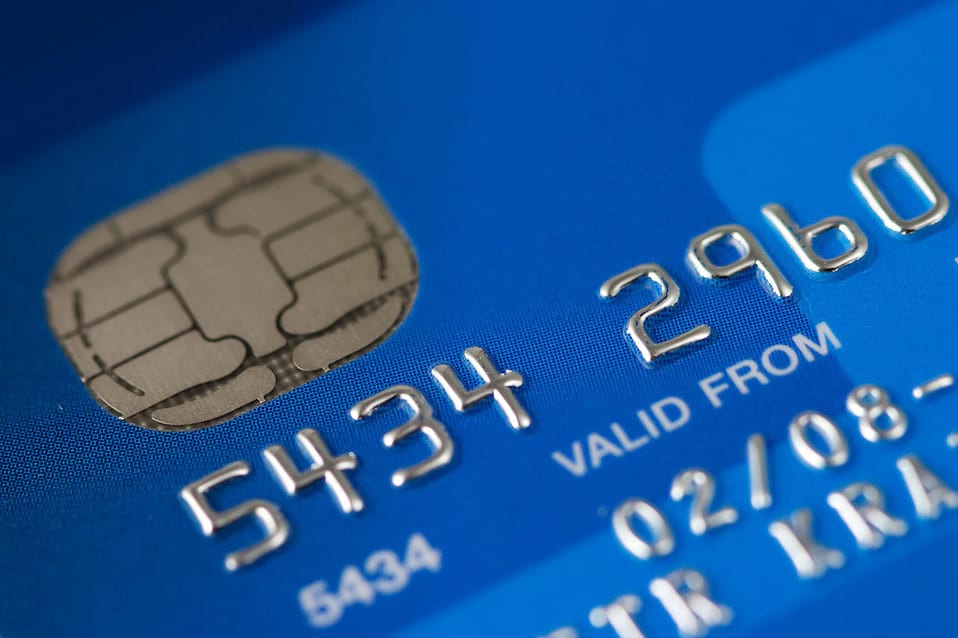
With the holiday shopping season heading into its final stretch, scammers are out in full force to take advantage of busy shoppers. In particular, credit card fraud is rampant during this time of year. Stay safe this season and protect yourself and your cards from fraud with these safety measures and preventative tips:
Monitor your credit cards
Stay alert and learn about the first signs of fraud to your credit accounts by reviewing your credit card statements carefully. It’s also a good idea to enroll in available alerts so you are notified of unusual and/or large purchases made on your card, and transactions made in remote or obscure places. Credit cards issued by KCCU offer fraud services to protect your account using automated text messages if fraud is suspected or to verify a recent purchase. KCCU credit card holders can also use Card Controls to receive alerts when transactions are made on cards.
Strengthen your passwords
Take some time out during this busy season to review the passwords on your accounts. Does each account have its own unique password? Are your passwords strong, using a combination of letters, numbers, and symbols as well as varied capitalization use? If any passwords use your personal information, such as your date of birth, your hometown or your mother’s maiden name, change them. Easily cracked passwords like these can be used to hack into multiple accounts and can even lead to identity theft. Keep your passwords strong and change them from time to time to prevent fraud.
Shop with caution
Be an alert shopper this holiday season to avoid falling victim to credit card fraud. Only shop reputable sites and avoid clicking on pop-up ads or links in emails coming from unverified senders. To confirm a site’s security, look for the lock icon before the URL and the “s” after the “http.” Finally, make sure you are using a device that has updated security settings and choose a VPN (virtual private network) if you must use public Wi-Fi.
Be wary of “support staff” calls from your credit card issuer
Some scammers resort to phishing calls for pulling off credit card fraud before the holidays. In these scams, a target will receive a phone call from someone who allegedly represents their credit card company or financial institution. The “support staff member” will tell the target there’s been an issue with their account and that it needs to be updated before the card can be used again. The caller will then ask the cardholder to share sensitive information, such as their card numbers, account details, passwords and more. Unfortunately, if the cardholder complies, they will be playing directly into the hands of a scammer.
If you receive a phone call like the one described above, hang up and block the number. You can reach out to your card issuer on your own to check if there really is a problem with your account; but chances are, everything will be in proper order. Please know that if you talk to KCCU’s fraud services department we will never ask you for your full credit card number, nor will we ask you for your social security number.
Keep your cards close
Don’t forget to take basic precautions with your credit card this season, especially if you’ll be hitting a lot of shops before the holidays. Keep your card tucked into your wallet or purse. If you use a cardholder on your phone case, keep your phone in a safe place and make sure the card numbers are not visible to passersby. Finally, put your card away immediately after completing a purchase.
Take immediate action if there are signs of fraud
If you suspect your credit card has been stolen or hacked, alert your credit card issuer / KCCU immediately. Your old card will be canceled to prevent the scammer from making additional charges and you’ll be issued a new one so you can complete your shopping. Consider placing a credit freeze on your accounts as well, which will make it nearly impossible for the fraudster to open new accounts or take out loans in your name.
Stay aware this holiday season and keep your money and your information safe!
Needs Vs. Wants: How to Tell the Difference

One of the most important parts of setting up a monthly budget is separating needs from wants. Before assigning dollar amounts to any categories, it’s important to know which parts of your monthly expenditures are an absolute need, and which items would be nice to include, but are not a necessity. Many people find this particularly challenging, and many even give up on budgeting when they can’t move past this step.
Fortunately, it doesn’t have to be this way. Below, we’ve outlined how to tell the difference between wants and needs, as well as how to separate these two categories on a monthly budget plan.
Defining needs and wants
A need is something that is necessary to live and function.
A want is something that can improve your quality of life.
Using these criteria, a need includes food, clothing, shelter, and medical care, while wants include everything else. However, as you’ll find when creating a budget, these terms are more fluid than they appear to be at first glance. While working through your lists, you may find that some items can fit into both categories, making the process confusing.
A good trick for dividing wants from needs is to let some time pass before fulfilling your desire for the item, either theoretically or practically. The desire to obtain a need only grows stronger as time passes, while the desire to fulfill a want will weaken with passing time.
Listing your needs and wants
Now that we’ve defined each of these budget categories, you can begin listing your own needs and wants.
Start with your needs, including the basics, like food, rent or mortgage, as well as other fixed expenditures that are necessary for you to live and function. Those things may include transportation costs, health insurance coverage and any clothing or tools you need for work.
It’s important to note that needs will vary from one person to another, and even for one person at different stages of life. For example, a family with two working parents who live in a community where there is no reliable public transportation may require two vehicles. Conversely, a family living in a city with several dependable transportation systems may list a second car as a want. Similarly, a four-bedroom home may be a need for a family while they’re raising several young children but turn into a want later when the kids go off to college.
If you get stuck on a particular item and don’t know where to place it, hold it up to the following questions:
- Do I really need this item to live and function?
- Is it possible to fill this need in a less expensive way?
- How would my life be different if this item were not a part of it? When you’ve completed your list of needs, you can list all remaining expenses in your category of wants.
Reviewing and tweaking your lists
After completing this exercise, review your list of needs to see if anything can be removed. Will you still need these items a few years from now, or even a few months from now? Can any of your needs be swapped for a cheaper option? For example, you may need clothing, but do you need eight pairs of designer jeans?
Do the same for your list of wants. Which of them are only there because of pressure to keep up with others or look good? Which of your wants were more important to you in the past than they are today? Which are status symbols? Pare down your list until you’re only left with the wants that truly add value to your life.
Now that you know how to tell the difference between needs and wants, creating a monthly budget is simple. Assign dollar amounts to your fixed and non-fixed needs, set aside money for savings and use the rest to pay for your wants.
Going forward, you’ll likely also have an easier time keeping your impulse buys under control. Before purchasing an item, ask yourself if it’s a need or a want. If the item is a want, consider its importance and other wants you’ve recently bought before going ahead with the purchase.
Separating wants and needs can be one of the most challenging parts of creating a monthly budget. Follow the steps outlined above to learn how to make the distinction between these two spending categories with ease.
Tips for Purchasing Your Car Online

No matter how you plan to purchase your next vehicle, the car buying process can sometimes be overwhelming. Fortunately, online dealers, like the popular Carvana, have streamlined the process and created more transparency in their pricing. But doing your car shopping 100% online doesn’t always mean 100% less stress.
We’re here to help. If you’re looking to purchase your next car online, check out these tips.
Tip #1: Finalize Your Financing
Before you set foot on the virtual lot, determine what your budget is. It’s good to get pre-approved for an auto loan so you can shop the online showroom with confidence. If you want to get pre-approved for an auto loan with KCCU contact us and we can help. Learn more about KCCU auto loans
When your finances are firmed up, the fun can begin. Through online dealers like Carvana, you can filter vehicles based on your budget. It’s a great way to shop for cars you know you can afford.
Tip #2: Do Your Research
It’s not just about finding a car within your budget, it’s about finding a car that you love within your budget. Which means you’ll have some digging to do. Are you looking for great fuel economy? Off-road versatility? Trailer and towing capacity?
Figure out what features are a must and which you can live without. Once you know what you want, it's easier to narrow down your search. And be sure to check out Carvana’s 150-point inspection which includes a CARFAX history report.
Tip #3: Test Drive in Real Life
Purchasing a vehicle online doesn’t mean you can’t take a test drive. In fact, thanks to Carvana's 7-Day Return Policy, you can have the vehicle delivered to your driveway and drive it risk-free for a week. Isn't exactly what you wanted? They'll come pick it up for a full refund.
Tip #4: Cash in on a $100 Credit Union Member Reward
Finally, if you’re a credit union member, be sure to visit Love My Credit Union Rewards and receive $100 when you purchase a vehicle through Carvana. It’s just one of the many perks of being a credit union member.
Get pre-approved for your auto-loan today and start shopping over 20,000 vehicles with Carvana all from the comfort of home! Visit carvana.lovemycreditunion.org today!
* Valid only for Carvana purchases through LoveMyCreditUnion.org. See Terms and Conditions.
Beware of these Spooky Scams

That cackling, long-haired witch might send your heart fluttering with fear, but these Halloween scams are even spookier! Here’s what to know about these common Halloween scams.
1. The Joker
Desperate for money before the holiday shopping season hits? Looking to pad your pockets with a bit of extra cash? Scammers know this all too well, and target consumers with messages promising loads of money for very little work. All you need to do is send a small amount of money to a designated digital address via CashApp, Venmo, or another money transfer app, and your money will be doubled, tripled, or more.
Don’t fall for the tricks! Much like another variation of the money-flipping scam, they’ll ask you to share your account information so they can withdraw the money and then “treat” you with the cash you’ve earned. It’s like getting free money – which, of course, doesn’t exist.
Spot a money-flipping scam through the amateur writing and too-good-to-be-true promises. Any request for you to share your banking information is another dead giveaway.
2. Night of the Living Dead
This scam can be pulled off at any time of year, but it takes on an extra level of spookiness when yards are decorated with ghosts and cobwebby graveyards. In the deceased identity theft scam, scammers steal the identity of someone who is no longer living. They may empty the decedent’s accounts, pass off their credit history as their own and use their Social Security number to collect benefits, apply for a job, and more.
Protect a loved one’s identity from being stolen after they pass on by taking steps to lock down their social media accounts, credit report, and Social Security number. Keep an eye on their accounts until their assets have been lawfully divided.
3. Trick or Treat
You found the perfect costume online, and for a bargain price! You happily pay up, complete your order and wait for the package to arrive. And wait. And wait. Unfortunately, you’ve been tricked.
In a variation of the online order scam, the package arrives on your doorstep as promised, but has little resemblance to the way it looked online. The quality may be lacking, the size and color completely off, or important components missing. You may try to find a customer service line, but there’s no working number listed. You may also try returning the purchase, but a street address for returns will be more elusive than the invisible man.
Don’t get tricked! Only order from reputable sites that display complete contact information for the company. Ignore all offers that scream “Hot Deal! Act Now!” and feature prices that are way below the average sale price. Shop with caution and you’ll only walk away with treats.
Chip Shortage and Mail Delays affect the financial industry
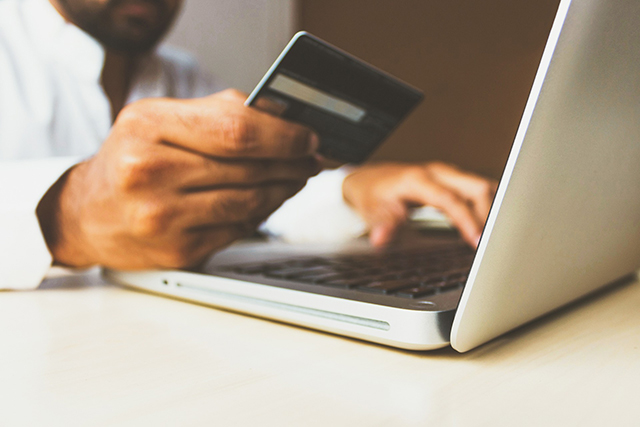
Navigating our new normal since the pandemic brings new challenges in all industries including the world of finance.
The payment industry as a whole is facing a shortage of EMV chips used in payment cards such as debit and credit cards. This shortage is due to supply chain disruptions as well as the national labor shortage. Unfortunately, the shortage is expected to last well into 2022. Couple this with the United States Postal Service (USPS) revised service standards that went into effect on October 1, 2021 for certain First-Class mail, it will cause even more of a delay for when Kellogg Community Credit Union (KCCU) members will receive their debit and credit cards in the mail. For many of us, our debit and credit cards are our lifeline for making purchases!
KCCU is trying to minimize the impact to our members as much as we can by working with our vendors to stay abreast of any further delays. Below are a few tips on how KCCU members can access their funds while waiting on their new debit or credit cards to arrive. Members do have the option of expediting their cards for a $20 fee (this is a reduced rate based on the current environment). When cards are expedited, they should arrive to the member within 4-5 business days of the order being placed.
Debit Card
When a new checking account is opened in any of our branch locations, our Member Service Representatives can issue a temp-to-perm card. This is a temporary debit card that can be used until the permanent card arrives in the mail. When a member is issued a temp-to-perm card, the card number on their permanent card will be the same as the temp-to-perm. However, the expiration and CVV code will change when they receive their permanent debit card.
If a KCCU member loses their debit card, or if we must cancel their debit card due to fraudulent charges on their account, they can stop into a branch and request to have a temp-to-perm card issued which will ensure they can continue to access their funds until their permanent card arrives. If members are not able to get to a branch, we recommend they call as soon as they lose or experience fraud on their account to get a new card ordered.
When new and existing members need cash, they can go into any KCCU branch location, or they can visit an Xtend or Co-Op Shared branch location to do a cash withdrawal.
Credit Card
KCCU does not have the capability to offer temp-to-perm credit cards. If KCCU members need immediate access to their Visa line-of-credit, they can do a cash advance into their checking or savings account within online banking. From their checking account they can use their debit card (if they have one) to make purchases. Otherwise, members can do a cash withdrawal at any KCCU branch location or they can visit an Xtend or Co-Op Shared branch location.
Mail Payments and Bill Pay
With the USPS delays, KCCU is recommending that when members pay bills with physical checks, they mail their checks a few days earlier than they have in the past to ensure their payment arrives on time. This is also true with KCCU’s online Bill Pay system. Most payees are sent funds electronically so there should be no delay in payments. However, for some of the smaller or local payees, our vendor may still mail a physical check. With US Mail service taking possibly a day or two longer to get delivered, we encourage members to pay their bills a few days earlier so their payment arrives on time.
These are unprecedented times, and we appreciate your patience as we all manage through the chip shortage and mail delays.
Talk to Kids About Money

We want what’s best for our kids and to teach them everything to set themselves up for success as adults. Among these is understanding finances and managing money. Parents may question the best time to start teaching kids about money and many experts answer - the sooner the better. Kids can learn a lot watching their parents, especially watching the preparations at the beginning of the school year. What they see can set a pattern for life. Everyone looks forward to new beginnings, even as we continue to manage the challenges the pandemic provides. Now is a great time for the whole family to establish new habits.
Start Early
Experts say children as young as five or six can understand the basics of money. Gather the whole family together when you talk about available funds for back-to-school supplies, clothes and any needed technology purchases. Even before they are in first grade, children can understand what money is and how to spend and save it. The conversations may vary depending on your child’s age, but the general idea is the same - teach them that not every school supply is a “need” and that there are some budgeting limitations to follow.? This will help them become comfortable talking about money and understand how budgeting plays a part in shopping.
Plan Ahead
Before heading out to the stores or to your favorite site online, work with the family to take inventory?of what your child has now and what can be reused during the new school year. Set aside enough time to have a conversation about what is truly needed this school year, what can be reused, and what items fit in the budget. If you have more than one child, remember that there is nothing wrong with hand- me-downs! See if your child’s school website has a?shopping list for each individual grade. That way you can identify things that they need right now and what can wait. With the store shelves already packed with back-to-school supplies and clothes, have your kids help to build a shopping list, then stick to it. Whether you shop online or in the stores, a little planning can help you save a lot of money.
Be a Smart Shopper
Once you’ve worked with the kids to build the shopping list, have a family meeting to pick the best stores or websites to shop. Compare prices. Look at sales and promotional pricing. Plan your shopping trip around the best deals for your budget. For those in-person purchases, don’t buy all your supplies from one store.?Shop around!?Certain stores will price match or have better prices. Talk to kids about avoiding trendy supplies that feature the latest movie, superhero or cartoon characters. Usually, themed back-to-school supplies can cost 20-30 percent more than their generic counterparts.? Having this conversation ahead of time, before the family heads to the stores, reduces the chance for “impulse” buying.
Wrapping Up
Talking about managing purchases with kids is not as challenging as you may think. It’s important to remember money plays an essential role in all of our lives. It’s good to start early by giving them the right information and leading by example. Budgeting, spending, saving – what we model is what our kids learn. For help getting your financial house in order, contact our partners at GreenPath

6 Steps to Crushing Debt

You and debt are so over. You’ve just about had it with those endless piles of credit card bills and those hideous numbers that never seem to get any lower. It’s time to kiss that debt goodbye!
Getting rid of high debt will take hard work, willpower, and the determination to see it through until the end, but it is doable. Below we’ve outlined six steps to help you start crushing debt today.
Step 1: Choose your debt-crushing method
There are two approaches toward getting rid of debt:
The snowball method
The snowball method, popularized by financial guru Dave Ramsey, involves paying off your debt with the smallest balance first and then moving to the next-smallest, until all debts have been paid off.
The Avalanche method
The avalanche method involves getting rid of the debt that has the highest interest rate first and then moving on to the debt with the second-highest rate until all debts have been paid off.
Each method has its advantages, with the snowball method placing a heavier emphasis on achieving results at a faster pace, which then motivates the debt-crusher to keep going, and the avalanche method, focusing more on actual numbers and generally saving the borrower money in overall interest paid on their debts. There’s no right approach, and you can choose whichever method appeals to you more.
Step 2: Maximize your payments
Credit card companies are out to make money, and they do this by making it easy to pay just the minimum payment each month, thus really paying only the interest without making progress on the actual principal, thereby trapping millions of consumers in a cycle of endless debt. Beat them at their game by maximizing your monthly payments. Free up some cash each month by trimming your spending in one budget category or consider freelancing for hire and channel those freed-up or newly earned funds toward the first debt on the list you created in Step 1. Don’t forget to continue making minimum payments toward your other debts each month!
Step 3: Consider a debt consolidation loan
If you’re bogged down by several high-interest debts and you find it difficult to manage them all, you may want to consider consolidating your debts into one low-interest loan. A personal loan from Kellogg Community Credit Union can provide you with the funds you need to pay off your credit card bills and leave you with a single, low-interest payment to make each month. Or, you can transfer your credit card balances to a single card with a low-interest rate like KCCU’s Edge or Elite Visa credit card. Beware of cards that offer no-interest introductory period as you might get hit with high interest rates when the introductory period ends, so really look at the interest rate you’ll pay once the introductory period is over.
Step 4: Build an emergency fund
As you work toward pulling yourself out of debt, it’s important to take preventative measures to ensure it won’t happen again. One of the best ways you can do this is by building an emergency fund. Ideally, this should hold enough funds to cover your living expenses for three to six months. Start small, squirrelling away whatever you can in a special savings account each month, and adding the occasional windfall, like a work bonus or tax return, to beef up your fund.
Step 5: Reframe your money mindset
Sometimes, like when there’s a medical emergency or another unexpected and expensive life event, a consumer can get caught under a mountain of debt through no fault of their own.
As you work on paying off your debts, take some time to determine what got you into this mess in the first place. Are you consistently spending above your means? Is there a way you can boost your salary or significantly cut down on expenses? Lifestyle changes won’t be easy but living debt-free makes it all worthwhile.
Step 6: Put away the plastic
Credit cards are an important component of financial health and the gateway to large, low-interest loans. However, when you’re working to free yourself from debt, it’s best to keep your cards out of sight and out of mind. You can set up a fixed monthly bill to charge one or more of your cards to keep them active, but only do this if you know you will pay off the charge in full before it’s due. Learning to pay your way using only cash and debit cards will also force you to be a more mindful spender.
Kicking a pile of debt can take months, or even years, but there’s no life like a debt-free life. Best of luck on your journey toward financial freedom!
guide to buying an RV

If you’re ready to purchase an RV the number of choices to make can be overwhelming. The price range for different vehicles is enormous and choosing between a new or used vehicle can be tricky. To help you through the process, we’ve outlined the steps to take, factors to consider and general tips for purchasing an RV. Let’s get started!
Determine your RV class
When choosing an RV, you’ll need to decide between the three RV classes: Class A, Class B and Class C.
Class A
Class A RVs are the largest and the most comfortable. Built on big-rig platforms, these are basically rolling houses. They feature full-sized couches and TVs, full bathrooms, kitchens and expandable bedrooms that can sleep up to 10 people. The price tag for a new Class A RV can range from $60,000 to over a million for custom-built motorhomes.
Class B
Class B motorhomes, also called campervans, are a lot more modest. Built on full-size van platforms, they include scaled-down versions of the same amenities as Class A motorhomes in a more maneuverable, cheaper package. You’ll still have the kitchen and bathroom, but think postage-stamp size as opposed to full-sized rooms. Typically you can sleep three people in a Class B RV. These vehicles new cost between $50,000 and $100,000.
Class C
Class C RVs aim for that sweet spot between the luxurious Class A and the no-frills Class B motorhomes. These start with cargo-van platforms and extend the wheelbase until it’s roughly equal to the length of a small bus. Amenities are more enhanced than those found in a Class B, but nowhere near as robust as in a Class A. These vehicles run new between $60,000 and $200,000.
Choose between new or used
Like all vehicles, new RVs will cost a pretty penny, but there are several distinct benefits to going this route. First, you’ll likely have an easier time securing financing when purchasing a new RV. You’ll also have the option of buying an extended warranty for your vehicle, which will cover any issues that may arise after the manufacturer’s warranty expires, which is generally after one or two years. Finally, you’ll have a broader range of options to choose from when buying a new RV.
On the flip side, purchasing a used RV can save you thousands of dollars and still provide all you’re looking for in a motorhome. Also, you may never recover the inflated cost of a new RV, as most will depreciate steeply during the first year or ownership, some by as much as tens of thousands of dollars.
Secure financing
Once you’ve made up your mind about the kind of RV you’d like to purchase, you’re ready to move ahead and secure financing.
If you’ve been saving up for this purchase for a while and have the cash you need to make it happen today, you’re all set! However, if you’re looking for a loan to make your dream vehicle yours, you can choose between a private lender, and a financial institution, such as a bank or credit union.
Securing a loan from a private lender, such as an online lender, means borrowing money from a lender that is not affiliated with any institution and typically isn’t local. These loans generally require an excellent credit score and, sometimes, a cosigner. Interest rates vary but are often higher than a loan from a credit union.
When you take out an RV loan from Kellogg Community Credit Union, you’re guaranteed a favorable interest rate with payback terms you can afford, easy eligibility requirements, and the excellent service you’ve come to expect from our team. If you’re ready to take out an RV loan, call, click, or stop by Kellogg Community Credit Union today to get started.
cost-cutting tips when planning a wedding
.jpg)
Did you know that the cost of the average wedding in the U.S. is $28,000*? That’s an awful lot of money to spend on one event, especially when you consider that just 12% of couples have wedding savings when they get engaged, according to a study by Behind the Wedding Budget. This means that for many couples, the honeymoon is over as soon as those bills start coming due.
Fortunately, it doesn’t have to be this way. With some careful planning, prioritizing what’s important to you and your spouse-to-be, and by following some of the cost-cutting tips outlined here, you can have the wedding you desire and your budget, too.
Choose your number-one priority
Most couples-to-be have some fantastical dreams about their wedding day. Maybe it’s an enormous wall of flowers that will be outrageously beautiful and make guests’ eyes pop. Maybe it’s an elaborate, custom-made wedding gown that will turn you into a vision. Or maybe it’s a wedding aisle filled with hundreds of floating candles.
Whatever your dream, it probably costs a pretty penny to fulfill. To avoid going into debt for your special day, choose the one item for your wedding that is most important to you, at almost any cost. Trim costs in other places to leave extra room in your budget for your numero uno, and if you start to feel like going overboard in another area, remind yourself that this part of your wedding will be just like you’ve dreamed.
Skip the invites (average cost: $590)
Snail mail is so last millennium. Bring your wedding up to date and tighten your budget by creating a cost-free e-invite that includes all the wedding details along with an option to RSVP through an embedded link. You’ll be doing your wallet, and the environment, a favor!
Choose a nontraditional venue (average cost: $10,500)
A typical venue can take the biggest bite out of a wedding budget. Make your wedding extra-special and save on costs at the same time by choosing an out-of-the-box venue, like an art gallery, your favorite upscale restaurant, or even atop a scenic lookout point. Just make sure to factor in the cost of amenities you may need to rent for your location, such as lights, tents, silverware and flatware, and portable bathrooms.
Skip the rehearsal dinner (average cost: $1,900)
Yes, you can get married without the rehearsal dinner! Wouldn’t you rather skip the practice round and put that money toward something with lasting value? If you feel like you need a rehearsal to make sure everything goes smoothly, ask the officiator and the members of the bridal and groomsmen party to practice the ceremony only in a short, no-food run-through.
Choose a non-bridal gown (average cost: $1,600)
Everything on your list becomes more expensive when you tack on the word “wedding”. Save on one of these expenses by purchasing a gown that is not designed exclusively for a wedding. Any floor-length white gown you pick up in a department store or boutique will do, and you can always add embellishments to dress it up a bit. You’ll still save a fortune on the cost of your bridal gown.
Limit your guest count (average cost per guest: $70)
Each person at your reception really counts. So many parts of your wedding, from the catering, to the bar, to the cake, cost more with every added person. Keep your wedding intimate by only inviting guests who will add real joy to your special day. You can limit the plus-ones, specify that the reception is adults-only or restrict the guest list only to people who are currently in your life instead of inviting every old friend and acquaintance. Trimming 20 guests from your list can easily save you a thousand dollars.
Get flowers from florists’ overstock (average cost: $2,000)
If you’re getting married during a busy wedding season when florists have events several times a week, you may be able to get your flowers at a fraction of the usual cost — or at no cost at all. Ask floral designers about excess inventory they need to get rid of before it goes bad. They may be more than happy to have you take these blooms off their hands for a low price, or even for free.
You can also save on the cost of flowers by sticking to in-season and locally-grown blooms only. As a bonus, flowers that didn’t have to travel for hours or days to get to your wedding will look fresher and more vibrant.
Rethink your cake (average cost: $500)
Every tier on that creamy cake will cost you. Consider a shorter or narrower cake for pictures and cutting, and have the caterer serve a frosted sheet cake so there’s enough for all your guests. If you dare, you can also save a few hundred bucks by opting for a nontraditional dessert, like your favorite pie or warm brownies with store-bought ice cream.
Why you need to be financially fit
Americans spend hundreds of dollars a year, as well as countless hours keeping themselves physically fit — but too many people neglect their financial health. Just like physical health, being financially fit is crucial to your wellbeing, your future, and your quality of life.
Here’s why being financially fit is so important and how you can overcome common barriers to achieving financial wellness.
Financial wellness: a ripple effect
Being financially fit is about more than just having enough money in your account to cover your expenses and put away something for tomorrow. Managing money responsibly will affect many aspects of your life:
Marriage
According to a recent study by AARP, financial problems are the second leading cause for divorce in the country. Money brings resentment and arguments into a marriage. In a study reviewing over 740 instances of marital conflict between 100 couples, money was found to be the most common topic couples argued about.
Mental health
Money stress can severely affect your mental health, causing depression, restlessness, anxiety and more.
Physical health
Stressing over finances can also directly impact your physical health, leading to recurring symptoms like headaches, fatigue, upset stomach, insomnia, high blood pressure and an increased risk of heart disease and stroke.
Work life
Being bogged down by money worries can make it difficult to focus while at work, which can bring down productivity levels and hamper career growth. In addition, prospective employers tend to review the financial wellness of new hires as part of their background checks; high rates of debt and a poor credit score can cost an employee a new job.
Parenting
Managing money irresponsibly can mean not having sufficient funds to pay for a child’s education, medical needs, extracurricular activities and more.
Money stress
What are the leading causes of money stress?
According to a survey by Credit Wise®, 73% of Americans rank money issues as the number one stressor in their lives. Here are the top causes for financial stress:
- High-interest debt
- Insufficient savings
- Medical bills
- Living paycheck to paycheck
- Lack of retirement planning
Stressing over money is never fun. Stressing over money, when any of the above applies to you, takes on its own form of angst by adding a level of long-term anxiety. It takes time, sometimes years, to undo the damage of any of these stressors — but it can be done!
Barriers to financial wellness and how to overcome them
We’re convinced: being financially fit is crucial. But what happens now? Why are 80% of Americans in debt? Why do only 39% of Americans have enough saved up to get them through a $1,000 emergency?
Unfortunately, while many people may understand that financial fitness is crucial to their wellbeing, there are several barriers that make it difficult to follow through on their convictions.
First, many lack the basic financial knowledge necessary to responsibly manage their money. Second, many people mistakenly believe that budgeting, saving and being more mindful of how they manage their money is too time-consuming and tedious. Finally, some people may have fallen so deeply into debt, they’ve begun believing they will never be capable of ever pulling themselves out.
How to Achieve financial wellness
Here are some simple steps you can take today to help you achieve and maintain financial wellness:
Get educated
There is no shortage of financial literacy available to the interested consumer, from financial literacy blogs to personal finance books, podcasts, online classes and so much more. Learning how money works, the power of a long-term investment and how much you’re really paying each time you swipe that high-interest credit card can help you make better choices.
Have the money talk with your partner
Whether you’ve only been sharing expenses for half a year or you’ve been married more than a decade, it’s important to be on the same financial page as your partner. Talk openly and honestly, being careful not to be judgmental in any way, and discuss your individual and shared long-term and short-term money goals. Then come up with a plan for how you intend to reach them together.
Pay all bills on time
If you can’t take aggressive steps toward paying down debt just yet, be sure to make the minimum payment on each credit card bill every month.
Create a budget
Giving every dollar a destination makes it easier to spend mindfully and cut down on extraneous expenses.
Start saving
There’s no such thing as a sum of money that’s too small to put into savings. Every dollar counts, and once you get the ball rolling, you’ll be motivated to pack on the savings until they really grow.
You give your abs a great workout each day — now it’s time to get those money muscles into shape! Follow the tips outlined above to always stay financially fit.
Your Complete Guide to Buying an RV

If you’re ready to purchase an RV the number of choices to make can be overwhelming. The price range for different vehicles is enormous and choosing between a new or used vehicle can be tricky. To help you through the process, we’ve outlined the steps to take, factors to consider and general tips for purchasing an RV. Let’s get started!
Determine your RV class
When choosing an RV, you’ll need to decide between the three RV classes: Class A, Class B and Class C.
Class A
Class A RVs are the largest and the most comfortable. Built on big-rig platforms, these are basically rolling houses. They feature full-sized couches and TVs, full bathrooms, kitchens and expandable bedrooms that can sleep up to 10 people. The price tag for a new Class A RV can range from $60,000 to over a million for custom-built motorhomes.
Class B
Class B motorhomes, also called campervans, are a lot more modest. Built on full-size van platforms, they include scaled-down versions of the same amenities as Class A motorhomes in a more maneuverable, cheaper package. You’ll still have the kitchen and bathroom, but think postage-stamp size as opposed to full-sized rooms. Typically you can sleep three people in a Class B RV. These vehicles new cost between $50,000 and $100,000.
Class C
Class C RVs aim for that sweet spot between the luxurious Class A and the no-frills Class B motorhomes. These start with cargo-van platforms and extend the wheelbase until it’s roughly equal to the length of a small bus. Amenities are more enhanced than those found in a Class B, but nowhere near as robust as in a Class A. These vehicles run new between $60,000 and $200,000.
Choose between new and used vehicles
Like all vehicles, new RVs will cost a pretty penny, but there are several distinct benefits to going this route. First, you’ll likely have an easier time securing financing when purchasing a new RV. You’ll also have the option of buying an extended warranty for your vehicle, which will cover any issues that may arise after the manufacturer’s warranty expires, which is generally after one or two years. Finally, you’ll have a broader range of options to choose from when buying a new RV.
On the flip side, purchasing a used RV can save you thousands of dollars and still provide all you’re looking for in a motorhome. Also, you may never recover the inflated cost of a new RV, as most will depreciate steeply during the first year or ownership, some by as much as tens of thousands of dollars.
Secure financing
Once you’ve made up your mind about the kind of RV you’d like to purchase, you’re ready to move ahead and secure financing.
If you’ve been saving up for this purchase for a while and have the cash you need to make it happen today, you’re all set! However, if you’re looking for a loan to make your dream vehicle yours, you can choose between a private lender, and a financial institution, such as a bank or credit union.
Securing a loan from a private lender, such as an online lender, means borrowing money from a lender that is not affiliated with any institution and typically isn’t local. These loans generally require an excellent credit score and, sometimes, a cosigner. Interest rates vary but are often higher than a loan from a credit union.
When you take out an RV loan from Kellogg Community Credit Union, you’re guaranteed a favorable interest rate with payback terms you can afford, easy eligibility requirements, and the excellent service you’ve come to expect from our team. If you’re ready to take out an RV loan, call, click, or stop by Kellogg Community Credit Union today to get started.
End-of-Summer Savings

Would you love to pick up some great bargains as the summer winds down, but not sure what you should be buying this season? Find out which products typically go on sale in August and which should be pushed off for another time.
As host to the second-biggest shopping season of the year, the tail end of summer brings some fantastic finds, but some overpriced products as well. Here’s what to buy and what to skip in August.
Buy: Outdoor toys
Outdoor toys, like sandboxes, bikes, inflatable pools and more, typically get big discounts in August. Check out sites like Overstock, Wayfair and look for markdowns on playground sets at retailers like Lowe’s and Home Depot.
Skip: Major household appliances and mattresses
If you’re in the market for a new oven, mattress or another major household purchase, it’s best to wait until September. Retailers tend to slash the prices on these items by 30% or more during Labor Day weekend sale events. Plan ahead by checking out upcoming sales in the weeks leading up to Labor Day. Doing so will help you land the best prices on your purchases.
Buy: Swimwear
Stores and online retailers need to clear out their summer stock to make room for the autumn and winter line, which gives you the perfect opportunity to snag a super swimsuit deal! You can walk away with great finds at ridiculously low prices you won’t find next spring. Stash your treasures for next year’s beach season or keep them for a winter getaway to warmer climates with sunny shorelines.
Skip: iPhones
If you’re looking to update your iPhone, you’re best off waiting it out a month or two. The new iPhone 13 is expected to be released in mid-September. Older models typically see a price cut when new models hit the market. So, whether you want to score the best price on an older phone or you’re willing to pay anything for the latest and greatest in iPhones, put the brakes on that purchase until September.
Buy: School supplies and kids’ clothing
With back-to-school shopping seemingly starting almost as soon as school is out for the summer, August is already late in the season. It’s also when school supplies and kids’ clothing tend to see generous markdowns. Stock up on supplies to last all year long and get your kids outfitted for the coming season at rock-bottom prices in August.
Skip: TVs
Don’t run out and buy a new TV just yet. If you need a new flatscreen, you’re best-off waiting for Black Friday to get the best deal.
Buy: Office supplies and furniture
Back-to-school sales means you can also cash in on office supplies and furniture. If you’re one of the many Americans working from home, you may need to restock your home office with basic supplies or to upgrade your office chair or desk. Why not save on these purchases by paying for them in August?
Skip: Fall clothing
Fall apparel will just be hitting the stores in August, so you likely won’t be seeing any steep discounts on fall wear until October at the earliest. It’s best to buy just a few autumn basics during the Labor Day sales and fill out the rest of your wardrobe later in the season.
Buy: Patio furniture
Those wicker table-and-umbrella sets can get pricey! Pick up a sweet deal on patio furniture by buying your sets and single pieces at the end of the season. While you’re giving your patio a facelift, you’ll also find grills, outdoor decor and more on sale in August.
The final dog days of summer bring a flurry of marked-down products and end-of-season sales, but there are some items that are best purchased during another time of year. Stay ahead of the retail game by using this guide to learn what to buy and what to skip in August.
new online banking design
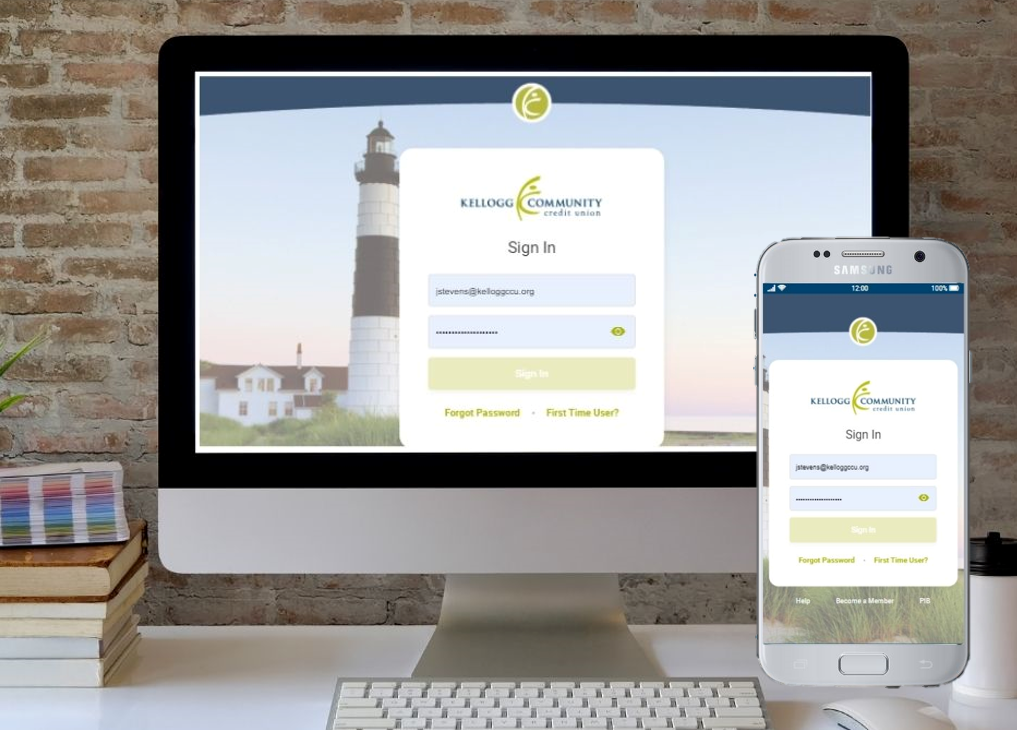
We are excited to announce that today (July 28, 2021), we launched a new look and user experience for our Online Banking! This new version of It’sMe247 online banking combines both the desktop and mobile versions into a single design that works on every device. So, whether you are using your phone, tablet, or home computer, the overall look and feel will appear uniform across all platforms.
new look - same great service!
It'sMe247 will offer all the same great functionality plus some exciting new features as well!
- Simplified log in screen
- Easy to navigate
- Quick access to tools you need
- List your favorite accounts in the order you want to see them
- List your favorite features on the home page – Bill Pay, Quick Transfer, Message Center, etc.
- Search transaction history
- And more!
what's NOT changing
Rest assured, the following items will remain the same.
- Your username, password and security questions
- Bill Pay program - including saved payees
guided tour video
See the updates for yourself in our guided video tour! links
- Visit the new online banking
- New It'sMe247 interface FAQs
think before you buy
.jpg)
Have you been bitten by the gotta-have-it bug? It could be a Peloton bike that’s caught your eye, or maybe you want to spring for a new entertainment system, no matter what the cost may be. Before you go ahead with the purchase, though, it’s a good idea to take a step back and follow the steps outlined here to be sure you’re making a decision you won’t ultimately regret.
Step 1: wait it out
Often, a want can seem like a must-have, but that urgency fades when you wait it out. Take a break for a few days before finalizing a large purchase to see if you really want it that badly. For an extra-large purchase, you can wait a full week, or even a month. After some time has passed, you may find that you don’t want the must-have item after all.
Step 2: consider your emotions
A bit of retail therapy every now and then is fine for most people but draining your wallet every month to feed negative emotions is not. Before going ahead with your purchase, take a moment to identify the emotions driving the desire. Is this purchase being used as a means to fix a troubled relationship? Or to help gain acceptance among a group of friends, neighbors or workmates? Or maybe you’re going through a hard time and you’re using this purchase to help numb the pain or to fill a void in your life. Be honest with yourself and take note of what’s really driving you to make this purchase. Is it really in your best interest?
Step 3: review your upcoming expenses
What large expenses are you anticipating in the near future? Even if you have the cash in your account to cover this purchase, you may soon need that money for an upcoming expense. Will you need to make a costly car repair? Do you have a major household appliance that will need to be replaced within the next few months or property taxes due? By taking your future financial needs into account, you’ll avoid spending money today that you’ll need tomorrow.
Step 4: find the cheapest source
If you’ve decided you do want to go ahead with the purchase, there are still ways to save money. In today’s online world of commerce, comparison shopping is as easy as a few clicks. You can use apps like ShopSavvy and BuyVia to help you find the retailer selling the item at the best price.
Step 5: choose your payment method carefully
Once you’ve chosen your retailer and the item you’d like to purchase, you’re ready to go ahead and make it yours! Before taking this final step, though, you’ll need to decide on a method of payment.
pay in cash
If you’ve saved up for this item and you have the funds on-hand for it now, you can pay up in cash or by using a debit card. This payment method is generally the easiest, and if it’s pre-planned, it will have little effect on your overall budget.
use your credit card
If you can’t pay for the item in full right now, consider using a credit card with a low interest rate. Most credit card payments have the added benefit of purchase protection, which can be beneficial when buying large items that don’t turn out to be as expected. Before swiping your credit card, though, be sure you can meet your monthly payments, or you’ll risk damaging your credit score.
get a loan
Another option to consider is a signature or personal loan. It allows you to make your purchase and then have fixed installment payments over time. This approach too should only be chosen if you are certain you can meet the future payments.
Large purchases are a part of life, but they’re not always necessary or in the buyer’s best interest. Follow these steps before you finalize an expensive purchase.
Why do I Get a Warning “A data breach on a site or app exposed your password” in Chrome?
When entering your username, password and/or security question to access the new It’sMe247 online banking or similar password-protected sites, you may get a pop-up warning you of a possible data breach that contains your email and password, similar to the image pictured below. This does not mean that your online banking account has been compromised. This message does not originate from It’sMe247 online banking or KCCU. This message is from your Chrome web browser, to serve as an added security feature.
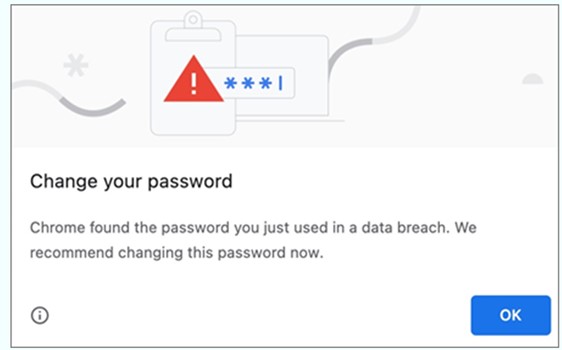
The Chrome browser now features built-in functionality where it can intercept password fields and compare them against lists of over 4 billion compromised passwords exposed in innumerable security breaches over the years. If you see this message, it means Google hit a match when scanning your credentials. As of now, Google Chrome doesn’t show what site or app experienced the breach, because they use heavily encrypted and secured algorithm.
Password warning and new online banking
KCCU will be launching an enhanced online banking system on July 28. While it’s possible for users to encounter this message using the current version of It’sMe247 online banking, users may notice this more frequently with the new It’sMe247.
What should I do if I see this alert?
If you receive this message when logging in to your online banking, don’t worry, this does not mean your account has been compromised. However, we do recommend that you change your online banking password to something that is more complex. You will also want to change the password for any other sites where you may have used the same username, password and/or security question combination.
Password best practices
The best way to keep your accounts safe is by using good password practices. Here are a few password best practices to follow when creating and using passwords.
- Use different passwords for each account, app or site you log into.
- Length trumps complexity – longer passwords or pass phrases are harder to crack
- Complexity still counts – use numbers and symbols to add complexity
- Make passwords that are hard to guess but easy to remember. Pass phrases work great.
- Never reveal your passwords to others.
- Use a third-party password manager instead of saving them in your web browser.
managing your money after the pandemic

Re-acclimating to normal life as pandemic restrictions are lifted and businesses reopen across the country will mean more than just getting used to wearing real pants again and working without your cat on your lap. You’ll also need to consider your finances. How has your overall money management changed during the pandemic? Have you dipped into your savings? Have you been letting your retirement accounts slide? Or, maybe you’ve been waiting for the chance to hit your favorite retailers again, and you can’t wait to splurge after a 15-month financial fast.
As you prepare to leap back into normal life, proceed with caution. Be sure to consider your full financial picture as well as long-term and short-term goals.
Here are some forward-thinking money moves to make as you adjust to post-pandemic life.
Review and adjust your budget
Pandemic times required their own budget, as people cut down on costs like dining out and updating work wardrobes but spent more on things like at-home entertainment. Others may have had to adjust their spending to fit a changed income level or to help them coast during a stint of unemployment. The pandemic may have also shifted some people’s mental list of needs and wants, as they found they can live with a lot less than they’d believed.
As you adjust to post-pandemic life, take some time out to review and tweak your monthly budget. Be sure to incorporate any changes in income, as well as a readjustment to pre-pandemic spending or changed priorities. You may need to review and adjust your budget, and maybe even your spending behaviors, every few months until you find a working balance.
Rebuild your savings
If you are one of the many Americans who were forced to dip into savings, or even to empty them completely, during the pandemic, create a plan to get your savings back on track. Tighten up your spending in one area until you’ve built up an emergency fund that can keep you going for 3-6 months without an income, or use a windfall, such as a work bonus or tax refund, to get the bulk of your emergency fund in place.
Once your emergency fund is up and running again, continue to practice basic saving habits, such as setting aside 20% of your monthly income for savings, or whichever approach you prefer. If the pandemic taught us anything, it is that it’s always best to be prepared, because you never know what can happen.
Rethink your long-term and short-term financial goals
The pandemic has prompted many people to reevaluate their goals. Retiring before you hit 50 or spending a month in Europe next summer may not be as important to you as you’d originally believed; or it may be even more important now. Similarly, you may realize your family has outgrown its living space and that moving to a new home is your number one financial priority. Or maybe you’ve decided you can live without a second car.
Take some time to rethink your long-term and short-term financial goals and adjust your savings and budget accordingly.
As you move through this step, be sure to consider any long-term goals you may have put on hold during the pandemic. Have you stalled your contributions to your retirement accounts or toward your child’s college tuition fund? Have you been making only the minimum payments on your credit cards? If any of these apply to you, be sure to revert your savings and debt payments back to pre-pandemic levels as soon as you can.
Spend with caution
It’s perfectly fine to enjoy a shopping spree in celebration of a return to pre-pandemic norms, but it’s best to spend with caution.
First, prepare to encounter inflated prices wherever you go. Gas prices have jumped recently, and costs of many consumer goods have spiked as well. If you planned to purchase a big-ticket item, you might want to wait it out a bit until prices cool off.
Also, you may be eager to make up for lost time, but no amount of nights out on the town will bring back the months you spent at home. Similarly, overbuying for this fashion season won’t bring back the seasons you spent at home in a hoodie and sweatpants. To avoid irrational overspending, set up a budget before you hit the shops and only spend what you’ve planned.
The restaurants and movie theaters are open for business again, and mask mandates are dropping all over the country. As life returns to pre-pandemic norms, be sure to consider the state of your finances and to make responsible, forward-thinking
Advance Child Tax Credit Payments
Q: I’ve heard that the IRS will start making advance payments toward the Child Tax Credit of 2021 this summer. What do I need to know about these payments?
A: The advance payments of the Child Tax Credits of 2021 will be distributed monthly to eligible families, beginning on July 15, 2021. Here’s what you need to know about these payments.
What are the changes to the Child Tax Credits for 2021?
As part of the American Rescue Plan Act (ARPA) of 2021, the Child Tax Credit (CTC) for tax year 2021 will be significantly expanded.
Here are the most important changes to the CTC for 2021:
- Families claiming the CTC will receive up to $3,000 per qualifying child between the ages of 6 and 17 at the end of 2021. The credit will include children who turn 17 in 2021.
- Families claiming the CTC will receive $3,600 per qualifying child under age 6 at the end of 2021.
- The credit for qualifying children is fully refundable. This means taxpayers can benefit from the credit even if they don’t have earned income or don’t owe any income taxes.
- Advance payments of up to 50% of the total CTC per family will be distributed once a month, from July 15 through Dec. 15, 2021.
For comparison’s sake, for 2020, the amount of the CTC was up to $2,000 per qualifying child under age 17 at the end of the year. Also, the credit was only refundable by up to $1,400 per child.
Who is eligible for the Child Tax Credits?
Taxpayers who have a primary residence in the U.S. and reside in it for at least half of the year, are eligible to receive the child tax credits.
The payments will begin to be phased out for married taxpayers filing a joint return and earning more than $150,000 a year, for heads of household earning more than $112,500 a year and for all other taxpayers earning more than $75,000 a year. Income eligibility will be based on 2020’s tax return (more on this later).
Do I need to take any action to receive the monthly payments?
Taxpayers need not take any steps to receive the advanced Child Tax Credits. Of course, taxpayers need to file their 2020 taxes, which were due on May 15, 2021. Filing electronically may speed up the receipt of the CTC payments.
How much money will I receive each month through the advanced Child Tax Credits?
The advance payments being sent to qualifying families from July through December will be equal to up to 50% of each family’s total Child Tax Credit. The payments will be based upon the income information found in taxpayers’ 2020 tax returns. If these were not filed yet, the 2019 tax returns will be used to determine each family’s eligibility.
Families eligible for the full CTC will receive half of the total across a six-month time span. This means eligible families will receive a total of $1,800 for children under age 6, or $300 a month per child from July through December, and a total of $1,500 for children ages 6-17, or $250 a month per child from July through December.
How will I receive my monthly payments?
The IRS has announced that payments will be issued in the same way as the three stimulus payments distributed to all eligible taxpayers since the start of the pandemic. If you received your stimulus payments via paper check, you’ll likely receive the CTC payments the same way, and if you received them via direct deposit, expect the same now.
The one caveat here is for those who have not signed up to receive their Economic Impact Payments via direct deposit but have filed their 2020 tax returns electronically. These taxpayers will receive their CTC payments the same way they filed their taxes; either electronically or via direct deposit.
Can I decline the opportunity to receive the advance payments of the 2021 Child Tax Credits?
Eligible taxpayers who do not want advance payments of the 2021 Child Tax Credit can choose not to receive them at this time. The IRS has not yet provided the public with instructions for how to officially decline the advance payments, but has promised to update its website when the instructions become available.
Is it a good idea to decline the advance payments of the 2021 Child Tax Credits?
While it is generally better to receive money owed to you upfront, under certain circumstances it may be better to decline receiving the advanced Child Tax Credits.
If you have reason to believe you will not be eligible for the full CTC amount at the end of 2021, you may end up owing the IRS some or all of the money you received when you file your 2021 taxes. This can happen if your income level rises in 2021, or if you have primary custody of the child(ren) receiving the credit in 2020, but not in 2021. If either of these may apply to you, consider opting out of the advance CTC payments. You won’t miss out on these payments, as you’ll receive whatever is owed to you at the end of 2021.
The advance CTC payments will be a boon for families who are struggling with the financial fallout of the pandemic, but it may not be in every taxpayer’s best interest to accept these payments now. Visit the IRS’s website to read up on the details of these payments so you can make an informed decision.
Upcycle for Low Cost Home Decor
Looking to add some sparkle to your home without spending a whole lot? Consider “upcycling” something you already have and using it in a different way. June 24th is Upcycle Day, which celebrates the art of taking old objects and furniture and using your creativity and craft to make it something new, unique and beautiful.
Not only can upcycling be cost effective and fun, it is a sustainable use of household goods. By recycling items instead of being wasteful, and reusing things that we might consider useless at first glance is a huge plus for the environment.
Project ideas
Here are some ideas to inspire your next upcycling project.
Move furniture around.
If something isn’t working for a particular room, try it in another room. An end table from the living room that you’re always tripping over may be a better fit for a small bedroom. If you’re short on cabinet space in the kitchen, why not move the bookcase that doesn’t have many books on it anyway to the kitchen to help store can goods and cookbooks?
Repurpose tablecloths
Cut up and reuse old tablecloths and bed sheets. A stained tablecloth can find new life as cloth napkins or even a window valance, just dump the part that’s stained. Your sheets may be faded but could look beautiful as the lining of baskets used to store magazines or blankets.
Old shirts become new shams
Cover throw pillows in old suit jackets, or even T-shirts you don’t want to part with, or sweaters that no longer fit.
Suitcase pet bed
Turn an old suitcase into a bed for pets. Just add padding to make it comfortable for your furry friend.
Old doors
Old doors can be transformed into things like headboards, plant stands, entryway wall hook boards,
Transform furniture
Repurpose an old dresser into a wine bar or buffet,
Picuture frames
Old picture frames can make great serving trays. You can also use chalk spray paint to create a unique chalkboard.
Broken dishes
Old broken or chipped dishes or other ceramic items can be used to create beautiful mosaic garden stepping stones.
Ladder racks
Vintage ladders make great decorative throw blanket racks.
Vinrage barrels
Old barrels or washtubs can be transformed into interesting and end tables.
Pallet projects
Turn old pallets into, well…just about ANYTHING! Pallets are a popular upcycle items that can be transformed into coffee tables, benches, wall art, raised planter beds and so much more.
Filing cabinet transformation
Cover an old filing cabinet that no longer opens with a piece of fabric, or even a sheet, for a chic nightstand in a guest room.
Before dumping something, ask yourself if you can give it another life in a different room, with a coat of paint, or in a different form? A quick Pinterest search is sure to yield endless project ideas. With a little creativity the possibilities to create new and stunning items around your home are endless!
DIY or Call a Pro?

In today’s world, when you can look up how to do practically any project online, it’s tempting to do everything yourself, but it isn’t always the best choice. Attempting a project on your own can sometimes end up costing more time, money and mess than it’s worth. Here’s how to know when to do it yourself, and when to leave it to the pros.
Projects you can probably do on your own
While everyone’s level of skill and dexterity is different, these home improvement projects are simple enough for nearly everyone:
Cosmetic improvements
This includes painting, wallpapering, wood staining, installing adhesive carpet tiles and replacing the hardware on cabinets and drawers. Before you start, check out tutorials on YouTube for useful tips and tricks.
Minor plumbing jobs
Almost anyone can snake a clogged drain, and most people can handle fixing a minor faucet leak, changing a shower head and even installing a toilet. Again, when it comes to DIY projects, YouTube is a wonderful plumbing mentor.
Minor electrical work
Don’t try to rewire your home on your own (unless you’re a licensed electrician), but you can probably successfully install new light fixtures and change your light switch plates.
Install tiles
Thinking of a new backsplash for your kitchen, new tiles for your bathroom, kitchen or foyer floors, for this project you’ll need to research exactly how to lay tiles, using a notched trowel to spread your tile adhesive in horizontal strokes. If you’re not comfortable with the installation of your new tiles, you can still save a buck by removing your old tiles with a hammer and chisel before calling in the experts to lay your new ones.
Six questions to ask before tackling a project on your own
1. Have I done a project like this before? If you have successfully done a similar project, then you can probably handle it. If it is your first time attempting this kind of project, you may still be able to do it, just be prepared for the extra work and focus it will involve.
2. Do I have a reliable resource to turn to with any questions that may arise? It’s best to be prepared and to have a reliable contractor friend on speed dial just in case you run into trouble with your project.
3. Will this project involve any structural framing? It’s best not to tackle projects that involve cutting through walls, as you run the risk of cutting through engineered lumber and trusses, which can then lose their weight-carrying capacity. If your project fits into this category, have a pro do the job.
4. Will this job involve any electrical, plumbing or HVAC work? Here, too, you run the risk of messing up structural elements of your home. If your project involves cutting through pipes and wires, it’s probably best to leave it to the pros.
5. Do I have the resources to complete this job? Many homeowners are eager to start a project on their own and save on pro prices, but they neglect to consider how much time and money the job will take. It’s best to make an estimation of how much the supplies and tools for the job will run you, and how many hours of work you can expect it to consume. You may find the DIY route is not as desirable as you believed it to be.
6. Will this job risk personal injury? Don’t risk your safety on a project that should be left to the pros.
Paying for a home improvement project
Whether you decide to DIY, or you’re calling in the experts, a home improvement project can cost a pretty bundle. Consider tapping into your home’s equity through a home equity loan or a home equity line of credit through Kellogg Community Credit Union to help you pay for the project. Increasing the value of your home is one of the best ways you can use your home’s equity.
Wireless Discount - save up to $360/year
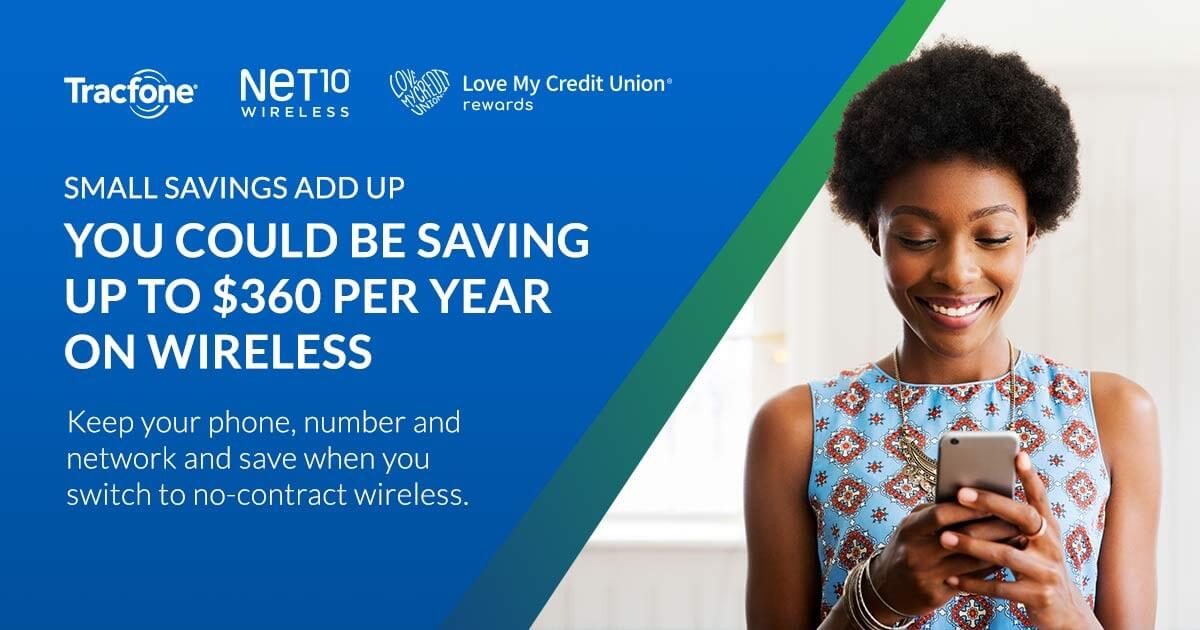
As a member of KCCU, you can save up to $360 per year on your wireless bill when you switch to no-contract wireless. Keep your phone, number, and network for less.
Our Member Benefits
No contracts or mystery fees
LoveMyCreditUnion.org offers a variety of wireless plans to meet your individual needs with no contracts, credit checks or mystery fees.
Top networks
Coverage on America's largest and most dependable networks.
Top phones
Whether you're an Android person or an iPhone fanatic, we have the latest phones for every budget.
Keep your own phone
Love the phone you have? Keep the phone, number, and network you love with our easy-to-install SIM Kits.
Visit LoveMyCreditUnion.org and start saving on your wireless today!
what you need to know about the current auto market

If you’re in the market for a new set of wheels, get ready to experience sticker shock. Prices on new and used cars have soared since the beginning of 2020. Here’s what you need to know about the current auto loan market and how to navigate it successfully.
Why are auto prices so high?
The coronavirus pandemic has touched every sector of the economy, and the auto industry is no exception. According to the U.S. Consumer Price Index, the price of used cars and trucks has jumped a full 9.4% in the last 12 months, while the price of new cars and trucks increased by 1.5%. The drive behind the increase is multifaceted and linked to several interconnected events.
When the pandemic hit American shores, demand for new and used cars increased significantly. This was largely due to the many people who were avoiding public transportation for safety reasons. And people leaving big cities because of their high rates of infection also boosted the demand for new cars.
Where are the new cars?
At the same time, supply of new and used cars dried up, due to these factors:
- The pandemic put a freeze on the production of new vehicles for nearly a full business quarter. The factory shutdowns reduced output by 3.3 million vehicles and sales dried up, along with subsequent trade-ins.
- The production freeze prompted chipmakers to focus on the electronics industry instead of creating chips for automakers. Now, the industry is still scrambling to keep up with the automakers’ demand.
- Business and leisure travel was halted for months. This led to a steep decline in travelers renting cars, which in turn led to rental agencies holding onto more of the cars in their lots instead of selling them to used car dealerships.
The rise in demand and shortage of supply naturally triggered a steep increase in the prices of both new and used vehicles.
Tips for buying a car in today’s market
If you’ve decided now is the time to purchase a vehicle, it’s best to adjust your expectations before hitting the dealership.
First, it is a seller’s market which means many dealerships have more customers than they can service. This can translate into a willingness to move only slightly on a sticker price of a car, or a refusal to negotiate a price at all.
Second, expect to pay a lot more than usual for your new set of wheels. If you’re looking to purchase a new car, the average price in the US is currently $40,000. Also, as mentioned, supply of new cars is down while demand is up, so you likely won’t have as many choices as you may have had in the past.
The used-car market has been hit even harder by the pandemic since prohibitive prices and a short supply has pushed more consumers to shop for used cars instead of new vehicles. This increase in demand, coupled with the dwindling supply, has driven the prices of used cars up to an average of $23,000, according to Edmunds.com. If you’re thinking of buying a used car, prepare to encounter a highly competitive market where bidding wars are the norm and cars are expensive.
One thing working in your favor right now is that loan rates are low. Car prices may be soaring, but credit unions continue to deliver lower rates and customer service you can really count on. The most recent data shows that auto loans at credit unions are a full two points lower, on average, than auto loans taken out through banks!
Currently you can get a new or used auto loan from KCCU with annual percentage rates as low at 1.99%. If you are in the market for a new vehicle reach out to a KCCU Member Service Representative and we can discuss rates and terms to help you keep your payment low and we can get you pre-approved so you are ready to buy when you find your new car!
How to keep your body and mind stress free

May is Mental Health Month and a huge part of managing your mental health is by managing stress. Long-term stress increases the risk of mental health problems such as anxiety and depression, substance use problems, and sleep problems.
Not only does stress affect your mental health, but it also can wreak havoc on your physical health. High blood pressure, heart disease, fatigue and stomach issues are just some of the many health problems attributed to stress.
Taking some “me” time every day can help you relax and clear your mind, so you are better able to take on what life is throwing at you.
Stress-Relief Activities
Here are some stress-relief activities to get started (as always, check with your doctor if your symptoms are serious or get worse).
Just breathe
Inhale through your nose, feeling your belly rise and then exhale by blowing the air out through your lips. An easy way to remember this is “smell the soup (inhale) cool the soup (exhale).”
Free your mind
Soothe your soul with one of the many meditation and guided imagery videos on YouTube or download the Calm app. If these options don’t work out (or maybe technology and searching is causing you more stress), try your own meditation.
Sit in your backyard, close your eyes and listen to the sounds of nature. Be conscious of your breathing. Starting from your head and neck, tense your muscles, hold for a few seconds and then release as you exhale. Do this all the way down your toes while focusing on your breathing. Slowly open your eyes and become aware of your surroundings before going about your day with a fresh outlook.
Work it
Gentle exercise gets your blood moving and is one of the best ways to relieve stress. It’s always more fun if you have a workout partner or walking buddy. Many gyms and senior community centers offer low-impact exercise, or tai chi, classes. Some of them are even offered online during the COVID-19 pandemic. Chair yoga not only helps with stress, but also helps with balance. Swimming offers a cardio workout without putting extreme pressure on your joints.
The buddy system
Keep in touch with friends. Whether you’re a texter or like to talk on the phone, share good times and bad while offering your support. You can even send a card or letter the old-fashioned way! You’ll feel good because your friend listened, and the bonus is knowing you probably made your friend smile.
The human touch
Even if you can’t get out to a massage therapist or don’t have a partner living with you who gives a good shoulder rub, there’s no reason you can’t benefit from the positive energy you feel from a massage. Rub your own hands, feet, neck and head to get your blood circulating and loosen up those tight muscles.
Stress can do a number on your body and spirit, but these relaxation techniques can help relieve tension and ease your worried mind.
Cost of Dog Ownership

Love to have a dog, but not sure what kind of expenses to expect with dog ownership? Owning and caring for a dog doesn’t come cheap. But, if you work out the numbers before moving forward, you’ll know what to expect and have an easier time budgeting for these new expenses. Here’s a rundown of what buying and owning a dog can cost.
Start-up costs
First, let’s take a look at the larger expenses that you’ll, fortunately, only need to pay once.
Consider Breed
If you decide to buy a purebred from a breeder, on average it can run you $500-$2,000. This cost may be offset by lower healthcare expenses, as purebreds from reputable breeders are generally healthier. If you get your dog from a shelter, you can pay as little as $50 or up to $250.
Basic Gear
You’ll need to spring for some doggy gear before bringing your pet home, including a bed, a collar and leash, a feeding bowl and some toys, for starters. Combined, these should run you, on average, about $50-$100.
Training
If you want to get your dog trained, you can pay as little as $25 for a single class, or up to $300 for a full course of training, plus resource materials.
Vet Costs
Next, is getting your dog spayed or neutered, which can add $20-$300 to your initial costs.
Licensing, vaccinations and a microchip will bring that total up by $110-$360.
Average total one-time costs: $255-$3,000
Ongoing costs
Once you’ve paid the costs to bring your dog home, you’ll need to consider what it costs to care for your pet each month.
Dog food
Your four-pawed friend has to eat, but how much is dog food going to run you? That depends on several variables.
First, how much are you able to spend? The cheapest dog food can cost less than a dollar a pound, but if you go gourmet, expect to pay gourmet prices, or up to $1.60/lb.
The size of your dog also plays a role in how much the food will cost. A small 3-pound pup will only need 140 calories a day, or ? cup of food, while a 100-pound beast will need a whopping 1,925 calories a day, or 4½ cups of food.
Finally, consider your dog’s special dietary requirements. A bag of food for dogs with sensitive stomachs can cost as much as $2.60/lb.
Total monthly cost: $20-80
Preventative & routine health care
All dogs will need some medication to prevent common conditions, like heartworms, fleas and ticks. Some vets may recommend vitamins or other supplements and dogs should also have their teeth brushed occasionally. Costs for these preventative measures will vary by the size of the dog and its general health.
Most vets also advise dog owners to bring their pets in for a wellness checkup at least once a year. The cost of this visit will vary by location and practitioner.
Total monthly cost: $20-80
Grooming and bathing
If you’ll be giving doggy baths at home or out in the yard and trimming its claws, you can save hundreds of dollars a year. If you’ll be hiring someone else to do the washing and occasional grooming, these costs can add another $100 to your monthly dog costs.
Total monthly cost: $0-100
Doggy day care, boarding and walking
Here’s where doggy costs can start to skyrocket.
Doggy day care averages $40 a day, while individuals who travel often can expect to add another $100 to their pet costs for every overnight stay. Hiring someone to walk your dog will bring these costs up even more, with professional dog-walking services charging as much as $30 for every half-hour walk.
Total monthly cost: $0-600
Total Cost
So, how much does it cost, in total, to own a dog? After the initial costs, expect to pay anywhere from $40 to $960 a month, depending on how much you choose to spend and how often you’ll need to leave your pet in day care.
That furry friend doesn’t come cheap, but you can’t put a price on the companionship, and boundless love, that a dog will bring you. Be sure to review the costs before bringing your pet home, and to make sure you can comfortably afford these new expenses.
Enjoy your four-legged friend!
Discounts for Older Adults

One of the many perks of advancing in years is scoring great deals on all kinds of purchases and expenses. Here are five places you may not already know about where older adults can save big money:
1. Amazon Prime
Older adults who have valid EBT cards, or are on Medicaid, are eligible for Amazon Prime at just $5.99 a month. Compared to the $12.99 regular cost, that saves you more than half at just $84 annually.
2. Auto insurance
Many auto insurance providers reward years of safe driving with discounts for policyholders who are age 55-plus. Be sure to shop around for the best deal or to ask your current provider if you qualify for a discount.
3. Dining out
Dozens of national restaurant chains offer discounts, or even freebies, for older adults. Why pay full price when dining out (or ordering takeout, in the era of COVID) when you don’t have to?
Chains with discounts
Here are just a few chains that offer discounts:
- Applebee’s: 15% off with Golden Apple Card (60-plus)
- Arby’s: 10% off (55-plus)
- Burger King: 10% off (60-plus)
- Chili’s: 10% off (55-plus)
- Denny’s: varies by location, most provide 15% off for AARP members
- Dunkin’ Donuts: 10% off or free donut with coffee purchase (55-plus)
- IHOP: 10% off (55-plus)
- KFC: Free small drink with any meal (55-plus)
- Krispy Kreme: 10% off (50-plus)
- McDonald’s: Varies by location; most provide discounted beverages (55-plus)
- Subway: 10% off (60-plus)
- Taco Bell: 5% off; free beverages (65-plus)
- Village Inn: 10% off (55-plus)
- Waffle House: 10% off every Monday (60-plus)
- Wendy’s: 10% off (55-plus)
- White Castle: 10% off (62-plus)
4. Cellphone plans
From basic phones to the latest in smartphone technology, if you’ve lived through bell-bottoms and Beatlemania, you can get your cell phone plan for less!
Verizon offers its 55+ Senior Phone Plan https://www.verizon.com/plans/55plus/ with unlimited talk, text and data for up to two lines, at just $60 for one line and $80 for two lines. T-Mobile offers a similar Unlimited 55+ Discount Plan https://www.t-mobile.com/cell-phone-plans/unlimited-55-senior-discount-plans starting at just $27.50 per line per month, and AT&T offers its famous bare-bones Senior Nation https://www.att.com/support/article/wireless/KM1009134/ plan at $29.99 a month for adults aged 65-plus.
5. Discounts at apparel stores
Whether you’re spending the afternoon at the mall or browsing the new season’s selections from the comfort of your couch, don’t forget the discount!
- Banana Republic Discounts: 10% off (50-plus)
- Dressbarn: 10% off Tues. and/or Wed. (varies by location – 55-plus)
- Kohl’s: 15% off on Wednesdays (60-plus)
6. Grocery Stores
- Hardings Friendly Marketplace: Wednesdays save 5% off your grocery purchase (60-plus)
- Family Fare: Wednesdays save 10% on regularly priced item. (55-plus)
Reaching the other side of 50 can come with fringe benefits like grandchildren, a relaxed pace of life, and of course, lots of great discounts. Don’t forget to cash in on your special savings the next time you shop.

Celebrate Earth Day
Plant a garden
Earth Day is April 22, 2021, and it’s also the perfect time to plant that garden you’ve always wanted. Garden centers and home improvement stores are still open around the country, with many offering curbside pickup. Add a burst of color to your property with a row of flowers, try your hand at planting a vegetable garden or plant a tree!
Learn about recycling
Celebrate Earth Day by learning about local recycling rules and refreshing your knowledge about what happens to the things we recycle. If you have children at home share this information with them so they can get in the habit and help you with recycle at home.
explore the world - electronically
Use the My Disney Experience app to explore the world of nature from home. Check out the “Wilderness Explorers at Home” feature on the app for a virtual tour of nature’s wonders.
Get to know your plants
Learn about the plants in your neighborhood. Bring your daily walk around the neighborhood up a notch on Earth Day by looking out for plants in your area. You can use the Native Plant Finder website to find out which plants are native to your ZIP code. See how many of these plants you can find on your walk!
Watch a documentary
Watch a documentary about our planet. Celebrate Earth Day by watching a fascinating documentary about the Earth. Netflix is running “Our Planet,” an incredible docuseries hosted by David Attenborough featuring beautiful footage from around the world. You can also check out Disney+ for Disneynature’s “Elephant” and “Dolphin Reef,” which conveniently offer downloadable activity packets for kids.
Join Earthfest
The American Museum of Natural History (AMNH) in New York City is airing an all-day “Earthfest” on Earth Day. The live-streamed event will feature a full day of activities and educational opportunities to explore.
How to Downsize

Quiet. Calm. Clean.
And empty.
These are just a few of the adjectives that may come to mind when you return home after your youngest child leaves the nest. It’s the beginning of a new stage in life and your home may feel completely different.
No longer are you constantly kicking aside stray sneakers and picking up a trail of school papers. No longer are you sharing your living space with soccer gear and your freezer with boxes of frozen pizza and ice pops. You may even get the TV remote to yourself!
Now that the house has emptied out, it’s a great time to sift through the “stuff” that has piled up over the years. Maybe you’ve even decided to move to a new and smaller home. Whether you’re decluttering because your home has grown emptier or you need to get rid of half your belongings before you relocate, downsizing can be a daunting task.
Downsizing tips
Here are some tips to help you downsize as an empty nester.
Allow yourself to grieve, but stay positive
It isn’t easy to let go of precious mementos, give away the adorable baby outfits your oldest wore as an infant or say goodbye to the home that watched your family grow. Make these goodbyes a little easier by acknowledging your grief but putting a positive spin on your new stage. Yes, you are saying goodbye to playdates and PTA meetings, but you are entering a phase in life that will open up new vistas and opportunities you’ve never had before.
Clear out your closets
If your closets have not been purged since AOL CDs cluttered mailboxes, you might be looking at a mountain of outdated clothing to sort through and organize. Here’s how to make this job easy.
Set up four boxes near your closet. Mark one “giveaways,” one “keepers,” one “sell” and the last “dump.” As you sort through grunge tops from the ‘90s and neon jeans from the ‘80s, consider each item: Can you donate this, keep it, sell it or is it destined for the dump? Place each item in its designated box until you’ve gone through the entire pile.
When you’ve finished sorting through all your clothing, return the items in the “keepers” box to the closet, toss the junk, bring the giveaways to a clothing donation drop-off spot and sell what’s left at second hand stores or online on sites like Poshmark.
Sell your spare furniture
Whether you’re relocating or staying put for now, your furniture needs will change when the kids have left home. Create space and earn some extra pocket money by hosting a garage sale for your unused furniture pieces. You can also sell spare drawer chests, desks and more online.
Sift through your files
In the world before everything was digitized, important papers in a household could pile up like snow in a blizzard. The good news is you likely don’t need most of the papers you’ve been saving all these years. It’s time to clear out the pile!
Each of your files will likely fall into one of three categories.
The important paperwork includes personally identifying info and sensitive documents, such as birth certificates and Social Security cards for each child. Of course, you’ll need to save the original copies of these documents in a safe place.
On the other end of the spectrum are saved files that serve no purpose now, such as electricity bills from 1995 and pay stubs from your first post-college job. These can go straight into the shredder.
Finally, you’ll have documents that fall somewhere in between these two categories, such as medical records, tax returns and your children’s report cards. You can choose to keep some of these, or, if you’re short on space, scan each document and upload it to cloud storage.
Rethink your bedrooms
With all the kids out of the house, you can rethink the way you use your bedrooms. Have you always dreamed of a designated sewing room? How about using the space to indulge in your model train hobby? You can finally have that hobby room you’ve always wanted when the kids were growing up!
If you need to save some sleeping room for the kids when they come home to visit, you can keep a daybed in any converted bedroom for that purpose.
It’s a new stage in life, and it’s time to sift through the piles of stuff that have accumulated over the years. Follow our tips for downsizing made easy!
Don’t Fall for Money Mule Scams

What is a money mule?
A money mule, also sometimes referred to as a "smurfer," is a person who transfers money acquired illegally (stolen or fraud) in person, through a courier service, or electronically, on behalf of others. Typically, the mule is paid for services with a small part of the money transferred.
How money mule scams work
Money mule scams happen several ways. Someone might offer you a job, or say you’ve won a sweepstakes, or even start an online relationship with you. Whatever the story, next they want to send you money – and then ask you to send it on to someone else. They often say to wire the money or use gift cards.
But that money is stolen. And there never was a job, a prize, or a relationship – only a scam. That scammer was trying to get you to be a money mule.
The consequences
Transferring money / valuables on behalf of others only benefits criminals and may lead to serious consequences for you. If you deposit a scammer’s check, it might clear, then when the bank discovers it’s a fake check, you’ll have to repay the bank. Also, if you help a scammer move stolen money – even if you didn’t know it was stolen – you could find yourself in legal trouble.
Avoid money mule scams
- Don’t engage in financial transactions with strangers
- Don’t take a job that promises easy money and involves sending or receiving money or packages
- Check any work-from-home opportunity or money transferring offer with a trusted family member or friend. You can also contact your Better Business Bureau chapter or access the state’s corporation directory to help verify if the business is legitimate.
- Report money mule activity/ scams as soon as possible
If you suspect a money mule scam
If you think you might be involved in a money mule or money transfer scam, stop transferring money. Notify your financial institution, the wire transfer service, or any gift card companies involved. Then, report it to the FTC at ftc.gov/complaint.
Protect Your House When on Vacation

Are you planning a Spring Break road trip or other future getaway? When preparing to leave for a vacation, it’s easy to overlook basic home safety precautions. There are a number of hazards that could affect your home while you’re away, including lightning, theft, and flooding.
Home Safety Tips
In order to keep your property safe while you’re on vacation, consider the following:
- Unplug small appliances and electronic devices.
- Stop the newspaper and mail. To do this online, visit the U.S. Postal Service’s website.
- Lock all windows and doors.
- Arrange to have your lawn mowed or snow shoveled while you’re away.
- Have a neighbor keep an eye on your home throughout your trip.
- Remove any house keys you keep outside your home, even if you think they’re in a safe place.
- Set timers on inside lights. Install a motion-activated sensor on outdoor floodlights.
- Consider turning off your home’s water.
- Avoid posting photos of your trip on social media until after you return home.
- Program your thermostat or turn the system off completely. This ensures that you aren’t paying to cool or heat your home while you’re away.
Taking the proper precautions before you go on vacation can make all the difference when it comes to preventing damage to your home. However, accidents can still occur, and it’s important to ensure you have adequate insurance coverage. Contact KCCU Insurance Agency to discuss what kind of home owners insurance is appropriate for you.
Try-Before-You-Buy Car Payment

You already know that car loans cost less when you can pay a portion of a vehicle’s purchase price upfront in cash. Makes sense—you borrow less when you have a down payment.
But coming up with that down payment can be a challenge. And then, once you have a car loan, that monthly payment could be a tight fit in your budget if you haven’t planned for it.
How to Get Started
Below is a tactic that will help you save for your down payment and it gives you a chance to “try on” your car payment on a trial basis, no strings attached.
Save what you expect to pay
Just save what you expect your car payment will be for several months in your down payment fund.
Build Your Down Payment
Find a Comfortable Payment
You get to audition your car payment, with the luxury of stopping that “payment” if it really is too much for your budget. If you find the payment is too high, then you can adjust the payment to something that fits your budget more comfortably.
There’s no down side. You can stop payments at any time, without penalty, because you’re making the payments to yourself.
Reality Check
This tryout can serve as a reality check for your plans to buy a car. You might have the pleasant experience of realizing that you can handle a car loan without too much pressure—or you might learn that you need to wait a bit longer, save a bit more, or plan to buy a less expensive car.
And don’t forget a Kellogg Community Credit Union member service representative can help you determine how much car you can afford and can even get you preapproved you for your car loan. Call 269-968-9251 or stop in today to talk about your plans.
Give Your Finances a Refresh
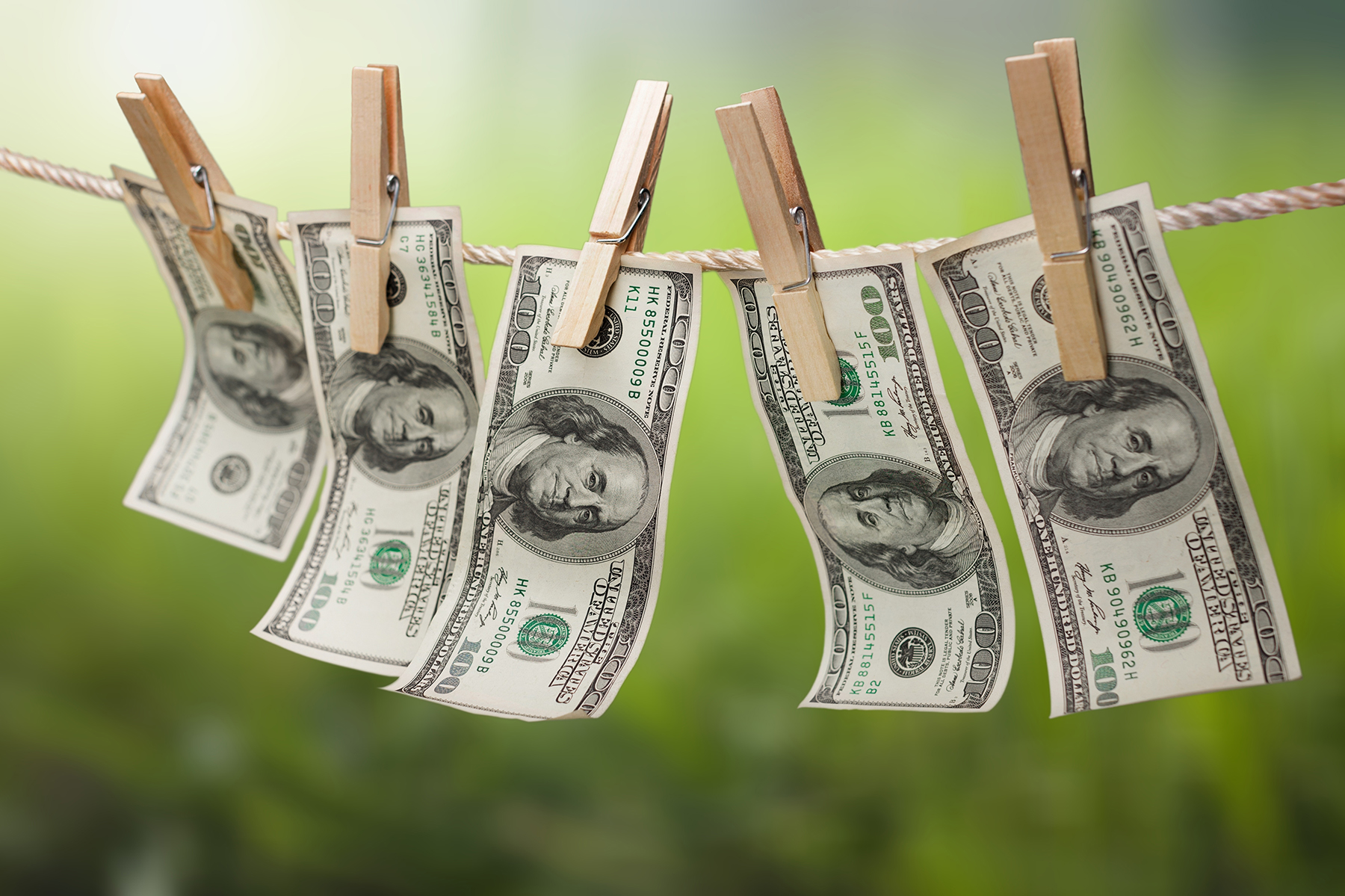
Spring is a great time of year to clear your house of accumulated junk and make it sparkle. Why not do the same for your finances? Junk can accumulate there, too. In fact, some of your money matters may need to be freshened up this season. It is especially true this year, when many Americans are still recovering from the financial fallout of COVID-19, or maybe wondering how to use the latest round of stimulus checks. Whatever your current situation, a thorough spring-cleaning for your finances is a responsible move this time of year.
Ways to spring clean your finances:
Sweep out your budget
It’s time to shake out the dust in your budget! Review your monthly spending and find ways to cut back. Have you been overdoing the takeout food this year? Buying up more shoes than you can possibly wear? Pare down your budget until it’s looking neat and trim.
Freshen up your W-4
Tax season is prime time for revisiting the withholdings on your W-4. If you received an especially large refund this year, you may want to adjust the amount you withhold. The IRS’s tax withholding estimator can be a useful tool to help you determine the perfect number.
Deep clean your accounts
If you’ve switched from one bank or credit union to another, you may have dormant accounts that are still open and may be charging you fees. Or, perhaps they’re holding onto money you’ve forgotten you have! And don’t forget about the 401(k) you may have from an old job. Now may be the time to transfer those funds to your current 401(k).
This spring do a Marie Kondo on your finances and get rid of any accounts you don’t need any longer. A minimalist approach to your finances will make it easier to manage your accounts. It will also give your savings a greater chance at growth, and help you avoid fees for unused accounts.
Toss out your debt
Get ready to kick that debt for good! If you’ve been stuck on the debt cycle for too long, make this spring the season you create a plan to break free.
First, trim your budget or consider a side hustle for earning some pocket money, designating these extra funds for your debts. Next, choose a popular debt-busting approach, such as the avalanche method, in which you pay off debts in order from highest interest rate to lowest, or the snowball method, where you start with the smallest debt and then move up your list as each is paid off. Once you’ve chosen your approach, maximize payments to the first debt on your list, making sure not to neglect the minimum monthly payments on your other debts. Before you know it, that debt will be gone!
Dust off your saving habits
Have you been remembering to pay yourself first? Get into the habit of maximizing your savings this spring with a tangible financial goal. You can also make savings an itemized line in your budget. This way, you’ll have funds set aside for this purpose, instead of savings only happening if there’s money left over at the end of the month. Finally, automate your savings by setting up a monthly transfer from your checking account to your savings account. Never forget to pay yourself first again!
Make your investments sparkle
Whether you’re an experienced investor or you’re just getting your feet wet, it’s time for a spring cleaning of your investments! Check if your allocation strategy is still serving you well, whether you need to adjust your diversification and if your retirement accounts are on track for your estimated retirement timeline.
Make your stimulus count
Don’t let your stimulus payment and tax refund blow through your checking account. Instead create a spending plan for the funds that includes paying down debt, allocating some of the money for long-term and short-term savings and possibly investing another portion of the payment. Don’t feel guilty about using the rest of your stimulus check to splurge on a purchase or experience you’ve been wanting for a while now. The money is being distributed with the hopes that it will help stimulate the economy, and the best way to do that is to spend — just don’t go overboard.
Easy Way to Save – Pack a Lunch

Saving money can be difficult for some people. They feel like there just isn’t enough to spare at the end of the month to put into a savings account. But by making small changes to your spending habits, you’ll see that saving money isn’t really that difficult.
For instance, how often to you buy lunch instead of making your own? Once a week? Every day? If we add up those daily purchases, you may be surprised at the cost per year.
Cost to buy your lunch every day
- There are about 250 work days per year.
- A lunch at a café or restaurant runs about $6.00 to $15.00.
- If you eat lunch out every day, you’re spending between $1,500 to $3,750 per year.
Cost to brown-bag your lunch
Now, let's figure out how much it costs to make your own lunch.
- If you buy lunch meat, bread, and a bag of chips, it will cost you about $10 and last you the whole week.
- $10 ÷ 5 working days = $2.00 per lunch
- $2.00 x 250 working days = $500 per year
- If you packed your lunch every day, you’d save between $1,000 to $3,250 every year!
Put your Savings to Work
Now, let’s say you put the money didn't spend into a savings account every month.
- $4.00 to $13.00 (money saved each day) x 20 working days = $80 to $260 per month.
- If you put those dollars into an account that earns even 1% interest, compounded monthly, you’d have $1,046 to $3,399 saved in 12 months!
What better way to start brown-bagging and saving than National Pack Your Lunch Day! National Pack Your Lunch Day is celebrated on March 10 and encourages everyone across the country to take their lunch to work, school or wherever they’re spending the day. It’s an opportunity to revitalize lunchtime with fresh and healthful meal choices, all while saving a little extra cash.
Baby on the Way? Don’t Panic – Prepare!

Congratulations! You’ve just gotten the positive pregnancy test results and you’re breathless with excitement — and nerves. Or maybe you’re a few months along, and the mild anxiety is growing right along with the baby bump. Regardless, a baby means big changes, and some of those changes bring many new expenses. How will you pay for it all?
Whether you’re only thinking about having a baby, or your due date is fast approaching, there’s no need to stress about finances. By taking the necessary measures today, you can learn to cover these new expenses without falling into debt.
Steps you can take to prepare financially:
Pay down debt
There’s more than just a nursery to set up before your baby’s arrival. It’s best to get your finances in order to make it easier to manage all new expenses and prepare for your child’s future. If this involves getting rid of a mountain of debt, you can choose between these two debt-kicking plans:
The snowball method involves maximizing your payments toward your smallest debt balance first. Once it’s paid off, move on to the next-smallest debt, “snowballing” the payment from your previous debt into this one until it’s paid off, and repeating until you’re completely debt-free.
The avalanche method involves maximizing payments toward the debt with the highest interest rate and then moving on to the one with the second-highest interest rate until all debts are paid off.
Adjust your monthly budget
Babies don’t come cheap. When your little one arrives, you’ll need to spring for baby gear and furniture, a new wardrobe, diapers and possibly childcare as well. According to the USDA’s most recent report on the cost of raising a child, the average middle-income family will spend approximately $12,350-$13,900 on child-related expenses before their baby’s first birthday.
Most of these expenses will be ongoing, and it’s best to make room in your budget for these new items before the baby is born. Spend some time reviewing your monthly budget to look for ways to cut back on spending and give you that wiggle room to cover baby-related expenses.
Set up a baby account
All those baby expenses can be overwhelming, but if you break them down into bite-sized pieces, they’ll be easier to manage. You can do this by putting away some money for baby costs as soon as you plan on having a baby or find out you’re expecting. Consider setting up a new savings account at Kellogg Community Credit Union for all baby expenses to keep this money separate from other savings. You may also want to automate these savings by setting up a monthly transfer from your payroll or checking account to your “baby account.”
Estimate prenatal care and delivery costs
While exact amounts vary by state and by insurance provider, prenatal care and delivery can cost thousands of dollars. This includes out-of-pocket expenses, co-pays and insurance deductibles. Be sure to prepare for these expenses by saving up for them or by allocating a large windfall, such as a tax refund or generous work bonus, to be used for paying for prenatal care and delivery.
Start saving for college
Hard as it may be to believe, your little one will one day be all grown up and ready to go to college. With college tuition now averaging $35,087 at private colleges, $9,687 for state residents at public colleges and $21,184 for out-of-state students at state schools, according to data reported by U.S. News and World Report, this can mean paying a small fortune to give your child an education. In addition to spreading the costs over nearly two decades, starting to save for your child’s college education now will give those savings the best chance at growth.
Consider opening a 529 plan before your child is born where your college savings can grow tax-free. If you have questions on 529s you can reach out to KCCU Investment Services for assistance.
Write a will
No one wants to think about their own death when preparing for a birth, but writing a will — and purchasing life insurance if you haven’t already done so — can be the best gift for your child in case the unthinkable happens.
Beware of Banking Scams

There’s been a recent uptick in banking scams. In these scams, criminals pose as representatives of the victim’s financial institution. They might “spoof” KCCU’s number, so the caller ID may even look like it’s really us on the phone. The scammers may then state there’s a problem with the victim’s checking account that needs immediate attention. Sometimes, they’ll claim they can help lower interest rates on credit cards.
All they need to “help” the victim, they say, is the member’s confidential information, including account numbers and passwords. The scammers then use this information to empty the victim’s accounts and disappear.
Avoid Being a Victim
Here’s what you need to know about spoofing calls and banking scams.
Be suspicious
We will never ask you to share confidential information through insecure channels. If you’re on guard, you’ll spot those fakers easily. Is a representative claiming there are problems with your account when everything seems to be in order? Are they asking for passwords over the phone? If things don’t add up, hang up.
Don’t Pick Up
Don't answer calls from unknown numbers. If you answer the phone and the caller - or a recording - asks you to hit a button to stop getting the calls, just hang up. Scammers often use this ploy to identify potential targets.
Don’t Respond to Questions
Do not respond to questions, especially those that can be answered with "Yes" or "No."
Use a Voicemail Password
If you have a voice mail account with your phone service, be sure to set a password for it. Some voicemail services are preset to allow access if you call in from your own phone number. A hacker could spoof your home phone number and gain access to your voice mail if you do not set a password.
Block Calls
Talk to your phone carrier about call blocking tools and check into apps that you can download to your mobile device. The FCC allows phone companies to block robocalls by default based on reasonable analytics. More information about robocall blocking is available at www.fcc.gov/robocalls
Safeguard account details
Never share account information without being certain you’re talking to the real entity.
Use good password hygiene
Create and use complex passwords and change them frequently. Use different passwords for each of your accounts.
Choose extra protection
Opt for two-factor identification when logging into your accounts.
Monitor your accounts
Check your accounts on a regular basis and look specifically for any suspicious or unrecognized activity.
Use eAlerts
Choose to receive an email or a text message when transactions on your account exceed your typical level of spending. Learn more about eAlerts or watch our eAlerts Video to see how easy it is to set them up.
Reach out to us
It can sometimes be difficult to determine if the people you’re talking to are the real thing. If you think you’re dealing with KCCU, but things seem fishy, hang up or log out and call KCCU yourself. You can always reach us at 269.968.9251 / 800.854.5421 Be sure to call this number and never use another number suggested by a suspicious-acting “member representative.”
In case of fraud, take action
If you suspect you’ve been taken for a ride, let us know as soon as possible. The sooner you catch and report a scam, the better. It’s also a good idea to let the FTC know about the scam. Contact them at FTC.gov.
Random Acts of Kindness

Sometimes it’s the smallest act that makes the biggest impact – something as simple as a smile, has the power to turn a day around. Random Acts of Kindness Day is celebrated annually on February 17. Random Acts of Kindness Day encourages people all over the country to be altruistic to friends, coworkers, and even strangers. We should all use this day to bring a smile to someone’s face without expecting anything in return.
Here are some ideas to help you show kindness on Random Acts of Kindness Day, or any day of the year to bring cheer to others! A little kindness goes a long way.
What you can do
Anonymous act of goodwill
You can stick a quarter into a parking meter that is nearing expiration, shovel a neighbors sidewalk or driveway, leave treats on your neighbors or friends door step, or leave a note on someone’s windshield at the grocery store or where you work telling them to have a nice day.
Thank the teacher
Call your child’s teacher to thank them for all they do for your son or daughter.
Volunteer
Take a shift at the local soup kitchen for the day, animal shelter, senior center. There are even volunteer positions you can do virtually, such as reading to children via zoom! Search for volunteer opportunities near you with volunteermatch.org
Thank a community worker
Have you told your mail carrier how much you appreciate their hard work? Show your appreciation with a warm drink, a homemade pastry or just a sincere thank you.
Call a relative
Pick up the phone and let someone know how much they mean to you.
Donate Money
How much did you spend on your dinner today? Donate a matching amount to your favorite charity.
Donate Items
Donate canned goods to your local food bank or gently used items to Salvation Army, Goodwill, or other charitable organizations.
Donate Blood
By providing your life-saving blood can help trauma victims, surgery patients, premature babies, and people with anemia right in your own community.
Do something special for your family
Charity begins at home. Have a family game night, bake a special dessert, or spend time just listening to a loved one without judgement.
Pay it Forward
Pick up the tab for the person behind you in the coffee or fast-food drive thru. Let someone go ahead of you in line at the grocery store.
Call your parents
Let your parents know you appreciate them.
Write to a soldier
Write a letter to a deployed member of the military through Operation Gratitude.
Compliment a stranger.
It's always nice to give and receive kind words.
Smile at everyone you meet
Never underestimate the power a smile can have to turn someone's day around!
Elder Financial Exploitation
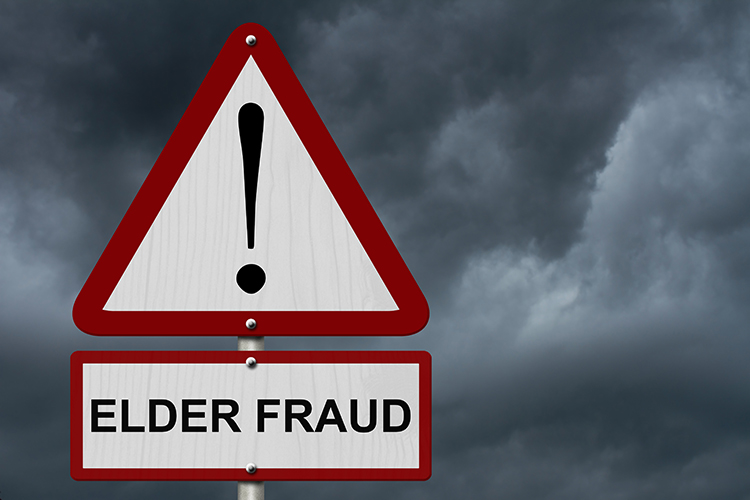
To con artists, down-on-their-luck relatives, or opportunistic acquaintances, are gold mines. Individuals over the age of 50 control 70% of the country’s wealth, and seniors between the ages of 65 and 74, with an average net worth of $1.06 million, have more assets than any other age group. “That’s where the money is,” says Jay Haapala, AARP associate state director of community outreach in Minnesota. “If college kids had a bunch of disposable income lying around, criminals would be trying to figure out how to scam college kids.” Dementia, disability, and decline can make it even easier for criminals to take advantage of the elderly. All told, it is a problem that costs American seniors billions of dollars every year.
Common forms of exploitation
There are myriad scams, unethical businesses, and unscrupulous individuals preying on seniors all the time. While the details vary, there are a few familiar scenarios.
Breach of trust
The vast majority of elder financial abuse—as much as 90%, according to the National Adult Protective Services Association—is committed by caregivers or close family members. A son is added to a checking account to help manage Mom’s bills and then starts using the account to pay off gambling debts. Or Grandpa gives valuables to the housekeeper and eventually—at her suggestion—names her in the will.
Phone scams
Someone calls, supposedly from the IRS, saying that an individual has a tax bill that is going to be charged with interest and fees unless paid immediately. Or someone calls with news that there is a problem with a credit card and they need a Social Security number and birth date to access account information to clear things up.
Phishing scams
How to stay safe
So, how do you protect yourself and your loved ones from elder financial abuse? Sign up on the Do Not Call Registry, this prevents businesses from contacting you. When online don’t click on links in your email if you don’t know the person or if you are not expecting the information.
Haapala also reminds seniors to conduct their personal business within the financial services system. If you receive a call or email from someone saying there is a problem with your debit or credit card, or your account, you should hang up and call the credit union back directly on their main phone number so you can verify that you are speaking to a credit union representative and not a criminal. Also, it is important to monitor your accounts closely so you can watch for any unwanted activity.
If you ever have any questions or suspect potential fraud contact Kellogg Community Credit Union immediately so we can help.
Credit Unions Offer the Best Auto Loans

The average cost of a new vehicle today is around $37,000.
The purchase of a car will likely be the second largest expenditure you have, second only to the purchase of a home. Whether you desire the shiny, brand new car, or if you are content with finding a reliable used one, we want to help you to get the most for your money.
why get an auto loan from KCCU
Here are five reasons it makes more sense to get your loan through KCCU.
Better chance of approval
With KCCU, you have a better chance of getting your loan approved. Even though the loan application process is the same and the underwriting process is similar, the credit union may make some adjustments that a bank would not. We listen to our members’ needs and unique situations.
Lower rates
A five-year term is the most common loan term for a new or used car, KCCU offers extended terms to help keep your payment low! Plus, rates at a credit union are typically much lower than the average rate at a bank. The savings in interest alone is a major reason to consider financing with KCCU. Just think of what you can do with the money you save.
Personalized service
Credit unions are non-profit organizations and work to provide members with high-quality customer service. Since we are locally owned and operated all decisions are made right here in your neighborhood at KCCU. You can openly discuss your loan, talk about flexible repayment options, and review your financial situation with a lending specialist. This can alleviate some of the pressure of applying and securing financing for your vehicle and you can be more confident that the credit union is working with your best interest in mind.
Extra resources & guidance
We offer educational resources and guidance. We can provide information such as financing options and how to make the best decisions when assessing the value of your car purchase. If you’re a first-time car buyer and apprehensive about the loan process, you can turn to KCCU for unbiased answers.
Non-sales approach
We offer a non-sales approach. Unlike commercial banks, which often give their lenders bonuses or some type of compensation for the loans they get approved, credit unions, as not-for-profit financial institutions, work for their members and do not try to sell you something you don’t need.
We are also happy to get you pre-qualified before you shop so you know exactly what your monthly payments will be. At KCCU, we are always happy to help!
Knowing When to Shop is Key

Stores and manufacturers like to offer deep discounts on certain popular products at specific times of the year. If you love a good sale (and who doesn’t?), time your purchases so you can take full advantage of these traditions. The following list shows the best month to find the best prices on popular items:
January
Sales revolve around New Year’s resolutions about getting in shape, or people looking for items to keep their home’s interior cozy during the cold winter.
- Fitness products
- TVs & electronics
- Bedding and linens
February
Comfy interiors continue to be high priorities on everyone’s To-Do list. People in the Northern states also need to deal with ice and snow.
- Mattresses
- Humidifiers
- Interior paint
- Snow blowers
- Winter apparel
- Sporting equipment
March
Many are planning kitchen renovations. It’s also time to introduce new models for digital cameras. Summer recreation vehicles are also on sale this time of year as people are planning their summer.
- Countertops
- Space heaters
- Digital cameras
- Boats and RVs
- Bicycles
April
Spring cleaning is on everyone’s mind, for the interiors and exteriors of their homes.
- Vacuum cleaners
- Lawn mowers
- Tractors
- Air purifiers
May
Time to begin sprucing up the exterior of homes and after a hard-day’s work, enjoy a good barbeque!
- Roofing
- Siding
- Decking materials
- Gas grills
- Patio furniture
June
Summer begins, and many people can now really work on the exterior of their homes.
- Pressure washers
- Cordless drills
- String trimmers
- Smartwatches
July
Hot and humid, so you’ll find appliances to keep yourself dry, cool, and clean.
- Dehumidifiers
- Laundry machines
- Dish washers
- Refrigerators
August
It’s Back-to-School season, so you’ll find the best prices for pricier school supplies.
- Laptops
- Headphones
- Printers
September
You’ll find items to help to clean up your house, inside and out.
- Leaf blowers
- Washers
- Dryers
October
Time to check or replace smoke detectors and get ready for winter.
- Smoke detectors
- Snow blowers
- Interior paint
November
A favorite month for Shopaholics because the biggest discounts are offered, starting with Veteran’s Day and ending with Black Friday and Cyber Monday.
- Blenders
- Coffee makers
- Fitness trackers
- TVs
- Refrigerators
December
The biggest gift-giving season heralds multiple sales on nearly everything through the entire month. It’s also when car dealerships try to meet their end-of-year sales quotas.
- Headphones
- Wireless speakers
- Fitness trackers
- Cordless drills
- Smartwatches
- Automobiles
Reasons we overspend & how to avoid them

We’ve all been there. Maybe it’s that I-gotta-have-it urge that overtakes us when we see a pair of designer jeans. Maybe it’s that shrug as we reach for the $6 cup of overrated coffee that says, “I deserve this.” Or maybe it’s that helpless feeling as the end of the month draws near and we realize we’ve outspent our budget — again.
5 Common Reasons
What makes us overspend? Let’s take a look at five common reasons and how we can overcome them.
1. To keep up with the Joneses
Humans are naturally social creatures who want to blend in with their surroundings. When people who seem to be in the same financial bracket as we are can seemingly afford another pair of designer shoes for each outfit, we should be able to afford them, too, right?
The obvious flaw in this line of thinking is that nobody knows what’s really going on at the Joneses’ house. Maybe Mrs. Jones’ expensive taste in shoes has landed the family deeply in debt and they are in danger of losing their home. Maybe her Great Aunt Bertha passed and left her a six-digit inheritance. Maybe all her Louboutins are cheap knockoffs she bought online for $23 each.
Break the cycle: Learn to keep your eyes on your own wallet and to ignore how your friends or peers choose to spend their money. Develop a self-image that is independent of material possessions. Adapt this meme as your tagline when you feel that urge to overspend as a means to fit in: Let the Joneses keep up with me!
2. We don’t have a budget
A recent survey shows that 65% of Americans don’t know how they spent their money last month.
When all of our spending is just a guessing game, it can be challenging not to overspend. We can easily assure ourselves that we can afford another dinner out, a new top and a new pair of boots — until the truth hits and we realize we’ve overspent again.
Break the cycle: Create a monthly budget covering all your needs and some of your wants. If you’d rather not track every dollar, you can give yourself a general budget for all non-fixed expenses and then spend it as you please.
3. To get a high
Retail therapy is a real thing. Research shows that shopping and spending money releases feel-good dopamine in the brain, just like recreational drugs. David Sulzer, professor of neurobiology at Columbia, explains that the neurotransmitter surges when people anticipate a reward — like a shopper anticipating a new purchase. And when we encounter an unforeseen benefit, like a discount, the dopamine really spikes!
“This chemical response is commonly called ‘shopper’s high,’” Sulzer says, likening it to the rush that can come with drinking or gambling.
This explains the addictive quality of shopping that can be hard to fight. When life gets stressful, or we just want to feel good, we hit the shops or start adding items to our virtual carts.
Break the cycle: There’s nothing wrong with spending money to feel good, so long as you don’t go overboard. It’s best to put some “just for fun” money into your budget so you can make that feel-good purchase when you need to without letting it put you into debt.
4. Misuse of credit
Credit cards offer incredible convenience and an easy way to track spending. But they also offer a gateway into deep debt. Research shows that consumers spend up to 18% more when they pay with plastic over cash.
Break the cycle: When shopping in places where you tend to overspend, use cash and you’ll be forced to stick to your budget. You can also use a debit card with a careful budget so you know how much you want to spend.
5. Lack of self-discipline
Sometimes, there’s no deep reason or poor money management behind our spending. Sometimes, we just can’t tell ourselves — or our children — “no.”
Scott Butler, a retirement income planner at the wealth management firm Klauenberg Retirement Solutions in Laurel, MD, explains that it takes tremendous willpower to say no to something we want now.
“One of the big reasons people overspend is that they don’t think ahead,” Butler says.
Too often, we allow our immediate needs to take precedence over more important needs that won’t be relevant for years — such as a retirement fund or our children’s college education. We simply lack the discipline to not exchange immediate gratification for long-term benefit.
Break the cycle: Define your long-term financial goals. Create a plan for reaching these goals with small and measurable steps. While working through your plan, assign an amount to save each month. Before giving in to an impulse purchase or an indulgence you can’t really afford, remind yourself of your long-term goals and how much longer your timeframe will need to be if you spend this money now.
Recover from a Financial Disaster

As we sail into 2021, many Americans are struggling with the aftershocks of financial disaster. Whether it’s due to a layoff, a smaller workload, medical expenses or a change in family circumstances, the financial fallout of COVID-19 has been devastating for people in every sector of the economy.
Recovering from a financial disaster, due to a pandemic or any other reason, is never easy; however, with hard work and the ability to look forward, it can be done. Here’s how.
Step 1: Assess the damage
Take a step back to evaluate exactly how much financial recovery you need to do. Are you thousands of dollars in debt? Do you need to find a new job? Do you have new ongoing costs you will have to cover each month? Are there any other long-term financial implications of the recent disaster, including alimony and IRS liens?
It’s also a good idea to review your overall financial picture at this point, including your current income and ongoing expenses. Crunching the numbers and putting it all on paper will make it easier to take concrete steps toward recovery.
Step 2: Accept your new reality and stay calm
Shock and denial are valid stages of grief for any major loss or disaster, but in order for recovery to be possible, it’s important to reach a place of acceptance about your new reality. You can vent to a close friend or your life partner, express your feelings in an online journal or a paper-and-pen version, de-stress with your favorite low-cost hobby and then let go. Revisiting the past and constantly harping on what could have been will only drain you of the energy you need to move on.
Tim Essman, a financial professional with West Coast Wealth Strategies and Insurance Solutions in San Diego, also stresses the importance of remaining calm during an economic downturn. Don’t make any rash moves out of panic and fear, he cautions, as the best move in a financial crisis is to keep things stable until you can evaluate the situation and make rational decisions.
Step 3: Outline your goals
Before you get started on the actual recovery steps, define your primary objectives. Are you looking to rebuild a depleted emergency fund? Find gainful employment that will help bring your income back to its previous level? Pay down your medical bills? Outlining your goals will make it easier to move ahead.
As you work through this step, remember to choose goals that are SMART:
Specific — The goal should be clearly defined.
Measureable — It’s best if there’s a way for you to measure the goal, such as dollar amounts, credit score numbers, etc.
Attainable — Set a goal that challenges you, but is possible to achieve.
Realistic — Your goal should not be completely out of reach.
Timely — A goal without a deadline is just a wish.
Step 4: Create a Plan
You’re now ready to create a full-blown plan to help you reach your goal. Your plan should consist of consecutive steps that lead to a life of complete financial wellness.
Here are some steps you may want to include in your plan:
-
Trim your spending until you can consistently spend less than you earn.
- Build a small emergency fund to help get you through an unexpected expense.
- Seek new employment or new income streams, as necessary. Consider moonlighting, blogging or selling stuff online for extra cash.
- Start paying down debts. You may want to consolidate your debts with an unsecured loan to make this step easier.
- Save more aggressively, with an eye toward your retirement and another toward a large emergency fund with up to six months’ of living expenses.
Step 5: Make it Happen
It’s time to put your plan into action. If you were careful to set goals that are SMART, you should be able to take the first steps in your plan immediately. Be sure to review your plan occasionally and adjust it if any changes are needed. Times are hard, but with a forward-thinking attitude and the willingness to work hard, we can all recover.
Watch Out for COVID-19 Scams

The new COVID-19 vaccine is bringing hope for the end of the pandemic and normalcy for our everyday lives in 2021. Unfortunately, it also brings new coronavirus related schemes for fraudsters to try to steal your personal, medical, or financial information.
Scammers are using telemarketing calls, text messages, social media platforms, and door-to-door visits to perpetrate COVID-19-related scams.
During the pandemic we’ve seen scams offering COVID-19 tests, Health & Human Services (HHS) grants, and Medicare prescription cards in exchange for personal details, including Medicare information. We are now seeing ploys promising enhanced ranking to receive the vaccine. All of these services are unapproved and illegitimate.
These scammers use the coronavirus pandemic to benefit themselves, and beneficiaries face potential harm. The personal information collected can be used to fraudulently bill federal health care programs and commit medical identity theft.
Protect Yourself From COVID Scams
Protect your personal information by being aware of the scams and how to avoid falling for them.
Vaccine Scams
Be vigilant and protect yourself from potential fraud concerning COVID-19 vaccines. You will not be asked for money to enhance your ranking for vaccine eligibility. Government and State officials will not call you to obtain personal information in order to receive the vaccine, and you will not be solicited door to door to receive the vaccine.
Medicare Beneficiary Scams
Beneficiaries should be cautious of unsolicited requests for their personal, medical, and financial information. Medicare will not call beneficiaries to offer COVID-19 related products, services, or benefit review.
COVID Test & Supply Scams
Be suspicious of any unexpected calls or visitors offering COVID-19 tests or supplies. If you receive a suspicious call, hang up immediately.
Do not respond to, or open hyperlinks in, text messages about COVID-19 from unknown individuals.
Ignore offers or advertisements for COVID-19 testing or treatments on social media sites. If you make an appointment for a COVID-19 test online, make sure the location is an official testing site.
HHS Grant Scams
Do not give your personal or financial information to anyone claiming to offer HHS Health & Human Services grants related to COVID-19.
Contact Tracing Scams
Be aware of scammers pretending to be COVID-19 contact tracers. Legitimate contact tracers will never ask for your Medicare number, financial information, or attempt to set up a COVID-19 test for you and collect payment information for the test.
What to do if You suspect Fraud
If you suspect COVID-19 health care fraud, report it immediately online or call 800-HHS-TIPS (800-447-8477).
Why Use Mobile Payments

Why fumble for your wallet at checkout when you can just pay by using your phone?
With more than 81% of Americans owning smartphones, contactless payments by digital wallet and mobile payment apps are now more popular than ever. Contactless payment is also becoming increasingly available at checkout counters across the country, with six in every 10 retailers accepting digital payments, according to research by the National Retail Federation.
Switching over to paying for your daily purchases with a digital wallet is simple. You’ll need to choose between popular mobile payment apps, like Google Pay, Apple Pay and Samsung Pay. All of these apps are similar, but Google Pay is your app of choice for all Android phones, Apple Pay works with recent Apple devices, and Samsung Pay offers the widest acceptance of all digital wallet apps. KCCU’s mobile wallet supports all three of these mobile payment apps. Once you’ve downloaded your preferred app, you can load your KCCU credit union credit and debit card information and then finish setting up the app with your personal authentication process. When this step is complete, your app is ready for use.
Benefits of using mobile payments.
Convenience
The biggest and most obvious draw of mobile payments is their incredible convenience. No more pawing through cards at the checkout counter while the people standing in line behind you are growing impatient. No more hesitating over a stack of cash. Just pull out your phone, open your digital wallet app and tap or wave your phone near the payment-enabled terminal. It’s that easy.
Security
Using a mobile payment app to complete a purchase has several security advantages over traditional payment methods.
First, it eliminates the need to carry around cash or credit cards, which always has the risk of being stolen or lost. Misplaced credit cards in particular can be a nightmare for consumers, making them vulnerable to full-blown identity theft.
Second, mobile-payment apps use extra security measures to protect the user’s data, such as encrypting all personal information and utilizing biometric authentication features, like fingerprint scans and facial recognition.
Finally, each transaction that takes place over a mobile payment app is tokenized. This involves a one-time code generated by the payment terminal, or a “token.” The token is used to complete the transaction in place of the buyer’s actual payment information. The token cannot be used for any other transaction and is effectively useless if hacked. The buyer is thus protected from fraud.
Speed
Mobile payments are super-fast. Instead of counting out cash or inserting a card into a payment terminal and waiting for the transaction to clear, it’s just a one-two-three tap to pay. With mobile payments, checking out in any store can take just seconds from start to finish.
Budgeting and expense-tracking
Digital wallets can be easily integrated with money-management apps, making budgeting easy. Every transaction will be instantly recorded for future reference and review. Additionally, retailers generally offer electronic receipts with mobile payments, as opposed to paper receipts which are easily misplaced.
Safety
Ever since the world entered the alternate reality of COVID-19, mobile-payment apps have enjoyed an enormous boost in popularity. In fact, retailers have seen a 69% rise in contactless payments since the beginning of 2020, according to a study done by the National Retail Federation. This is likely due to the fact that consumers are wary of shopping in brick-and-mortar locations and are hesitant to handle germ-infested cash. Inserting a debit card or credit card into a public payment terminal that processes payments for hundreds of cards a day is not much of a better option. All of this has made digital wallets the chosen method of payment now more than ever, with 67% of shoppers choosing self-checkout options from their own mobile devices over in-person payment.
Mobile payment apps enable consumers to complete a purchase without making physical contact at germ-laden terminals. There’s no need to use a wallet, cash or credit card at all. Just pull out your phone and your transaction is a quick wave or tap away. It’s the perfect way to pay for purchases without compromising your safety.
Mobile payments are the way of the future. There are so many reasons to love mobile payments. They’re convenient, secure, quick and safe.
DYI Gifts They’ll Love

Love the holidays but hate the Santa sticker shock that follows? No need to spend your way into debt this Christmas. Keep costs down and make the holidays more meaningful by gifting your loved ones with personalized homemade presents. From pamper-me packages crafted with care, to home décor that costs just a few dollars, to home-baked goodies that say “I love you,” the sky’s the limit when you DIY! Here are 13 homemade gift ideas from across the cyber-verse to get you started.
Sugar cookie sack
Everyone loves pulling freshly baked cookies out of the oven, but who wants to bother with measuring and mixing all those ingredients? Make it easy for your loved one with this adorable sack of sugar-cookie mix. Decorate the sack to make it personal, and you’ll have a heartwarming gift costing less than $10.
Fleece blanket
Help your friends and family gear up for winter with a cozy fleece blanket. If you’re handy with a needle, you can design a deluxe version of this fuzzy piece of heaven; otherwise, keep it simple, sweet and oh, so cheap.
Pedicure kit
Has your friend been pining for a pedicure? Gift them with all they need to make their nails sparkle with a “for your mistletoes” nail kit! Fill a $7 Mason jar with polishes, filers, a buffer and everything else they need for a spa-at-home experience.
Wall clock
Dress up a flat circle of wood with some beautiful material, attach a clock kit and voila — homemade designer décor for just a few dollars! This clock makes the perfect gift for the friend who’s just moved into a new home or dorm room. Learn how to make your wall clock here.
Bubble bath gift set
Who doesn’t love a relaxing bubble bath? This gift makes it possible with a complete bubble bath kit, including chocolate, bath salts, a candle, soaps, a pouf and more. Learn how to create your own at Sugar and Charm.
Instagram picture frame
Round up your friend’s best Instagram snaps of the year with this creative desktop frame. This gift will make them smile all year long.
Infused vodkas
Flavor your own vodkas and give your friends a unique gift they’ll enjoy for days to come. Choose between classic flavors or experiment with brave new ideas, like spicy citrus and cucumber tarragon. Get the tutorial for infused booze here.
Money tree
Who says money doesn’t grow on trees? Give the gift of cash with an adorable holiday-themed presentation by rolling up stacks of bills into tree boughs. Learn how here.
Recipe box
This one is for the friend who dreams of starring on “Chopped.” Fill this personalized, decorated recipe box with their own best recipes and add a few new gems for their collection. They’ll think of you every time they cook up another storm. Check out Club Crafted to get the full tutorial.
Snowball bath bombs
Bath time is fun again with these peppermint-infused bath bombs! Package inside plastic ornaments for a real holiday treat.
Rainbow candles
We’re all spending more time at home these days, and what better way to light up a cold winter evening than with these gorgeous rainbow candles? All you need for these eye-catching creations is a bit of time and some old crayons.
Painted picture frames
Dress up dollar-store picture frames with colored chalk paint for the perfectly memorable gift. Learn how at Make Your Mark.
Reindeer gift card holder
This holiday-themed card holder is the perfect present for that friend who owns a collection of gift cards and needs a place to keep them safe. You can also use it to dress up a gift card and make it more personal. It’s made out of leftover toilet paper rolls and basic craft materials you likely already have at home.
Keep the stress out of the holidays this year with our DIY gift ideas. It’s all the shared love with none of the debt. Plus, creating these gifts will keep you busy as you ride out a quarantine or avoid crowded malls during these pandemic times. Who knew holiday gifts could be so much fun?
Why You Need a Checking Account

About 14 million adults in the U.S. do not have an account with a credit union or bank. Whether this is by choice or because they don’t think they qualify to open an account, they end up missing out on many financial services that make life easier. For instance, instead of using a credit union to cash their paychecks, they use check-cashing stores like Check into Cash or retailers like Walmart, which charge a fee of 1% to 6% of the check amount.
In addition, people without a credit union account don’t have a safe place to keep their funds, are less likely to qualify for loans, and can’t earn interest on the money they save.
Conveniences to having a checking account:
- You can get a debit card
- You will get checks to pay your bills
- You will be able to pay bills online
- If your employer offers direct deposit, you can have your paychecks automatically deposited into your account. This means you will get your money faster and you won’t need to go to a credit union or ATM to make the deposit
- You can cash just a portion of your paycheck and leave the rest in your account, so you won’t have to carry large amounts of cash on you
- Your money will be safe in your account from theft, fire, or loss. It’s also insured, so if something should happen to the credit union, your money is covered up to $250,000
Many banks charge checking account fees, some as high as $9 a month. But at Kellogg Community Credit Union you can get a no-fee checking account. And when you become a member, you become a co-owner of the credit union. Among the perks are lower loan rates and higher savings rates than you would get at banks or other financial institutions.
To get started, apply online or contact one of our Member Representatives at 800-854-5421
Tips to get the Best Deal on a New Car

5 things you can do to save on your next car
So, you've found the perfect car. You’ve shopped around, and this car has your name on it. Well, not quite yet. Not if you want the best deal anyway. Here are five simple things that can help you afford the car of your dreams.
1. Go to KCCU and get preapproved for an auto loan
Because KCCU is not-for-profit, and owned by our members, you can get better borrowing rates than banks typically offer. When you get preapproved you will know how much you can spend, your interest rate, and what your monthly payment will be. This information gives you confidence when sitting across the desk from the salesperson.
2. Price check
Check out Edmunds or Kelley Blue Book. These sites have information that can help you figure out the dealer’s wholesale cost—that’s the price the dealership would pay the car manufacturer. Also, shop around to find out how other dealers are pricing your make and model.
3. Choose the bes time to shop. Shop on a week day, at the end of the month, and, even better, at the end of the year
Yes, if you can slip out of work on a weekday when there aren’t a lot of potential buyers in the place; the dealership will be eager to make a deal. At the end of the month, dealerships will be trying to hit their monthly sales goals, and you can take advantage of that situation. And, if you can hold off until the end of the year, when most dealerships are trying to unload inventory, that’s a great time to buy!
4. Stick to the price of the car
Don’t get pulled in another direction with options for add-ons, trade-in value, or a lower monthly payment. You can negotiate those things after you’ve confirmed the price of the car—that’s the number you should be negotiating. Everything else is a distraction.
5. If the price is still too high, don’t be afraid to walk away
Even if you believe this car is perfect, be prepared to let it go and don’t look back if it is out of your price range. And when it is meant to be, your credit union will still be there to give you a loan you know you’ll be able to afford.
Share Insurance Protects Your Money
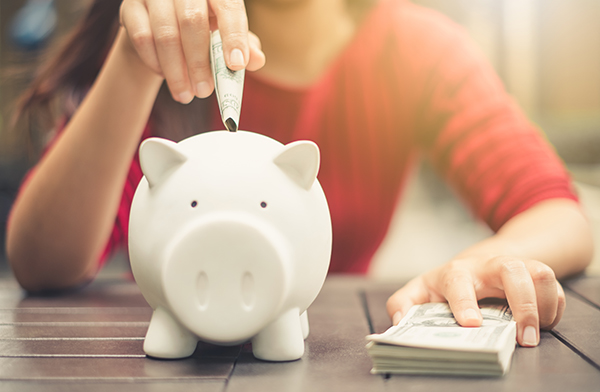
Federal Share Insurance
Safeguarding your hard-earned money is vitally important. That's why Kellogg Community Credit Union has federal share insurance, administered by an independent government agency, the National Credit Union Administration (NCUA).
How Much is Insured?
The National Credit Union Share Insurance Fund (NCUSIF) protects aggregate savings up to at least $250,000 in your checking accounts, all savings accounts, including regular share savings accounts, secondary savings accounts, youth savings accounts and certificates.
IRA Safety
The coverage for individual retirement accounts (IRAs) and Keoghs is also $250,000. Funds in traditional IRAs and Roth IRAs are added together and insured in the aggregate to $250,000. A Keogh account is insured separately up to $250,000 as well. It's important to note that share insurance doesn't cover investment products such as mutual funds and annuities.
Individual & Joint Accounts
Something else about share insurance: It separately insures individual and joint accounts. For example, say you have an individual account containing $250,000, and a joint account with your spouse containing $250,000. Each account is insured separately for a total coverage of $500,000.
So how do you know we're federally insured? All federally insured credit unions–like yours–must post the official NCUA insurance sign in their offices. As do other NCUSIF-insured credit unions, we abide by high standards of safety and soundness. Because of that, NCUSIF is a strong, well-capitalized fund.
So, rest assured, your money is safe. You can count on Kellogg Community Credit Union to take good care of it.
Celebrating Thanksgiving During COVID-19

It’s turkey season! Here’s how to celebrate Thanksgiving 2020 without compromising the health and safety of you and your family.
Planning a Thanksgiving dinner
The best plan for a safe Thanksgiving this year, is staying home and enjoying the company of your immediate household. If you do plan to host an in-person Thanksgiving dinner this year, take these steps to ensure your day is as safe as possible
- Keep it outside. Moving Thanksgiving dinner outdoors greatly reduces spreading coronavirus, according to the CDC. If that’s not possible, keep your home well-ventilated during Thanksgiving dinner by opening some windows and doors.
- Limit attendees. The CDC cautions that larger gatherings, by default, pose a greater risk of spread. It's best to limit you gathering to only one other household, if possible.
- Keep it local - It’s also important to consider your guests’ hometowns when drawing up an invite list. The CDC recommends keeping Thanksgiving dinners to local guests only this year.
- Short and sweet. The CDC warns that longer gatherings pose a greater risk than shorter dinners. You can cut down on the hours your guests linger around the table by adding a finish time to your invitations.
Attending and hosting a dinner
Whether attending a Thanksgiving dinner or welcoming dinner guests into your own home, follow the CDC’s general guidelines for reducing the risk of contagion.
- Set up sanitizing station. Have guests sanitize upon arrival or offer to bring one to your host’s home.
- Space seating. Aim to space guest with several feet between each chair.
- Follow basic hygiene practices. Follow practices, such as coughing and sneezing into the bend of your elbow.
Going virtual - the best option for 2020
According to the CDC, anyone who’s been diagnosed with COVID-19 and has not met the criteria for when it is safe to be near others, currently has symptoms of COVID-19, is waiting for COVID-19 test results, may have been exposed to someone with COVID-19 in the last 14 days or is considered high risk for severe illness from COVID-19 should not attend any in-person holiday celebrations.
With cases of COVID-19 on the rise, the best option for safe Thanksgiving celebration is a virtual Thanksgiving. It's hard not to be sitting at the dining table next our loved ones during the holidays, but it's important to be safe so those loved ones can be with us for many holidays to come.
How to plan a festive virtual celebration:
- Plan a shared dinner experience in advance. This can include a shared menu and lighting the same scented candles.
- Prep your dinners together on a video chat.
- Drop off a basket of Thanksgiving treats at each of your virtual guests’ doorsteps.
- Video chat your “shared” Thanksgiving dinners.
Manage Your Money During COVID-19
The COVID-19 pandemic is not only causing fear and uncertainty about our health, but our livelihood as well. Many wonder “What happens to me and my family if my employer has to lay off people or my hours are cut?”
Track Your Expenses
Now more than ever, it’s important to keep track of your expenses to make sure you’re not spending more than you make or increasing your credit card debt. If you feel like you live paycheck to paycheck, then now is definitely time to take a hard look at your expenses, see where you can make adjustments, and take firm control.
Create a Budget
To get control, you need to know exactly what you’re dealing with – how much money is coming in each month and how much is going out. To get a clear picture, create a budget. There are many apps and online templates you can choose from. Many of them provide visual images, like pie charts, that help you see how big of a chunk each expense is taking from your take-home pay.
A budget will tell you if you’re setting aside enough money for the essentials (rent, utilities, food) and how much is being eaten up by non-essentials (like concerts, eating out, cable, or gym membership). If money is tight, cancel non-essential subscription services temporarily. You can always restart them when things get better. The silver lining of this pandemic is that since most of us are practicing social distancing to minimize contagion, you may already be saving money by not going out.
Avoid High-Interest Cards
A Platinum credit card from Kellogg Community Credit Union offers many ways to save. Learn more about the great low rates and member benefits off KCCU’s Edge and Elite credit cards. Transfer the balance from the highest card to a lower interest card and pay more than the minimum whenever possible. Also, until you have paid off the debt, only use your credit card for emergencies.
Emergency Savings
Another important task is to beef up your emergency savings or start an emergency savings account if you haven’t done so. Ideally, you want to save at least 3 months of your take-home pay. You can start with as little as $5 a week. Simply save $5 consistently each week and when you think you can add a little more, increase your deposit. To make this easier, set up an automatic transfer from your checking account. It’s easy to do within Online Banking.
Know that KCCU is always by your side and we will do everything in our power to help you get through this crisis. If you need help, give us a call at 269-968-9251 or apply for Financial Relief Assistance
Pending Package Scam

Everyone loves a surprise package, and scammers are taking the excitement out of that experience by using bogus packages as a cover for a scam that tricks victims into sharing personal information. Here’s all you need to know about the pending package scam.
How the scam plays out
In the pending package scam, the victim receives a text message from a contact who is an alleged mail carrier or represents a package-delivery service. The contact tells them that they were unable to deliver a package to the victim’s home. The victim is asked to reply to confirm their identity; however, as soon as they engage with the scammer, they are asked to share personal information or credit card details for scheduling delivery. This, of course, places the victim at risk for identity theft.
Red flags
There are two primary red flags that can warn you about the pending package scam.
First, the original text or email will generally not inform the victim of the identity of the company they represent. The scammer will only claim to be an employee of a mail or package-delivery service, but will not verify if they work for UPS, FedEx or another legitimate organization.
Second, the scammers don’t always check if the victim actually has a package in transit. They’ll either assume the victim has recently ordered something online or they’ll claim a friend or family member has sent a surprise gift. If you know that neither of these is true, you can be on the alert for a possible scam.
Don’t get scammed!
Take these precautions to avoid being the next victim of a pending package scam:
- Be wary of unsolicited communications. Your mail carrier and package delivery services will never contact you via text message. If a package cannot be delivered for any reason, they will usually leave a note on the door.
- Track all incoming packages. After placing an order for an item, record the tracking number for the package so you can easily verify its whereabouts. This way, you can quickly confirm the authenticity of any suspicious texts, emails or phone calls about your package.
- Never share personal information with an unverified contact. Be super-wary when asked to share sensitive information via text. If you suspect fraud, end the conversation immediately and do not engage further.
- Never click on links in unsolicited text messages. Links in text messages can download malware onto your computer or device.
If you’ve been targeted
If you believe you’ve been targeted by a pending package scam, it’s important not to engage with the scammer. Delete any suspicious text messages and block the number of the contact. You can also report the scam at FTC.gov .
Millennials and the Coronavirus Recession

The coronavirus recession hasn’t been easy on anyone, but millennials may have been hit hardest.
According to many economic experts, the 73 million millennials in the U.S. could experience financial setbacks from COVID-19 that have a longer-reaching impact than those experienced by any other age group.
Here’s why the coronavirus pandemic has been especially hard for those in 25- to 39-year-old age bracket.
Another recession for millennials
Economic recessions are nothing new for this demographic. They already lived through the Great Recession of 2008, and for many, the impact of the last recession is still being felt today.
The Great Recession hit millennials when they were still in college or just starting out on their career paths. For some, it meant the choices for their first post-college job were very slim. For others, it meant dropping out of college when there was no longer a guarantee of a degree netting them a higher-paying job. Regardless of how they were impacted, many millennials are still playing catch-up from the recession of 2008.
“For this cohort, already indebted and a step behind on the career ladder, this second pummeling could keep them from accruing the wealth of older generations,” says Gray Kimbrough, Washington, D.C. economist and American University professor.
Job losses across the board
More than 40 million workers in the U.S. have filed for unemployment since the beginning of the pandemic, but this is another area where millennials have been hit harder than most.
According to a recent report by Data for Progress, 52% of respondents under age 45 have lost jobs, been furloughed or had their work hours cut due to COVID-19. In contrast, just 26% of respondents over age 45 have suffered a job loss of some kind during the coronavirus pandemic.
Millions of millennials have lost jobs that are impossible to do while adhering to social distancing mandates. At the height of the economic lockdowns in April, the economy shed a staggering 20.5 million jobs. Of these jobs, 7.7 million were in the leisure and hospitality sector — a sector that is dominated by millennials. An additional 1.4 million lost jobs were in health care, primarily in ambulatory services — another field that employs a disproportionately large number of millennials.
No nest egg
Many millennials who are still on the rebound from the Great Recession are carrying piles of debt and have minimal savings — or none at all.
According to surveys conducted in 2018 by the Federal Reserve, 1 in 4 millennial families have a negative net worth, or debts that outweigh their assets. One in six millennials would not be able to find the funds to cover a $400 emergency. For these young employees, a relatively mild setback from the coronavirus can be devastating to their finances.
Millennials also tend to neglect their retirements. A recent report by the National Institute on Retirement Security found that 66% of millennials in the workforce have nothing put away for their retirement.
Can millennials recover?
Millennials had still not fully recovered from the Great Recession of 2008 when the coronavirus pummeled the economy. They have shouldered a large share of job losses and have little or no savings to fall back on.
But there is hope. Millennials may not be as young as they were during the Great Recession, but they still have time to bounce back. They can use the unique challenges presented by the coronavirus pandemic as an opportunity to reevaluate their career track and move onward toward a brighter future.
This age group, also known as Gen Y, is famous for its resilience and can-do attitude. They’ve gotten through the Great Recession of 2008 and they’ll beat the coronavirus recession, too. With hard work, perseverance and small steps toward a better future, millennials can pull themselves up and regain their financial health.
If you’re experiencing financial difficulties, we can help. Call, click or stop by Kellogg Community Credit Union to speak to a member service representative today.
When to Pay a Bill with a Credit Card?

Credit cards and debit cards both offer incredible convenience. With just a quick swipe or a linked account, a payment can be instantly processed. It seems like a no-brainer to use that convenience for taking the hassle out of paying bills. But, is it a smart idea to pay monthly bills with a credit card or debit card?
Choosing to pay a bill with a card can have a significant impact on your general financial wellness — for better or for worse. That’s why it’s important to consider the many variables of this decision before going ahead with it.
Let’s take a closer look at the pros and cons of paying monthly bills with a credit card or debit card.
The advantages of paying bills with a credit card or debit card
There are many reasons you may want to pay your monthly bills with a credit or debit card when possible. Here are just a few of the advantages of paying with plastic:
- Automate monthly payments - Setting up automatic payments for monthly bills through a credit card or debit card will help ensure payments are always on time.
- Build credit with a consistent monthly payment - Using a credit card for a monthly bill is a great way to amp up a credit score without running the risk of overspending. Just be sure to pay the bill in full and on time every time.
- Earn rewards - Using a credit card that offers rewards for a bill that needs to be paid anyway will help to accumulate those rewards points and even cash back without overspending.
- Consumer protection - Paying with plastic offers the consumer the advantages of purchase protection, zero or minimal liability in case of fraud, guaranteed returns and more.
- Pay your bills quickly - With a credit or debit card, paying a bill only takes a few clicks or phone prompts, and you avoid the hassle of writing out checks and using snail mail.
- Budget easily - Paying with a credit or debit card makes for easy tracking of monthly spending.
- Payments post promptly - Bill payments made via credit or debit card will generally post within one or two business days. Contrast that with a check that needs to be mailed out, delivered to the correct party and then deposited and cleared until the payment is finally processed.
The disadvantages of paying bills with credit or debit cards
Here’s the flip side of paying bills with plastic:
- Fees - There may be fees for paying the bill with a credit card. Pay close attention to the payment options on every bill; some service providers charge a processing fee for paying with a debit or credit card.
- It can make a difficult financial situation worse - For consumers who are already carrying a sizable amount of debt, it may not be the best idea to charge a monthly bill to a credit card. Similarly, it isn’t responsible to set up an automatic monthly payment through a debit card that is linked to an account that may not have enough money to cover the charge each month.
- Credit utilization may cross the threshold to an undesirable rate - One of the key components of an excellent credit score is a low credit utilization rate. For consumers with a minimal amount of available credit, charging too many bills to a credit card can cause their score to plunge.
- Interest may accrue - Consumers who cannot pay their entire credit card bill each month would be saddled with more accrued interest than they can afford if they choose to pay their monthly bills with a credit card.
Which of my bills can I pay with a credit or debit card?
Fees May Apply
These monthly bills can usually be paid with a credit card, but you may need to pay a fee to do so:
- Car insurance
- Home insurance
- Health insurance
- Taxes
Usually Fee-Free
The following monthly bills usually allow you to pay with a credit card or debit card, and without a fee:
- Subscription services
- Phone bills
- Utility bills
- Internet providers
- Cable providers
Likely Not Able to Pay with Card
You will likely not be able to pay the following monthly bills with a credit or debit card:
- Mortgage
- Rent
- Car payments
Before deciding whether to pay a specific bill with a credit or debit card, it’s best to check with your provider to find out if this is a viable option and if there will be a fee attached for paying with plastic.
The bottom line
Sometimes, paying bills with a credit card or debit card makes perfect financial sense, but it sometimes does not. Before deciding which way to go on any particular bill, consider all the relevant factors detailed above to be sure you’re making the responsible choice.
How can I save on car insurance during the COVID-19?
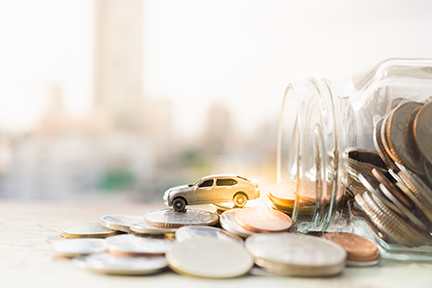
With less time on the road, there are opportunities to save. Between self-isolation, working and schooling from home, and less recreational travel, you may find yourself driving less. And with less time on the road, there’s potential to save your auto insurance policy.
4 Ways to Save
Here are four ways you may be able to reduce your auto insurance premium during the COVID-19 pandemic.
Low Mileage
Customers that were previously unable to may now be able to qualify for lower mileage discounts, due to stay-at-home orders or remote work.
Self Storage
If a car is safely stored with no intention of driving it and you do not have a loan on your vehicle, you can decrease or pause coverage on your vehicle.
Refunds & Rebates
For the months April through June, most auto insurances distributed refunds and rebates. Although these have begun to stop, it still doesn’t hurt to check in with your carrier.
Retro- Pay
Some carriers have indicated that they may retroactively give back more of their savings from 2020 through COVID-related discounts of 10% or so that will be available later this year.
Other ways to save
You may be eligible for one or more of the many auto insurance discounts out there. You could save money for being a safe driver, multiple household vehicles, or for even just having an alarm system in your vehicle.
Opportunities that some carriers offer
Multi-Car
Car Safety
Safety equipment like anti-lock brakes, air bags, and daytime running lights – can be a discount of up to 40% off of medical payments or personal injury protection coverage.
Anti-Theft
Having anti-theft features can get you 5-25% off your comprehensive auto insurance.
New Car
Available for cars less than three years old.
Good Driver
If you have not any incidents (accidents or moving violations), you could qualify for a discount of 10-40%.
Outside Your Insurance
Occupational, alumni associations and professional organizations can even provide discounts.
Discounts may be limited if the policy holder qualifies for more than one discount and discounts are not all applied automatically. Call KCCU Insurance Agency today and one of our agents can determine if your policy qualifies for any discounts.
KCCU Insurance Agency - 800-632-9609 or visit us online
Tax Scams for 2020

Each year, the IRS publishes the “Dirty Dozen,” a list of tax scams most prevalent during that year’s tax season. This year, with COVID-19 pushing off the federal tax deadline to July 15, the IRS held off publishing the list until early July, and of course it’s loaded with COVID-19-related scams.
Whether you’ve filed for an extension, you’ve had your taxes filed for months or you’ve gotten them in just in time at the mid-July deadline, be on the lookout for the Dirty Dozen of 2020, which continues spreading for months after Tax Day.
1. Phishing. Fake emails or websites impersonate the IRS while trying to steal information about refunds or Economic Impact Payments (EIPs).
2. Fake charities: Criminals exploit the fear surrounding the pandemic to set up bogus charities and then rob innocent victims who believe they’re helping the unfortunate.
3. Threatening impersonator phone calls: An alleged IRS agent threatens arrest, deportation or license revocation if taxes are not paid immediately by gift card or wire transfer.
4. Social media scams: Scammers use information found on social media platforms for a variety of scams.
5. EIP or refund theft: Scammers steal taxpayers’ identities, file false tax returns in their names and pocket the refunds and their EIPs.
6. Senior fraud: Scammers, or long-term caregivers of the elderly, file tax returns on their behalf and pocket the refunds and EIPs.
7. Scams targeting non-English speakers: Scammers impersonate IRS agents and threaten jail time, deportation or revocation of driver’s license if an immediate payment is not made.
8. Unscrupulous return preparers: Alleged tax preparers will offer their services and then file a tax return on the victim’s behalf and pocket the refund.
9. Offer in Compromise scams: Bogus tax debt resolution companies make false claims about settling tax debts for “pennies on the dollar” through an Offer in Compromise (OIC) in exchange for a steep fee.
10. Fake payments with repayment demands: A scammer files a fake tax return on a victim’s behalf and has the refund deposited into the taxpayer’s checking account. The scammer then impersonates the IRS, telling the victim that the refund was mistakenly inflated and the victim must return the extra funds via gift card or wire transfer.
11. Payroll and HR scams: Scammers steal W-2s and other tax information. They then impersonate employees, asking HR staff to change direct deposit information for their paychecks.
12. Ransomware: Malware infects a victim’s computer, network or server. Sensitive data is encrypted and locked. The scammer demands a ransom payment in return for the victim’s information.
Protect yourself
Remember these basic rules and information to stay safe:
- The IRS will never initiate contact with taxpayers via email.
- The IRS will never insist on a specific means of payment.
- The IRS will not threaten taxpayers over the phone or insist upon immediate payment.
- Refund checks will never be deposited in a taxpayer’s account if they have not filed taxes.
- Taxpayers can search for legitimate charities using the IRS’s charity search tool.
- Taxpayers can use the IRS’s OIC tool to see if they qualify for an authentic offer.
- Legitimate tax preparers will have a preparer Tax Identification Number (TIN).
- Personal information should never be shared online with an unverified contact.
- Links embedded in emails from unverified sources should never be clicked.
- Tax software should not be downloaded unless it features multi-factor authentication.
Selling Your Home During COVID-19
Selling a home is a move people generally plan years in advance, and 2020 was no different. For many homeowners, the hot real estate market of spring and summer of 2020 was going to be the season they put their homes up for sale. And then came the coronavirus — and the world turned upside down. With people struggling just to get by financially, and health and safety paramount, selling a home seemed like a dream from another lifetime.
Real Estate Highs and Lows
March & April
Records of home sales in the U.S. from the beginning of the outbreak reflect these feelings, with a sharp decline of 21% in total homes sold in March, and another decrease of 17.8% in April, according to data from the National Association of Realtors (NAR) .
Current Market
tNow, though, the U.S. real estate market is looking very different. As the economy limps toward a recovery, many buyers are searching for a new place to call home and the housing market is thriving. In fact, national home sales climbed a record 20.7 percent in June compared with home sales from a year ago, global pandemic notwithstanding
Declining Rates
One crucial factor driving the surge in home sales is the declining mortgage rates. In the beginning of March, mortgage rates plunged to a record low of 3.13 percent. Since then, the market has seen several smaller increases and decreases. On Aug. 6, history was made when the national average mortgage rate hit 2.88%, the lowest rate on record of all time.
Despite the flourishing housing market, many homeowners who’ve planned to sell their homes this year are still reluctant to take that leap. And it’s no wonder, with restrictions still in place and so much uncertainty still surrounding the economy.
If you’ve been thinking of selling your home, you still can. Here’s all you need to know about selling your house during the COVID-19 crisis.
Are you really ready to sell?
Before putting your home on the market, it’s important to consider all the variables involved in this step, and be sure it’s a financially responsible move.
With the pandemic causing a slowdown of the economy, life circumstances you may have relied on, such as a steady job and salary, may not be dependable anymore. Before calling a real estate agent, it’s a good idea to review all the relevant numbers to be sure that selling your home now is in your best interest.
Stage your home to sell
Anyone selling their home knows they need to showcase it in the best possible light, and never has this been truer than now. With restrictions still in place in many states and lots of people stuck home in quarantine, many buyers will be doing their touring virtually. For sellers, this means that staging and photographing a home well is more important than ever.
Get help from a Pro
Consider hiring a professional home-staging and photography service to truly present your home in the best way possible. If your furniture is shabby or your home is too cluttered to be attractively displayed, you can also invest in virtual staging software or hire a team of professional virtual stagers to help you update the furniture and clean out the clutter with just a few clicks. Either option can cost you upward of $75 an image, but the NAR report from 2019 shows that on average, sellers see about a 5% return on this investment.
Staging Tips from the Pros
Here are some general tips to follow when staging and photographing your home, as shared by Buddy Mountcastle, a real estate photographer based in Fort Lauderdale, Fla.:
- Clean up the outside. Curb appeal is the first selling point for any home. Make sure there are no weeds, overgrown grass or kids’ toys ruining the first impression of your home
- Let the sunshine in. Aim to shoot mid-day. Scrub your windows clean, open the curtains and let the natural sunshine brighten up every room.
- Undo the lived-in look. Remove all personal effects from your home before going camera-crazy. This includes stray shoes, family photos, piles of magazines, small kitchen appliances and more.
- Shoot from the right spot. When capturing a room on camera, try to get as much of the space in the frame. Aim to include three walls, which can mean shooting from the corner or doorway. It’s also important to shoot straight and from chest height so as not to distort the room.
Virtual Tour
Play it safe
If you will be allowing potential buyers into your home, don’t forget to play it safe. Set up a box of disposable masks, shoe covers and sanitizing wipes at the door for all visitors who will be tramping through your home. If you will be hosting an open house, it’s best to allow a limited number of people inside at a time to make social distancing possible.
Price it right
Fewer homeowners are putting their houses up for sale this year, but the pool of buyers is also smaller than usual. This means you won’t be able to jack up the price of your home for way more than it’s worth. Work with an agent to look at comparable home sales in the area and to determine a fair asking price. Also, as always, list a selling price a bit higher than your actual desired price to allow for negotiations.
Closing during COVID-19
The coronavirus pandemic will likely affect every aspect of selling your home, up until the closing. With many workers in the home-selling industry, from professional home inspectors, to mortgage lenders, to movers working with a smaller team now, be prepared for various steps of the home-selling process to be delayed.
Be Patient
It’s best to be patient and to anticipate that things may take longer than usual. This is true with lenders, as low mortgage rates are triggering a spike in refinance applications across the country and lenders are busier than ever.
COVID-19 has wrecked all sorts of plans, but selling your home does not have to be one of them. With some adjustments and altered expectations, you can successfully sell your home during the coronavirus pandemic.
What’s the Best Way to Use a Home Equity Loan?
Q: With interest rates falling and home prices rising, it seems like a great time to tap into my home’s equity using a home equity loan. What’s the best way to use these funds?
A: A home equity loan can be a fantastic way to source extra funds during a falling-rates environment. Tapping into your home’s equity, or the positive difference between what is owed on a home and its current value, will give you the funds you need for a large expense with no additional strings attached.
With interest rates on a Kellogg Community Credit Union Home Equity Loan as low as 4.250% APR*, the repayment plan is always affordable. If approved, you’ll receive the funds in one lump sum.
Here are three forward-thinking uses for a home equity loan:
1. Home improvements
One of the most popular uses for home equity is for . These can be as major as adding a 1,000-square-foot extension to your home, as minor as replacing old carpet with new hardwood flooring or anything in between.
Using your home’s equity for home improvement projects is a smart choice. For one, the money you put into the renovations acts as an investment. If you choose improvements that increase your home’s value, you can make back the money you spent or even see a return when you sell your home.
It’s best to go for improvements that add lasting value to your home instead of blowing big bucks on superficial remodeling projects that may look dated just a few years down the line.
2. Debt consolidation
Another popular use for a home equity loan is to consolidate high-interest debt. Paying off multiple debts at high interest rates can be cumbersome and difficult to manage. Worse, the heavy interest rates mean more of the borrower’s money goes toward the lender and less goes toward paying down the principal of the debts. Using a home equity loan to consolidate debt to a single and no-interest or low-interest loan can slash a pile of debt by several thousands of dollars and help shorten repayment time by several years.
3. College education
When interest rates are falling, funding a college education through a home equity loan instead of a high-interest student loan can be a smart choice. Similarly, homeowners struggling to meet their student debt payments without defaulting on the loan might want to use their home’s equity to pay off the debt quickly and replace it with a more manageable low-interest loan. It’s important to note that paying off a federal student loan with home equity might not be the best choice, as these loans are sometimes eligible for partial or complete forgiveness..
Before you take out a home equity loan
A home equity loan can provide homeowners with the funds they need for a home improvement project, to get their debt under control, pay for their college education or other expenses and large purchases. However, before taking out a home equity loan it’s important to run the numbers so you are sure you can easily meet the regular loan payments. Otherwise, you risk defaulting on the loan and losing your home.
If you’re ready to take out a home equity loan, look no further than Kellogg Community Credit Union. Our rates and terms are always competitive. Visit us online or give us a call at 269-968-9251 to get started on your loan application today.
* APR = Annual Percentage Rate and is valid as of 9/2/20. Rates are subject to change without notice. Subject to credit approval and other conditions. Rates may vary based on term. Equal Housing Opportunity.

How to Spot a Counterfeit Bill
Printers and software have gotten better, so counterfeit money has gotten harder to spot. Here are eight simple ways to detect it along with what to if you find some!
Counterfeiting is on the rise
The coronavirus pandemic has brought with it a wave of scams, with no signs of slowing down. These scams are also producing a surge of counterfeit bills into circulation. Using cutting-edge technology, scammers create bills that look just like the real thing to the untrained eye.
Unfortunately, once counterfeit bills are passed, their new owner can become liable for passing them on to someone else.
In an effort to combat the reach of counterfeit bills, the Secret Service and the U.S. Treasury have added several identifying features to legitimate dollar bills to help citizens and business owners determine whether they are authentic.
The Real Deal - 8 Things to Look For
Here are eight things to check for when determining if a bill is the real deal.
1. A hologram of the face image on the bill
When held up to the light, the hologram on the bill should match the face on the front of the bill. Scammers will often bleach a lower denomination bill and try to pass it off as a bill of a higher denomination — but they can’t change the interior hologram. So, if the $100 bill is really a counterfeit bill created from a $5 one, holding the bill up to the light will reveal the face of Abraham Lincoln, and not Benjamin Franklin, who appears on authentic $100s.
2. A thin vertical strip of text spelling out the bill’s denomination
Holding the note up to the light will also display this sign of authenticity on genuine bills.
3. Color-shifting ink
All new-series bills, except for fivers, were designed with this trick: If you tilt the bill back and forth, the numeral in the lower right hand corner will shift from green to black and back to green again.
4. Watermark
The watermark of the bill can be seen in an unprinted space to the right of the portrait when the bill is held up to the light.
5. Security thread
Also apparent when the bill is held up to light, the security thread is a thin strip running from the top of the face on the bill until its bottom. The security strip is positioned to the right of the portrait on $10 and $50 bills, and to the left of the portrait on $5s, $20s and $100s.
6. Ultraviolet glow
You’ll need an ultraviolet light for this to work, but it’s an instant reveal about the bill’s authenticity. When held up to an ultraviolet light, $5 bills glow blue, $10 bills glow orange, $20 bills glow green, $50 bills glow yellow, and $100 bills glow red.
7. Microprinting
For yet another sign of a bill’s authenticity, you can look for tiny microprinting on the bill’s security thread, which spells out its denomination in all-caps text.
8. Fine line printing patterns
Look for very fine lines behind the portrait and on the other side of the bill as well.
What to do if you’ve been passed a counterfeit bill?
If a note you’ve been passed does not hold up to the authenticity test, and you believe it’s a
counterfeit bill, the U.S. Treasury advises the following course of action:
- Do not put yourself in a position of danger.
- You can also mail it to your nearest Secret Service office.
- Do not return the bill to the passer.
- If possible, delay the passer with an excuse.
- Take note of the passer’s physical appearance and record their vehicle license plate if possible.
- Contact your local police department or call your local Secret Service office.
- Write your initials and date in the white border area of the suspected counterfeit note.
- Do not handle the counterfeit note. Place it inside a protective cover, a plastic bag or an envelope until you can pass it on to an identified Secret Service Special agent.
Counterfeit cash can be harder to spot than you think. Don’t get stuck holding the bag! If you think you’ve been passed a counterfeit bill, and the note is missing the signs listed above, follow the advice of the U.S. Treasury to keep your hands clean.
Resources
Sources:
https://www.mentalfloss.com/article/501655/how-spot-counterfeit-bill
https://www.businessknowhow.com/security/counterfeitmoney.htm
https://www.wvnews.com/news/wvnews/holograms-presidential-faces-will-authenticate-dollar-value-state-police-say/article_a415a9a8-1979-5d1f-95e6-7e75575589cf.html
A+ Back to School Apps
The new school year is starting soon! Whether your kids are getting ready for another round of remote schooling via Zoom or they’re packing their backpacks with face coverings and hand sanitizer for in-person schooling COVID-style, there’s at least one app to help get the year off to a great start.
Here’s a rundown of some of the most likely candidates:
myHomework (iOS, Android)
It’s not easy to keep up with assignments, projects and scheduled tests from so many different classes. Help your child stay on top of their work this year with the myHomework app. With color-coded classes to keep things organized and automatic reminders before looming due dates, the app is super-easy to use. The free version of the app includes assignment tracking, due date reminders, syncing between classes and homework widgets, while the paid version, at just $4.99 a year, offers an ad-free upgrade with file attachment support, enhanced app widgets, external calendar access, a homework import feature and more.
LaLa Lunchbox (iOS)
This adorable app makes meal planning fun again! No more arguments and frustrations about what to prepare for lunch; with your child on board, it’s easy as pie. Let your child set up a profile with a selected monster avatar, and choose a virtual meal from the LaLa Lunchbox’s food library by dropping their chosen foods into the monster’s mouth. The app will tell the parents what to buy in the grocery store so they can prepare the lunch their kid wants. Parents can also customize the food options for specific diets, and all the choices are preselected by a dietician. Meal planning, done!
Cozi Family Organizer (iOS, Android)
Between school schedules, meet-the-teacher nights, after-school activities and more, parents have lots to keep track of at the start of a new school year. The free Cozi app helps keep the entire family organized with a synced family schedule and color-coded calendar that streamlines across multiple devices. Save grocery lists and recipes on the app and keep a running to-do list on Cozi to keep on top of all your errands and chores. You can even manage a family journal on the app for the ultimate in sharing!
Bear Focus Timer (iOS, Android)
If you’ve got a little one at home who has trouble focusing on their tasks, the Bear Focus Timer (BFT) app might be just what you need. The no-frills Pomodoro-style timer is created to help the smallest of minds stay focused on their homework, chores or other activities with the help of simple schedules and white noise. You won’t find a lot of bells and whistles on this $1.99 app, but the timer allows the user to customize focus times and break times for the ultimate in productivity.
Back-to-school season can be frenzied as the family adjusts to a new routine and schedule. Let these apps help you keep calm and organized so the entire family can ace the start of the new school year.
“When should I invest?”
Every investor has asked this question at one time or another.
The answer to this question is twofold … And these two answers might surprise you.
The first answer:
Since you want to buy low and sell high, the best time to invest is when prices are low. Most investors become timid when prices are low because they fear that prices will fall even further. While this is a risk in investing, it’s also good to remember that you don’t want to buy when prices are high. It’s not that different from when you bought your house: You bought it for as low as you could and you took the risk that prices could go lower. But ideally, you bought it low because you wanted the value of your home to rise. Buying when a stock price is low means you can buy more of it inexpensively. So, if it rises, you can earn a higher profit.
The second answer:
The best time to invest is now. Remember the wise saying: “If you want a tree, the best time to plant it was 25 years ago. The second-best time is right now.” Savvy investors rarely regret investing; more often than not, they regret not investing. All too often, inexperienced investors want to “time the market” by waiting for the economy to improve before they put their money into something.
Now it is time to put the answers together: If you want to invest, forget timing the market and waiting for the economy to improve. Instead, carefully choose stocks that are priced low right now but are poised to grow (because they have strong financials and offer a good product or service).
Pick the best features for you
Q: How do I decide which features to look for in a new car, and which to skip?
A: Shopping for a car doesn’t have to be complicated. To help you out, we have created a list of key features to consider in your new car, and a list of features you can skip.
Must-have safety features
- 360-degree camera: This camera gives drivers a bird’s-eye view of the area around the car.
- Evasive steering: This feature provides additional steering support when you are in danger of colliding with another vehicle, and your own steering efforts are insufficient.
- Forward collision warning: Drivers get a visual and/or audible alert when their vehicle is heading toward a forward collision.
- Blind spot alert: This feature alerts the driver when there is an object or pedestrian in direct line of their blind spot.
- Automatic emergency braking: Stay safe with this feature, which automatically applies the brakes when it senses a vehicle in your car’s way. Some systems include pedestrian detection as well.
Convenient features
- Automatic keyless entry: This feature automatically unlocks a car’s doors when it senses a nearby fob.
- Power tailgate: This feature for pickup trucks and SUVs lets you lower and raise your tailgate with the push of a button.
- Multi-zone climate system: Family road trips are peaceful again with this feature, which allows for different climate controls throughout the car.
- Speedy USB-charging outlets: No more unbearable waits for your gadgets to power up with this super-speedy USB port.
- Heated steering wheel and driver’s seat: This one is for those frosty mornings when your car can’t get warm fast enough.
- Wireless charging pad: Just place your phone on one of these pads and it will start powering up.
Fun-to-have features
- Home assist device connectivity: Some new cars allow you to use remote voice control with home assist technologies, like Alexa, for your car.
- Rear entertainment systems: This feature gives the rear seat of your car a completely separate entertainment system.
- Android Auto and Apple CarPlay: These features sync your smartphone’s interface with your car’s infotainment system for easier phone control.
Features you can skip
- Bigger wheels and thinner tires: The ride will be less comfortable, and your wheels will be more prone to damage from potholes.
- Built-in navigation systems: You know you’re going to use Waze most of the time anyway. Also, most built-in navigation systems require constant updates.
- Lane keeping assist: This feature automatically steers or brakes your car when you cross a lane marking without turning on a blinker. In real life, though, it can be annoying as you’ll often need to cross a lane marker for good reason, like moving over for an emergency vehicle.
Before you start shopping, call, click, or stop by Kellogg Community Credit Union to hear all about our auto loans.
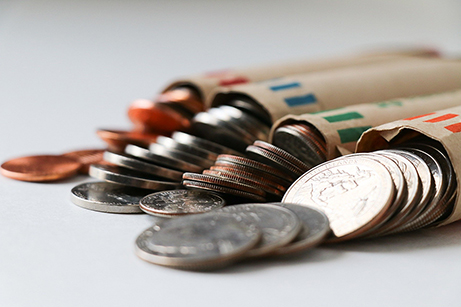
Is there a coin shortage?
The COVID-19 Global pandemic caused an initial panic leaving store shelves empty of face masks and toilet paper. Hand sanitizer, cleaning supplies, paper towels and meat followed quickly in what was fast becoming routine for life during COVID-19. And now, the latest commodity to run in short supply is coins.
Got change? Many financial institutions, retailers and private citizens don’t.
Although we are increasingly becoming a cashless society, coins play an integral role in day-to-day commerce, and a dearth in their supply can severely impact small businesses that are already struggling to survive. There’s more than just pocket change at stake here, and if things don’t improve soon, the effect on the economy can be critical and long-lasting.
Here’s what you need to know about the most recent shortage caused by COVID-19.
What triggered the shortage?
The jangling coins in your wallet were stricken in the U.S. Mint. The Federal Reserve distributes these coins to financial institutions across the country. From there, the coins are purchased by retailers or private citizens, enter the economy and begin circulating. But now, with the pandemic upending the economy and the Mint operating at partial capacity, this chain was disrupted for months at a time.
“The COVID‐19 pandemic has significantly disrupted the supply chain and normal circulation patterns for U.S. coin,” according to a statement issued by the Federal Reserve. “In the past few months, coin deposits from depository institutions to the Federal Reserve have declined significantly and the U.S. Mint’s production of coin also decreased due to measures put in place to protect its employees.”
Federal Reserve Chairman Jerome Powell added that the massive shift to online or contactless transactions has further disrupted the flow of coins through the economy.
Even now, as large segments of the country reopen, the supply of coins is failing to keep pace with demand. Many consumers still shop remotely and those who do shop in physical stores are wary of handling germ-infested dollars and coins and are opting for contactless payment instead.
The response to the shortage
To help mitigate the fallout of the coin shortage, the Federal Reserve began to ration its coin distribution on June 15, giving banks and credit unions only part of their requested orders. The total number of rationed coins each bank or credit union will receive is determined by the institution’s history of coin orders and the capacity of the U.S. Mint to fulfill the request. The Reserve has also encouraged banks and credit unions to order only the amount of coins they need to meet short-term member demand.
The Federal Reserve is working together with the Mint to ramp up production of new coins and to lift supply allocations in the near future.
The impact of the shortage on the economy
The severity of the shortage first came to light in mid-June, when banks in Tennessee were notified that they’d only receive a small portion of their weekly coin order from the Federal Reserve.
In a virtual hearing on June 17, Rep. John Rose of Tennessee told Powell that the banks in his district, having received only part of their weekly coin order, would likely run out of change by the end of the week, or might need to round up or down if they run low.
“In a time when pennies are the difference between profitability and loss, it seems like it might be a bigger concern than the announcement from the Fed would indicate that it is,” Rose said.
The shortage can have devastating effects for retailers who won’t receive their complete requested orders of coins from their bank or credit union, Rose said. Without the means to provide adequate change for their customers, small business owners can be forced to round up or down, leading to significant losses in revenue and in customers.
A temporary shortage
The Federal Reserve believes the coin shortage is only temporary and that it will resolve itself in the near future.
“As the economy reopens, we’re seeing coins begin to move around again,” Powell said.
However, the dearth in available coins is still a reality that can be felt in all sectors of the economy. As a consumer, this means that you may feel the impact of the shortage when paying cash at brick and mortar stores; the clerk may not be able to provide you with accurate change. Kellogg Community Credit Union currently has access coin for our members who need it; however as supply chain changes occur, we may experience intermittent or temporarily coin shortages.
Finally, if you have spare change lying around at home, you may want to deposit it or exchange it for paper currency to help KCCU close the gap between our coin supply and demand

Travel Safe this Summer
Summer is here, and many Americans are itching for a vacation. But is it possible to travel safely right now? Is an airplane really a flying Petri dish to be avoided until the pandemic blows over? Can you take a road trip if it means making rest stops in three different states?
So many questions — but we’ve got answers! Here’s how to enjoy your getaway this summer without compromising on your health and safety.
Check your health
Before heading out to any destination, give yourself a mental COVID-19 screening. Have you been running a fever above 100.4? Have you recently experienced shortness of breath or deep coughing? Do you have reason to believe you’ve been exposed to coronavirus in the last week? If you answer yes to any of these questions, the CDC recommends you stay home.
Check local laws at your destination
Even as some states are seeing a decline in new COVID-19 infections, the virus continues to rage across the country and many states are currently peaking. To help curb the spread, some local governments have enacted strict quarantine laws for visitors entering their state from places that are experiencing a surge in new infections. There are also discrepancies among individual states regarding general coronavirus laws, such as those related to face coverings and public gatherings.
Check the local laws at your destination before setting out on your trip. Also recheck them as you travel since the situation is fluid and laws are constantly changing. It’s also a good idea to familiarize yourself with the rules at rest stops you’ll visit along the way. You can look up COVID-19 regulations around the country here.
Air travel
At first glance, an airplane can seem like a flying tube of germs, but that’s not entirely true.
“Many people think they get sick on an airplane, but the reality is that the air quality on an airplane is actually really good — high amounts of clean outdoor air and all recirculated air pass through a HEPA (High Efficiency Particulate Air) filter,” says Joe Allen, an assistant professor and director of the Healthy Buildings Program at Harvard T.H. Chan School of Public Health.
HEPA filters refresh the circulated air every two to three minutes, and can effectively block more than 99% of airborne microbes.
That travelers are more likely to pick up the virus while waiting in line at airport security, at the boarding gate or in front of the luggage carousel, Allen says.
Airports and airlines are taking steps to minimize the risks of contagion with frequent intensive cleaning and sanitizing of common areas. Planes are fogged with electrostatic disinfectant that sticks to surfaces such as seatbelts, Many airlines are now distributing disinfectant wipes to boarding passengers, and the Transportation Security Administration (TSA) has increased the size of hand sanitizer bottles permissible to bring aboard a plane from 3.4 ounces to 12.
Despite these extra measures, it’s best to continue following standard COVID-19 precautions. Face coverings should be worn at all times, as per CDC recommendations, and it’s a good idea to wipe down high-contact surfaces, like tray tables and armrests. As always, proper hand hygiene should be observed.
Hotel stays
Some states — but not all — have lifted restrictions on hotels and vacation rentals, thereby permitting them to welcome guests again; however, many travelers are understandably wary. To reassure them, several big-name hotel chains are rolling out new programs and procedures, such as Hilton Worldwide’s CleanStay program which features frequent cleaning and contactless check-in. These extra precautions make a hotel stay safer.
If you’re still feeling unsure about spending a night in a hotel or a vacation rental, but your travel plans necessitate an overnight stay, come prepared. Pack a generous supply of cleaning wipes that have an EPA-approved disinfectant, and scrub all high-touch surfaces at the hotel room or rental. This includes all door knobs, faucets, remote controls, light switches, countertops and more.
Rest stops
Lots of vacationing Americans are choosing to travel by car this summer instead of taking to the skies, assuming this mode of transportation is safer than air travel. What many neglect to realize is that by stopping at rest stops in several states, a traveler may come in close contact with hundreds of other travelers while in a germ-infested area.
If you have plans to hit the road, travel safely. Pack lots of disinfectant wipes and an alcohol-based hand sanitizer. Mask up at all rest stops, and don’t forget to keep your distance from other travelers. Use toilet seat covers when available, and wipe down other high-touch areas, like sink faucets, before using. When purchasing takeout food, use contactless payment. Wash your hands vigorously when you’ve finished, and scrub them with sanitizer for an extra measure of protection.
Attractions
Once you’ve arrived at your vacation destination, continue to play it safe. The CDC recommends maintaining a 6-foot distance from other visitors while at an attraction, avoiding crowded parks, wearing a face covering at all times and washing hands with soap and water for at least 20 seconds after using the restroom, before eating and after blowing your nose, coughing or sneezing.
The open road is calling! Before you head out on your summer getaway, though, don’t forget to pack the face coverings, hand sanitizer and disinfectant wipes. Play it safe for a truly memorable summer.

COVID Scam Alert
1. The fake cure scam. Scammers are peddling bogus cures and vaccines. If you’re offered a drug or vaccine to fight coronavirus — especially by a company you’ve never heard of — you’re looking at a scam.
2. Phishing emails from the “World Health Organization” (WHO). Scammers are sending out emails which appear to be from the WHO, but are really an attempt to get you to share personal information.
3. Fake charities. Everyone wants to help those stricken by the virus, but be sure to check out the authenticity of a charity before making your donation.
4. Malicious websites. Scammers have set up websites full of information on COVID-19 with the intention of gaining access to your device. Don’t download any links or open attachments from non-reputable sources.
5. Fake funding scams. Criminals invent a “research team” supposedly on the verge of discovering a cure for COVID-19 — they just need your donation. Of course, all funds donated to this alleged team will go directly into the scammers’ pockets. Only donate to verified causes.
Is it a good time for a HELOC?
If you’re looking for some extra money to use for a home improvement project, debit consolidation, family vacation, college tuition, new appliances, furniture or other major purchases consider tapping into your home’s equity. One great way to do this is by opening a home equity line of credit, or a HELOC. Let’s take a closer look at HELOCs and why they can be an excellent option to get the cash you need.
What is a HELOC?
A HELOC is a revolving credit line allowing homeowners to borrow money against the equity of their home. The HELOC is like a second mortgage on a home; if the borrower owns the entire home, the HELOC is a primary mortgage.
Given that a HELOC is a line of credit and not a fixed loan, borrowers can withdraw money from the HELOC as needed rather than borrowing one lump sum. This allows for more flexibility than a fixed home equity loan and is especially beneficial for borrowers who don’t know exactly how much money they’ll ultimately need.
Borrowers withdraw funds (aka “draws” or “advances”) from the HELOC during a set amount of time that is known as the “draw period”. At Kellogg Community Credit Union, we allow borrowers to draw from their HELOC for the first 5 years. The first 5 years will be interest-only payments. There is no set amount that has to be withdrawn every time; however, the first advance has a minimum of $500.
How do I repay my HELOC?
When the draw period ends, some lenders will allow borrowers to renew the credit line and continue withdrawing money. Other lenders require borrowers to pay back the entire balance due, also known as a “balloon payment.” Still others allow borrowers to pay back the loan in monthly installments over another set amount of time, known as the “repayment period.” Repayment periods are generous, lasting as long as 20 years.
KCCU offers all those options:
- Renew the credit line
- Pay back the entire balance
- Pay back during the “repayment period”.
How can borrowers spend the money?
While home improvement projects are popular uses for HELOCs, borrowers are free to spend the money however they please. Some other uses for HELOCs include debt consolidation, funding a wedding, dream vacation or paying for large purchases and even paying for college expenses.
Is everyone eligible for a HELOC?
Like every loan and line of credit, HELOCs have eligibility requirements, which help lenders determine the applicant’s financial wellness and responsibility. Most notably, the borrower must have a minimal amount of equity in the home. You can contact a member service representative at KCCU to help you determine your HELOC eligibility.
How much can I borrow with a HELOC?
HELOC amounts vary along with three criteria: the value of your home, the percentage of that value the lender allows you to borrow against and the outstanding amount on an existing mortgage.
For example, if you have a $300,000 home with a mortgage balance of $175,000 and your lender allows you to borrow against 85% of your home’s value, multiply your home’s value by 85%, or 0.85. This will give you $255,000. Subtract the amount you still owe on your mortgage ($175,000), and you’ll have the maximum amount you can borrow using a HELOC, which is $80,000.
What are the disadvantages of a HELOC?
A HELOC is secured by your home’s equity, which places your home at risk of foreclosure if the HELOC is not repaid. Before opening a HELOC, it’s a good idea to run the numbers to get an idea of what your monthly payments will look like and whether you can easily afford to meet them.
If you don’t plan to stay in your home for long, a HELOC may not be the right choice for you. When you sell your home, you’ll need to pay off the full balance of the HELOC.
A HELOC can be a great option now
HELOCs have variable interest rates, which means the interest on the loan can fluctuate over the life of the loan. This variable is based on a publicly available index, such as the U.S. Treasury Bill rate, and will rise or fall along with this index, which is currently near historic lows. The low rates make it an excellent time to take out a HELOC with manageable payback terms
Are you looking to tap into your home’s equity with a HELOC? Call, click, or stop by Kellogg Community Credit Union today to get started. Our low rates and generous terms make a Kellogg Community Credit Union HELOC a great choice to get the money you need.
Home Appraisal is Key
Each party in a home sale transaction has an agenda. The seller, naturally, wants to sell the house for as much as possible. But the buyer hopes to negotiate a lower price. Individual needs skew each person's perception of what a property is worth.
Enter the real estate appraiser—a professional who can determine the value of the property, but who has no vested interest in the sales transaction. The hallmark of a good appraisal is that it's independent, objective, and impartial.
In a real estate transaction, the lender hires the appraiser. The appraiser's task is to determine whether the property has sufficient value to secure a loan.
Confusion sometimes surrounds the roles of appraisers and home inspectors, which are totally different functions. An inspector, hired by the prospective home buyer, scrutinizes a house inside and out, from the roof to the basement floor, to search for any structural or mechanical problems.
An appraiser, hired by the lender, aims to develop an overall impression of a property and its market value. The appraiser walks through a property, looking at it through the eyes of a typical prospective buyer.
The final step that goes into an appraisal is to compare the property with similar ones in the neighborhood that recently have sold. What did these get in the marketplace?
A seller or buyer who feels the appraiser's evaluation missed the mark can ask that the appraiser reconsider. The seller would go through the real estate agent to make that request; the buyer would approach the lender.
But anyone questioning an appraiser's opinion ought to have hard facts to back up his or her argument. After all, the appraiser is the one who is likely to be the most objective about the property's value. All parties benefit when appraisers are allowed to do their job, without interference.
If you're considering purchasing a house, Kellogg Community Credit Union can help. Stop by or call 800-854-5421 today. Or, visit us on the Web at kelloggccu.org. Looking for a real estate agent? Consider one of our preferred realty partners

.jpg.webp)


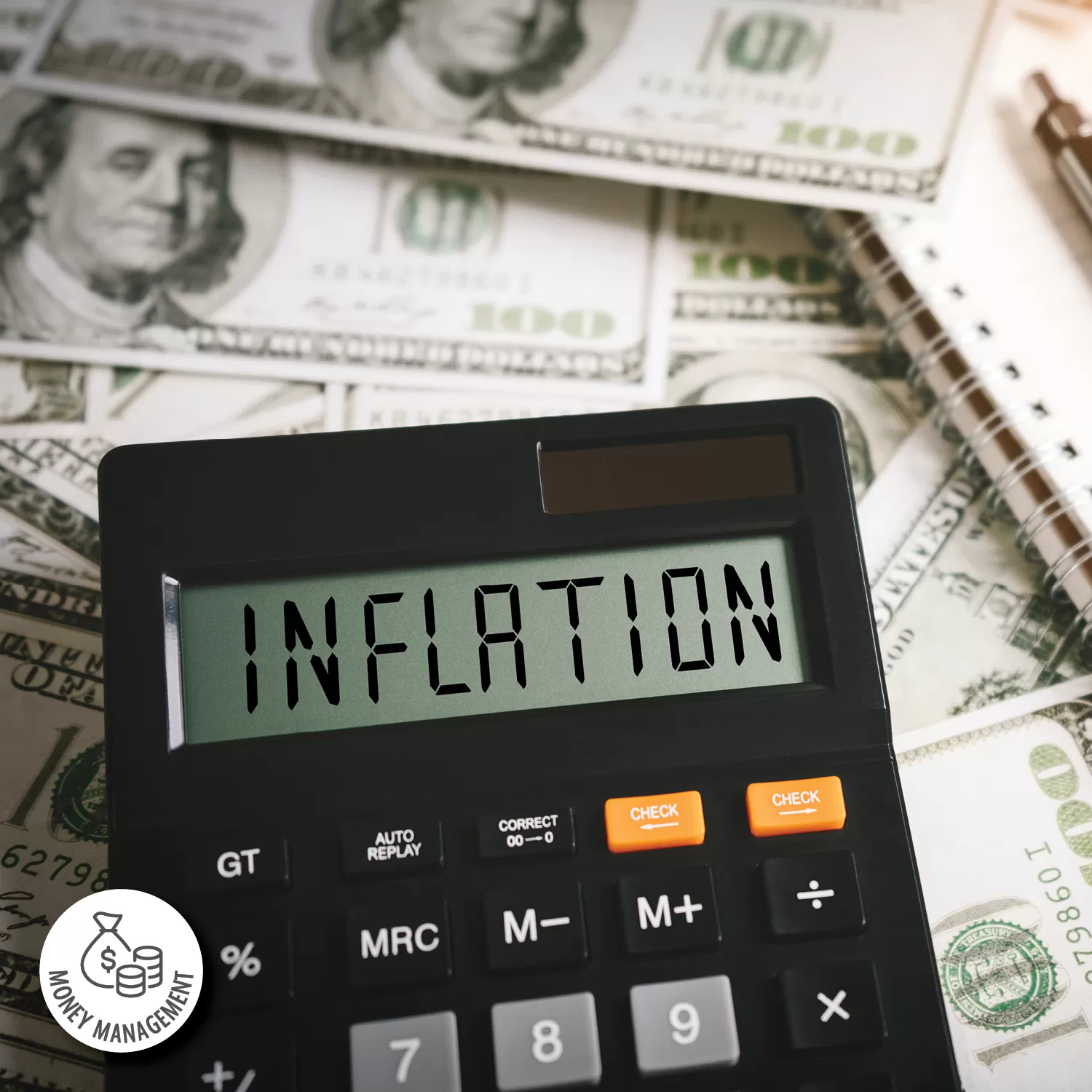
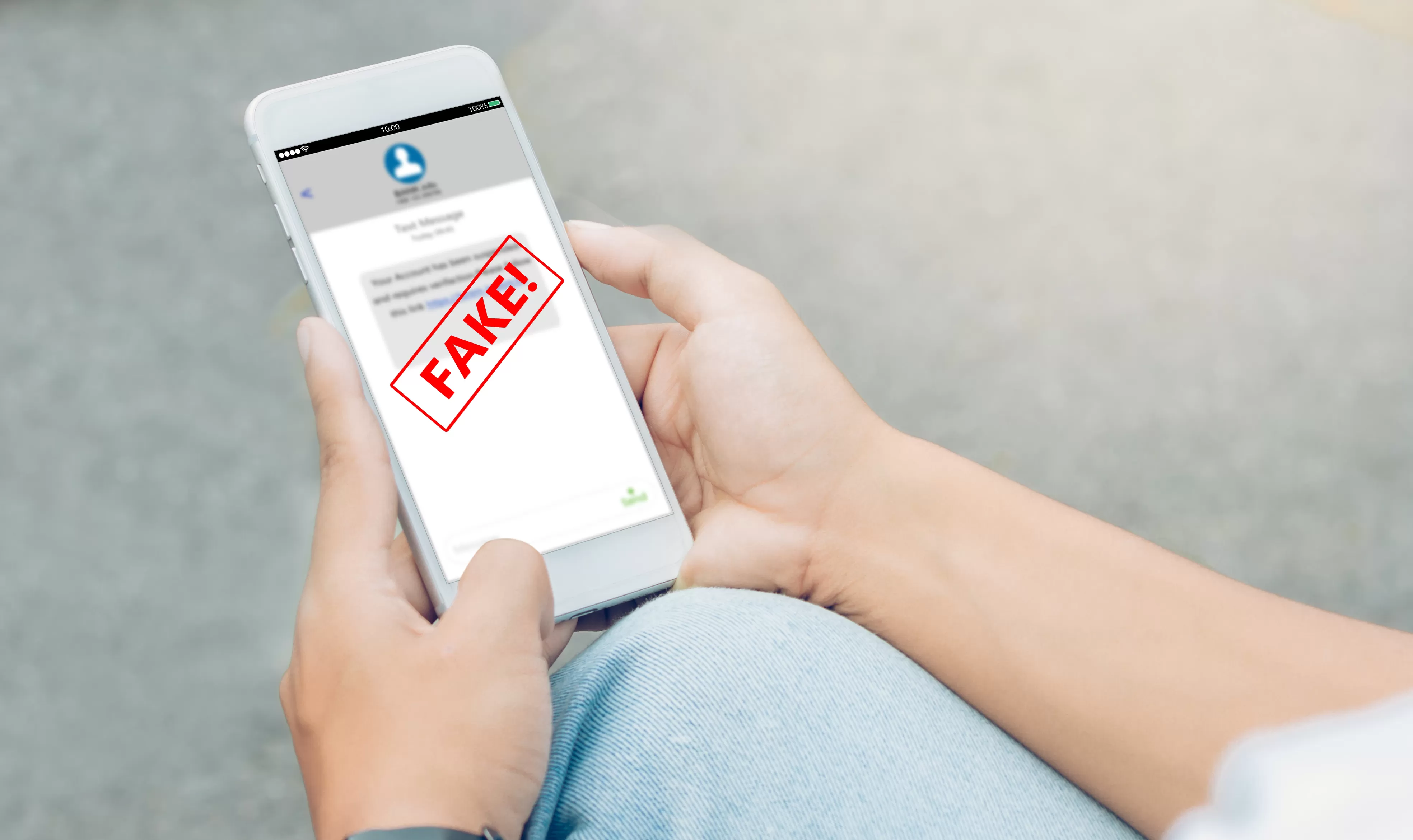


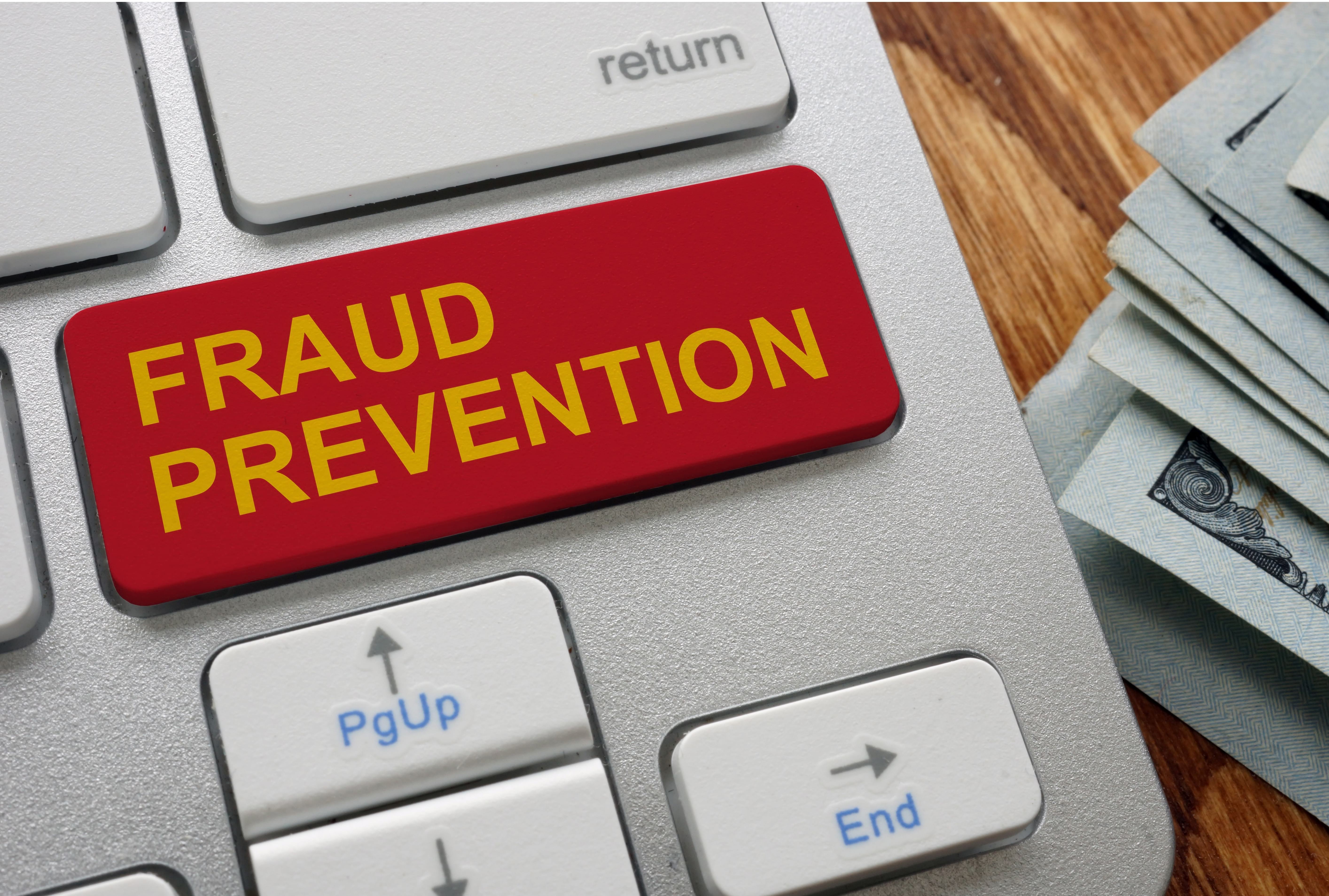

.jpg.webp)


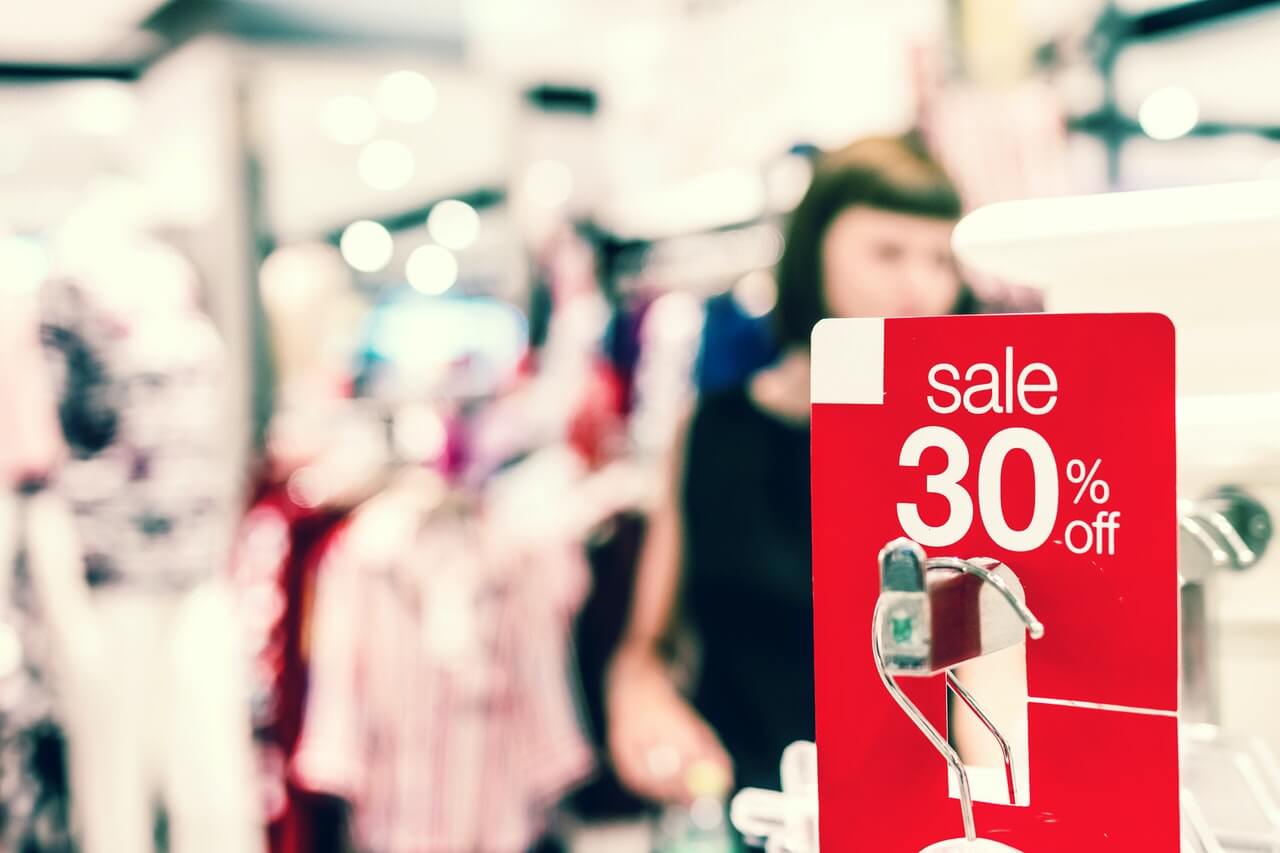




.jpg)


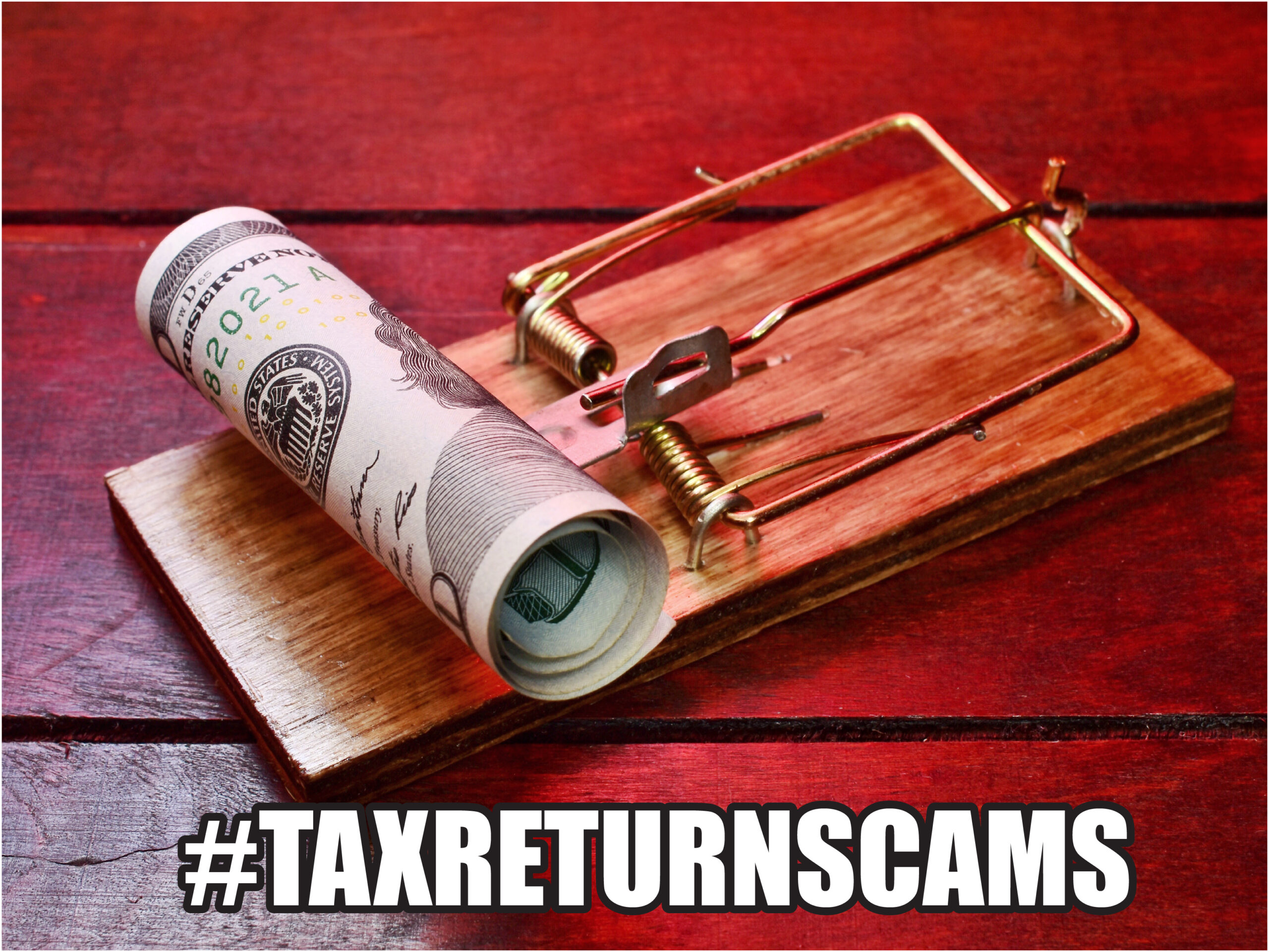
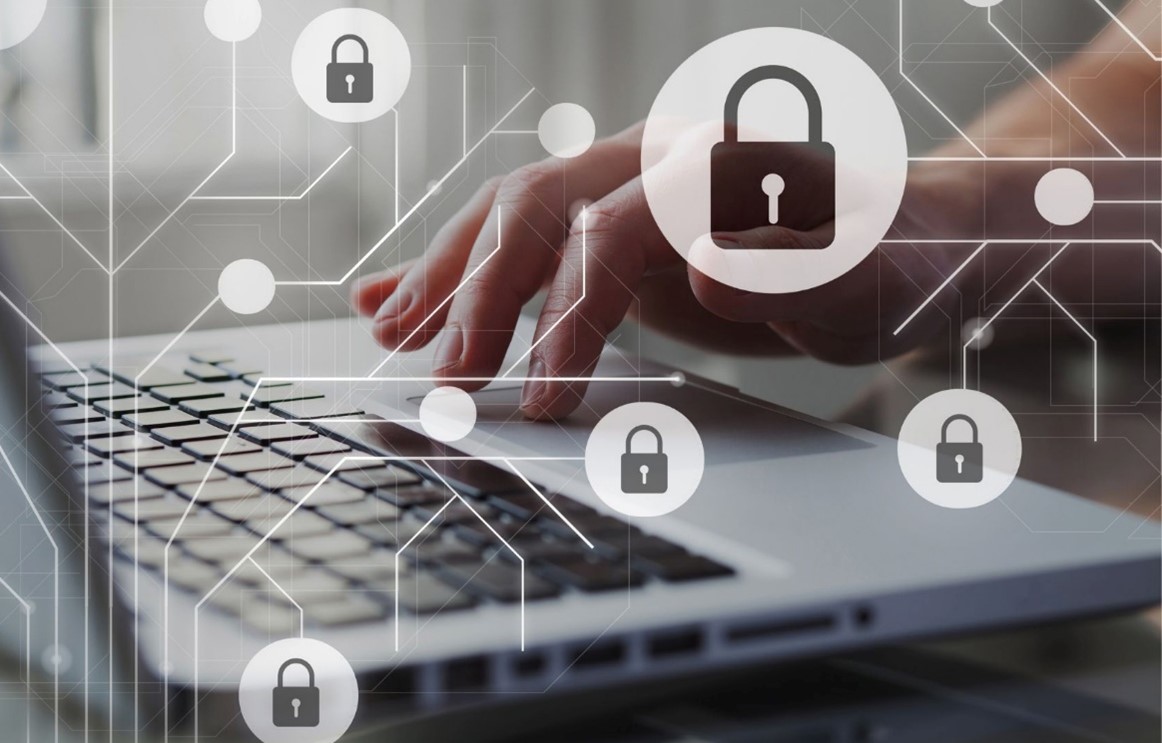




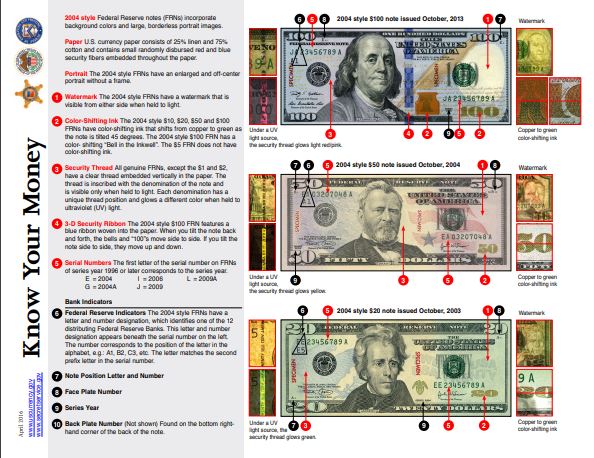







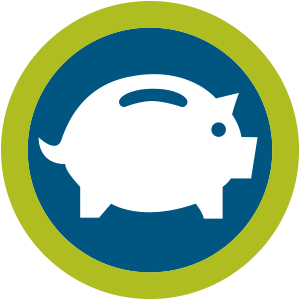 open
open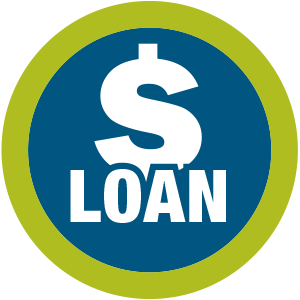 apply
apply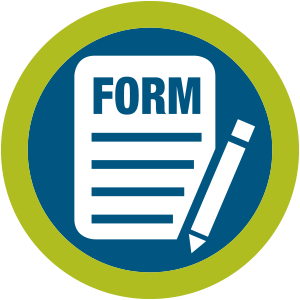 submit
submit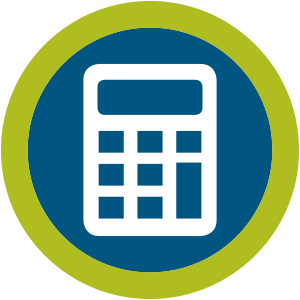 calculate
calculate